

17 Best Catamarans for Sailing Around the World
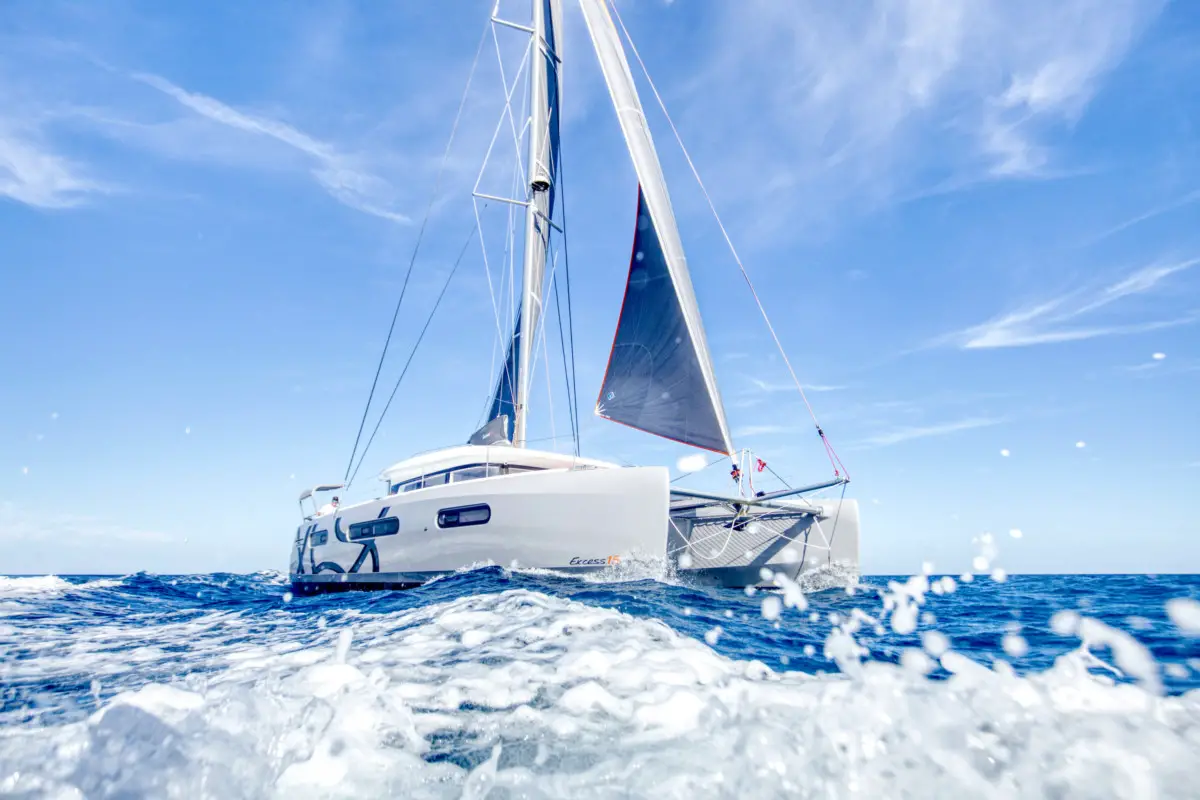
As an Amazon Associate, we earn from qualifying purchases. We may also earn commissions if you purchase products from other retailers after clicking on a link from our site.
Catamarans are quickly outstripping single-hull boats for long-distance journeys. They are more stable and comfortable , and some can travel more than 200 miles in a day. In today’s article, I have put together a complete (well almost) list of some of the best catamarans for circumnavigating the planet; the question is, which one is best for you?
The best catamarans for sailing around the world include:
- The Fountaine Pajot Ipanema 58
These cats focus on speed, safety, and comfort for longer journeys.
This article will show you the seventeen best catamarans for long journeys, and why they’re the best. You’ll also learn some great tips on what to look for in a Catamaran and how to save money by buying a used catamaran. Let this list be a jumping-off point for your future research!
Pro-tip; here are the actual costs of maintaining a cat and here are considerations on how to circumnavigate .
Table of Contents
The Best Catamarans for Sailing Around the World
A catamaran is a double-hulled boat with a deck or cabin area in between (bluewater cat definition in this article ). The double hull design means that the boat rocks less, sits higher on the water, uses less fuel to sail, and can be sailed in shallower waters than a single-hulled boat without worrying about grounding.
Catamarans come in a variety of sizes and can be sail-powered or motor-powered and range from single-person sailing boats to family-sized yachts. Every catamaran design is different, and the twin-hull shape offers many ways to customize the layout of a ship.
Each boat on this list is a larger catamaran (+40ft, more on size here ), so if you’re going to sail around the world, you want lots of space for provisions and rest.
Of course, there are tons of technical specs for each of these boats, but I’m going to focus on the overall features of each of these catamarans, what makes them stand out, and why they would each be an excellent choice for a transatlantic journey.
Antares 44i
The Antares 44i is an excellent option for sailing around the world and was explicitly designed for long-distance cruising. It performs well in any weather conditions, can be sailed easily by two people, and you’ll be able to sail long distances and live in comfort.
Although it can be easily sailed by a crew of two I believe that a true bluewater cat should be set up for single-handed sailing, more on that in another article .
This catamaran features a stateroom on each hull and a forward cabin with plenty of storage space. The living and entertainment features include a flatscreen tv and a high-end deck speaker system.
With this model, Antares dedicates itself to high-quality boats with optimal rigging and engine configurations.
Atlantic 42
Atlantic is no longer building this catamaran, but there are usually a few pre-owned boats on the market. You can also get it made custom if you love the design, but be prepared to spend more money on a custom boat (custom boat also gets custom problems ;)).
The Atlantic 42 is slightly smaller than some of the other catamarans on this list but is a seaworthy vessel. 42 ft is what most sailors I interview ( in this article ) said was the smallest cat to safely cross big oceans. It is also a decent size to counter the risk of capsizing (more on that here ).
It has a forward cockpit and pilothouse, which gives the owner a better use of space and makes the boat easier to navigate. With single-handed capability, one person can sail it easily and let the rest of the crew relax.
One of the best-praised aspects of the Atlantic 42 is its galley, more extensive than most 42-footers (12.8-meter) can offer.
One of the few 50 footers (15.24 meters) that can be sailed by just one person (many would of course disagree on this).
The Catana 50 is a catamaran worthy of an overseas journey. Its size adds to its stability on the open waters and its ability to sail straight through the choppy ocean and windy conditions.
The Catana is also incredibly spacious on the inside, with substantial cabins and showers. The biggest downside to the Catana 50 is its price, as it’s much more expensive than most of its competitors.
Catana also holds up well against some of the fastest cruising cats out there, here’s a list of the fastest cruisers if you are interested in that.
However, if you can find a gently-used Catana 50, you can rest assured that this boat will last!
The Dolphin 42 is unique because of the use of daggerboards instead of fixed keels. This upgrade means that the boat has some pretty decent upwind performance while at the same time being faster downwind.
Centerboards and daggerboards offer some interesting downsides compared to mini keels. This is an interesting discussion and I suggest you read another one of my articles if you want to deepen your knowledge a little.
These catamarans are some of the lightest on the market. Not many Dolphins were made, so they are relatively hard to find. However, if you want a small, lightweight boat capable of going great distances, the Dolphin 42 is an excellent choice.
Fountaine Pajot Belize 43
The Fountaine Pajot Belize is another well-built cruising yacht. Its core is made of foam instead of balsa, which reduces the risk of structural damage due to a rotten core in case of water intrusion.
The design of Belize offers many options for customizability, with large open spaces and a combined saloon, navigation, and dinette area.
There are two styles of Belize catamarans for sleeping quarters. You can either purchase a boat with an entire primary suite on one hull or one with two cabins in each hull. The first option is great if you are sailing the world alone and not expecting many guests, as it increases the storage capacity.
Understanding what factors to consider when getting a cat can be hard, there are just so many of them (such as the daggerboard discussion above), I have tried to compile some of the most important in this article .
The boat also has wraparound windows to increase the sense of space in the galley.
Fountaine Pajot Lucia 40
Fountaine Pajot is one of the best sailboat manufacturers existing today, as their boats are well made and highly versatile. The Lucia 40 is no exception – it’s a smaller boat but has a lot of room for moving around and on-board living.
The living area is remarkably spacious on this catamaran for its size.
The galley and lounge easily accommodate 6+people. The Lucia 40 doesn’t disappoint when it comes to sailing either, as the narrow hulls slice through choppy waters with ease.
Most catamarans today are built to withstand rough weather but that doesn’t matter as much if the crew isn’t up for the task, I firmly believe that the most important thing a boat should consist of, is knowledge. Therefore taking online courses ( two free here ) or reading books ( my favorites here ) is imperative.
Gemini 105M
Gemini’s boats have been on the market for years and are solidly built for cruising. This boat is one of the most popular ever made, I personally would consider something different for offshore cruising, but since it has such a good reputation, I felt I had to add it to the list.
If you want to understand why I am hesitant to take this boat around the world, I recommend you read my article: What are trampolines on a catamaran?
The Gunboat 62 is a great catamaran and set the standards for the rest of the impressive Gunboat lineup. It’s sleek and spacious while being robust and capable of transatlantic journeys. You can easily travel the world in a Gunboat 62 with several people and not feel cramped.
The yacht was made for speed and power and remains one of the fastest catamarans on the market, even rivaling the newer Gunboat models. GABO
Although the earlier models of the Gunboat 62 weren’t designed for a lot of cargo, you can still find space for everything you need without compromise.
Lagoon catamarans are known for their reliability and ease of use. If you are considering a catamaran for the first time and are unsure about the technicalities of sailing, a Lagoon boat is a great option.
The Lagoon 380 is probably the smallest cruiser on this list, which makes it better suited for solo or couple sailing.
When I go looking to buy something, whether it be a boat, campervan, or whatever, I create a checklist and classify all the things I want either by NEED or NICE to have.
I believe the Lagoon 380 to be sub-optimal for my NEEDS, even though it does check a lot of NICE boxes, there’s a step-by-step article on the NEED and NICE method here .
There are several cabin options available on the Lagoon 380, but if you’re sailing by yourself, you can settle for three cabins and a larger galley and living space. With a smaller cockpit and broader side decks, the Lagoon 380 packs a lot of practicality and ease of sailing into a more compact catamaran.
If you like the idea of a Lagoon boat but want a little more space, the Lagoon 42 is the upgraded version of the Lagoon 380. With all of the same benefits, it comes with more space for cabins or storage, making it one of the best-selling Lagoons of all time.
The Lagoon 42 is also a faster cruiser built for strength. While it’s not the fastest on the market, it works well in choppy waters and windy conditions, making it great for the beginning sailor to go on a more extended trip.
Many people have completed an around-the-world sail with this ship.
Although there is a flybridge version, I would recommend the “open” version due to several factors, some including increased windage and a higher boom. More on flybridges pros and cons here .
For stability, safety, and durability, you can’t beat the Lagoon 42.
The Leopard 45 performs better with less storage weight because of the relatively low bridge deck clearance. If the boat is fully loaded, you could experience some wave pounding. However, the cockpit is open and airy, with devices that block the sun and provide maximum comfort while sailing.
The Leopard 45 is an incredibly beautiful boat, and has a strong reputation for excellent build quality!
Leopard catamarans are one of my personal favorites, as such I have written an entire article about the brand, so if you want to understand its pros and cons then here is the link . Gabo
Designed in South Africa, it features a high rear arch for extra support and very smoothly connected decks. The galley is large and open, and most Leopards offer a four-cabin plan. If you are traveling with another person, this boat is an excellent option for you!
The Manta 42 is another classic catamaran that you can buy used (at a decent price), as it is an incredibly seaworthy vessel. While still in production, the Manta was one of the most popular catamarans on the market.
It is still in high demand amongst circumnavigators. Buying a used Manta 42 usually means that you inherit some of the previous owner’s boat upgrades!
The Manta 42 also made it to my list of the 9 safest catamarans on the market ( link ).
This blue water cat can be sailed by one or two people, making it ideal for liveaboard couples or long-distance shorthanded sailing. The galley is in the saloon ( instead of in one of the hulls ), making the cabins below more spacious and better equipped.
Overall, the Manta is well equipped for sailing around the world.
Nautitech 44
Nautitech is an excellent brand of the catamaran, with several different designs per boat. The Nautitech 44 has a unique feature, you can have it with two options for steering: twin wheels or a single wheel.
The Nautitech 44 also features a cockpit on the same level as the saloon. The door between the two is more convenient than a hatch and dramatically reduces the risk of water damage during rain pour.
This is also the same boat that aeroyacht president Gregor owns, he has offered some great insights into Nautitech in the book Catamarans (amazon link )
Outremer 45
Outremer is famous for being one of the fastest brands of catamarans on the market. If you need speed, the Outremer 45 might be the perfect choice for you. It has a top speed of 16 knots, which is higher than almost every other catamaran of its class.
While the Outremer 45 is known for speed, it doesn’t compromise on the quality of living.
You can settle into life on this boat with complete peace of mind. Even as a beginning sailor, the steering is simple and easy to use, and the autopilot is top of the line, so you’ll be able to sail across the ocean in an Outremer without issue.
Privilege Serie 5
A French-designed catamaran, the Privilege Serie 5 is one of the most comfortable 50-foot (15 m) yachts available. The unique cabin layout includes the master cabin in the boat’s center instead of in one of the hulls.
The Privilege Serie 5 is also incredibly easy to sail, despite its larger size.
The sails and controls lead to the helm, where the raised deck makes it easy to see all around the deck. If you want to cross the ocean with a full crew then the Privilege Serie 5 might be perfect for you!
Seawind 1000
The Seawind 1000 is the smallest boat on this list, measuring 33 feet (10 meters) long altogether. However, this doesn’t mean that it’s not livable. If you are sailing on your own or with a partner, there is more than enough space to live in the Seawind 1000, which includes the option of a centered cabin or two hull cabins.
Because it’s small, the Seawind 1000 is easy to handle. The mast and sails are all manufactured for extra stability and ease of use.
Overall, the Seawind 1000 is an excellent example of a simple, safe, and seaworthy catamaran.
Note: since this is a small catamaran it will also be more sensitive to heavy weather so trip-planning becomes even more important.
The Voyage 44 is one of the oldest cats on this list, having had its hay-day in the mid-1990s. However, this also means that a used Voyage 44 will be cheaper than a newer boat. If you can find a Voyage with previous responsible owners, you will inherit any upgrades and fixes that they’ve made on top of a very seaworthy boat.
The Voyage 44 has more storage and space than most cruisers of its size and is known for behaving very well in choppy waters.
This catamaran does its job well while providing adequate space for cooking, sleeping, and living aboard.
What To Look For in a Long-Distance Cruising Catamaran
If you are planning to sail around the world, you need to be very careful about which kind of catamaran you decide to use. Many of the things you want in a boat really comes down to personal preference, so be sure you know what design preferences you want before you start shopping!
Size and Payload
The most important thing to consider when buying a catamaran is how much space and cargo you need because the larger the boats are, the bigger the payload it can handle. Decide how long you want the ship to be and how much you’re taking with you.
It’s vital not to overload a catamaran, this will reduce performance and increase risk of unwanted behavior in heavy seas.
Cabin Placement
Most catamarans have options for a “Maestro” cabin placement, where one entire hull is the master suite, and the other cabins are located on the opposite hull.
Cockpit and Protection From The Weather
Is the cockpit on the boat you’re looking at covered or open? This can make a difference on the high seas, especially during rainy weather.
The size of the ship also can affect how many people you need as a crew. If you’re traveling by yourself or with one other person, you don’t want to buy a boat that needs a larger crew.
Buying Used?
If you don’t want to spend the money on a brand new catamaran, I don’t blame you. Several of the ships on this list are out of production and can only be found used. However, for circumnavigation, you do want a boat of high quality to keep you safe and dry until you make it to your destination.
When buying a suitably used catamaran, it’s essential to look at the refit history of the boat more than the year it was made. Catamarans are sturdy, and the general design has been the same for at least the past decade.
If you find a newer, larger, cheaper boat, you should look into its history.
Your best bet to save money while buying a catamaran will be to buy an older, probably smaller boat with an excellent refit history and no serious issues. It will still be an investment, and a sturdy used catamaran will serve you well.
Final Thoughts
No matter which catamaran you decide to buy for your journey, you’ll be able to sail safely and comfortably. Catamarans are great yachts for long-distance sailing, and the ships on this list are the best of the best. These brands are time-tested and ready to accompany you on an adventure around the world!
Here are Some of My Favorite Catamaran Cruising Resources
Thank you for reading this article. I hope you found it helpful as you hopefully start your sailing adventures. Here are some resources that I use as a sailor that I hope you’ll also find helpful. These are affiliate links, so if you do decide to use any of them, I’ll earn a commission. But in all honesty, these are the exact things that I use and recommend to everyone, even my own family. Sailboats: If you’re looking for the best boat to suit your needs, I would recommend a catamaran. If you’re interested, I can show you the differences between catamarans and other types of sailboats .
Books: For getting started, I really like Cruising catamarans made easy . It is actually a textbook from the American sailing association; it is used to get a cruising catamaran certification. There are some other great books, and I have compiled a list of books about cruising catamarans that you will find useful.
Communication: Being out on adventures, whether it be sailing or climbing mountains, good communications are essential to being safe. I recommend two things Google fi (incredibly simple cellular data all over the world) and Garmin inreach mini (for text and voice in remote areas without cell coverage)
Sailing courses: Online sailing courses are great for beginners starting out their sailing career; it’s an efficient way of learning the basics of navigation, throttle controls, and maritime safety. I suggest starting with two free courses from NauticEd .
To see all my most up-to-date recommendations, check out this resource that I made for you!
- Wikipedia: Catamaran
- Cruising World: A-Z Best Cruising Catamarans
- Dreamy Yacht Sales: Four Best Catamarans for New Buyers
- Atlantic Cruising: Good Cat/Bad Cat
- Yachting World: Catamaran Sailing Across the Atlantic
- Boat Affair: What is a Catamaran?
- Nautilus Sailing: Catamaran Sailing
Owner of CatamaranFreedom.com. A minimalist that has lived in a caravan in Sweden, 35ft Monohull in the Bahamas, and right now in his self-built Van. He just started the next adventure, to circumnavigate the world on a Catamaran!
3 thoughts on “ 17 Best Catamarans for Sailing Around the World ”
I like the efforts you have put in this, regards for all the great content.
Thanks Elisabeth I really appreciate the kind words 🙂
I appreciate you sharing this blog post. Thanks Again. Cool.
Leave a Reply Cancel reply
Your email address will not be published. Required fields are marked *
Save my name and email in this browser for the next time I comment.
Recent Posts
Must-Have Boat Gear for Catamaran Sailors!
Sailing is probably the most gear-intensive activity I've ever done; there are so many decisions to be made about what gear to buy now, for tomorrow, and what to definitely never buy. The gear on...
6 Best Trailerable Trimarans For Bluewater and Coastal Sailing
Having a boat costs a lot of money, even when you are not using it, marina fees, etc. And once it is in the water most sailors never go very far from their "home marina" and sailing will be somewhat...
13 Best Liveaboard Catamarans (For All Budgets)
If you want to enjoy long-term living on the water, a liveaboard catamaran can provide the perfect combination of comfort and adventure. However, buying and owning a catamaran can cost you a fortune. If you're not sure which one suits your budget, here are 13 of the best liveaboard catamarans on the market today, covering a range of budgets and lifestyles.
The 13 best liveaboard catamarans for different budgets are:
Nautitech 46 Open
Lagoon 450f, nautitech 46 fly.
If you're on a tight budget but still want to enjoy the liveaboard lifestyle, the Leopard 40, Lucia 40, and Lagoon 400 are some of your best options. If you have a slightly higher budget to live up to your dream life aboard, let's see which of these catamarans will suit your needs best.
- Low-budget liveaboard catamarans cost anywhere from $350,000 to $450,000, while high-budget options range from $1,000,000 to $2,000,000.
- The living space of the best liveaboard catamarans ranges from 77 sqm to 215 sqm, with the higher-budget options generally offering more space.
- Most catamaran models come equipped with one galley and multiple heads, with the number of heads ranging from 2 to 4.
- High-budget catamarans like Lagoon 52 and Catana 50 are built with advanced safety features such as a self-tacking jib and an automatic reefing system.
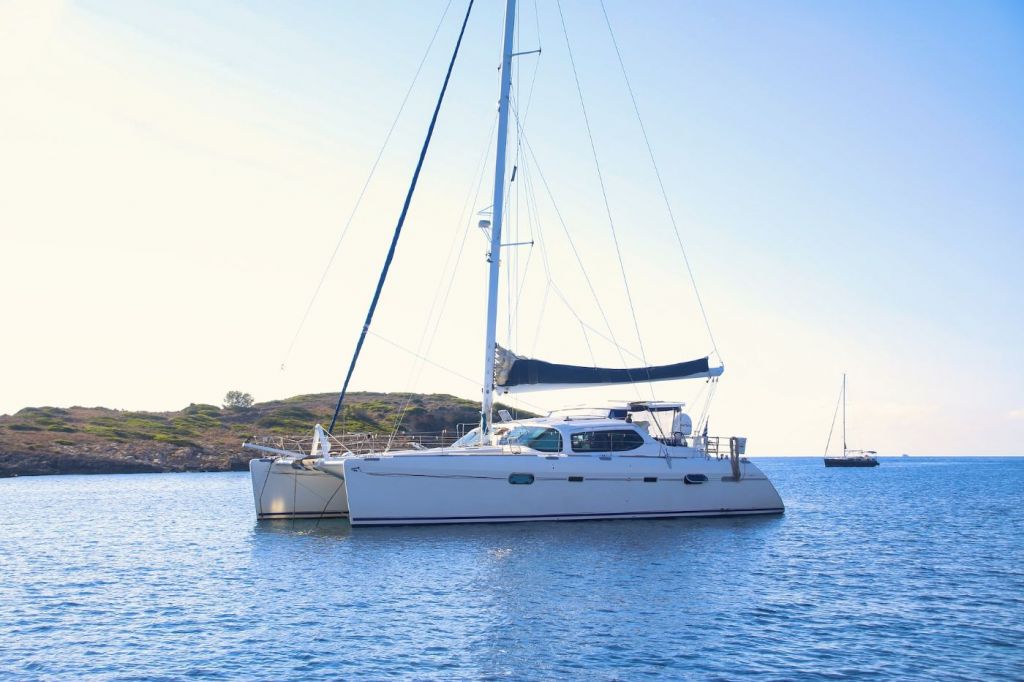
On this page:
Best liveaboard catamarans for all budgets.
When choosing the best liveaboard catamaran, there are questions you need to ask yourself such as:
- Are you planning to live aboard full-time or just part-time?
- Will you be traveling extensively or staying in one location?
- Do you plan to fish or engage in other water activities?
If you plan to sail around the world and are not sure what catamaran size is perfect for your goal , you can get some tips from this article.
You may also need to check your budget. Keep in mind that the purchase price is just one aspect of the cost of owning a catamaran. See how much it actually costs to buy and own a catamaran in this article.
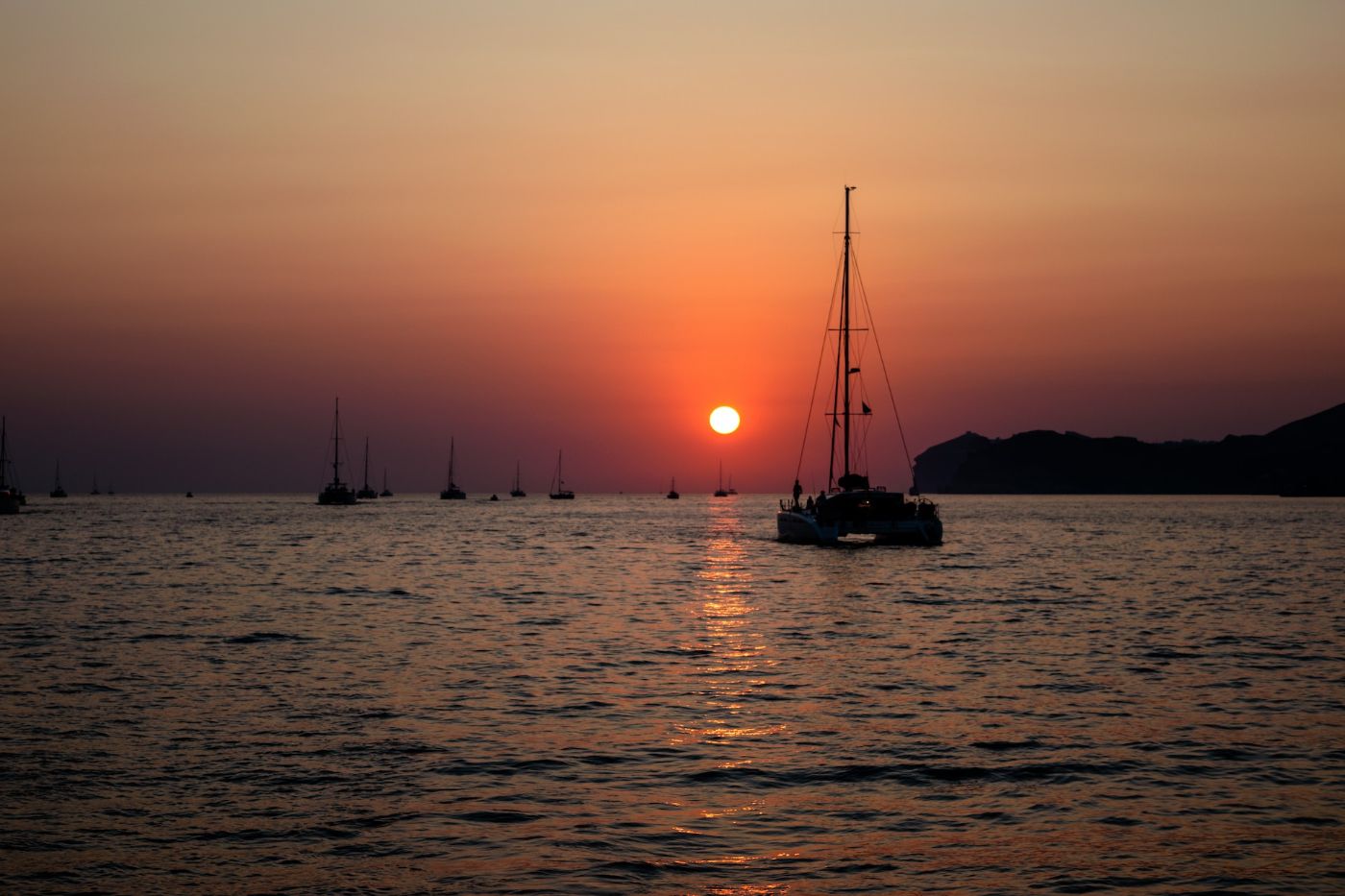
You may also need to factor in ongoing maintenance, repairs, and other expenses, such as docking costs. Docking costs depend on the location of the marina and the actual size of your catamaran, but to give you an idea of how much it costs to dock a catamaran , here's an article that can help you.
The best liveaboard catamarans have these most important features :
Living space Look for a catamaran with an open layout, large windows, and plenty of natural light to create a spacious and inviting living area.
Galley and heads Choose a catamaran with a well-designed galley that is easy to use and has plenty of storage space. The heads should be spacious and comfortable, with a separate shower area if possible.
Performance and handling You might want to opt for a catamaran with a good sail plan and sailing controls that are easy to operate. If you plan to do offshore cruising, perhaps consider a catamaran with a shallow draft and good seaworthiness.
Safety and seaworthiness Choose a catamaran with sturdy construction and good safety features, such as handrails and lifelines. You might want to make sure also that the catamaran is designed for single-handed sailing if you plan to sail solo.
Estimated price range: $400,000 - $500,000
Living space inside Leopard 40
The Leopard 40 has a spacious interior with a modern and stylish design. It features four cabins and two heads, providing ample living space for up to 8 people.
The cabins are well-ventilated and well-lit, with large windows that offer panoramic views of the sea. The saloon is also spacious, with comfortable seating and a large dining table.
Galley and heads of Leopard 40
The galley is well-equipped with a large refrigerator, freezer, gas stove, oven, and plenty of storage space. The heads are also well-designed, with separate shower stalls and electric toilets.
Performance and handling of Leopard 40
The Leopard 40 has a sleek and streamlined design that allows it to move smoothly through the water. The twin engines provide plenty of power, and the boat is easy to maneuver even in tight spaces.
The boat also comes with a range of performance features, such as a large sail area, a self-tacking jib, and a full-batten mainsail.
Safety and seaworthiness of Leopard 40
The Leopard 40 is built to the highest standards of safety, with a strong and durable hull, high-quality rigging, and a range of safety features such as lifelines, handrails, and safety harnesses.
The boat also has excellent stability, which makes it very safe and comfortable to sail in rough seas.
Estimated price range: $450,000 - $550,000
Living space inside Lucia 40
The Lucia 40 is a spacious catamaran that offers plenty of living space for a family or a group of friends. It has a large saloon with a U-shaped sofa and a dining table that can comfortably seat six people.
The saloon is surrounded by large windows that provide plenty of natural light and a great view of the surroundings. The catamaran has four cabins and two heads, which provide ample sleeping space for up to eight people. The cabins are well-appointed and offer plenty of storage space.
Galley and heads of Lucia 40
The galley on the Lucia 40 is located in the saloon and is well-equipped with a three-burner stove, oven, fridge, and plenty of counter space for food preparation.

The two heads are located in each hull and are equipped with a shower, toilet, and sink. They are spacious and provide plenty of privacy.
The Lucia 40 is a performance-oriented catamaran
The Lucia 40 is a performance-oriented catamaran that is designed for cruising in comfort. It has a sleek and modern design that allows it to sail efficiently in a wide range of wind and sea conditions.
The catamaran is equipped with a full batten mainsail and a furling genoa, which provide excellent sail performance. The helm station is located on the flybridge, which provides excellent visibility and allows for easy handling.
The Lucia 40 is a safe and seaworthy catamaran
The Lucia 40 has a solid fiberglass hull and a structural bulkhead that provides excellent strength and rigidity. The catamaran is equipped with all the necessary safety equipment, including life jackets, flares, fire extinguishers, and a first aid kit.
It is also equipped with a comprehensive navigation system, which includes GPS, radar, and an autopilot, to ensure safe and accurate navigation.
Estimated price range: $350,000 - $450,000
Living space inside Lagoon 400
The Lagoon 400 offers ample room for passengers to relax and socialize. The main saloon is located on the same level as the cockpit, creating a seamless indoor-outdoor living experience.
The saloon features a large dining table and comfortable seating, while the cockpit provides additional seating and a table for outdoor dining. The cabins are also spacious and comfortable, with plenty of storage space.
Galley and heads of Lagoon 400
The galley is well-equipped with a stove, oven, refrigerator, and sink, making it easy to prepare meals while underway. The heads are also well-designed, with separate shower stalls and electric toilets.
The Lagoon 400 has good sailing performance
This boat has a generous sail area, a powerful rig, and a light displacement, which allows it to sail well in a variety of conditions. The boat's twin hulls also help to reduce drag and increase stability, which makes it easier to sail in choppy seas or high winds.
The Lagoon 400 is also equipped with twin engines, which allow it to be easily maneuvered in tight spaces or when docking. The boat's shallow draft, which is one of the advantages of sailing a catamaran , also makes it suitable for exploring shallow waters or anchoring in secluded bays.
The Lagoon 400 is designed to be safe and seaworthy
The boat's twin hulls provide excellent stability, which reduces the risk of capsizing. See a detailed comparison between catamaran and monohull in this article.
The boat is also equipped with a range of safety features, including a solid fiberglass hull, watertight bulkheads, and a high freeboard, which helps to keep the boat dry and reduce the risk of swamping.
The boat is also built to withstand rough seas and strong winds, with a reinforced hull and high freeboard. It also features a range of safety features, including lifelines, safety harnesses, and an emergency tiller.
The Bali 4.0 is a catamaran that offers ample living space
The cockpit and saloon are on the same level, which creates a large open-plan living area. The saloon has a U-shaped seating area, which can comfortably seat six people, and a large table that can be lowered to create a double berth.
Galley and heads of Bali 4.0
The galley of Bali 4.0 is located aft of the saloon and is well-equipped with a three-burner stove, oven, refrigerator, and sink. The boat has four cabins, each with its own en-suite head and shower. The cabins are spacious and comfortable, and the heads are modern and well-designed.
Performance and handling of Bali 4.0
The Bali 4.0 has a self-tacking jib and a fully battened mainsail, which makes it easy to sail short-handed. The boat is also equipped with a Code 0 sail, which provides additional downwind performance. The boat's helm is responsive and easy to control, and the boat is stable and predictable in a variety of conditions.
Safety and seaworthiness of Bali 4.0
The Bali 4.0 is a seaworthy boat that is designed to be safe and comfortable in a variety of conditions. The boat has a high freeboard, which provides additional safety and protection from waves and spray.
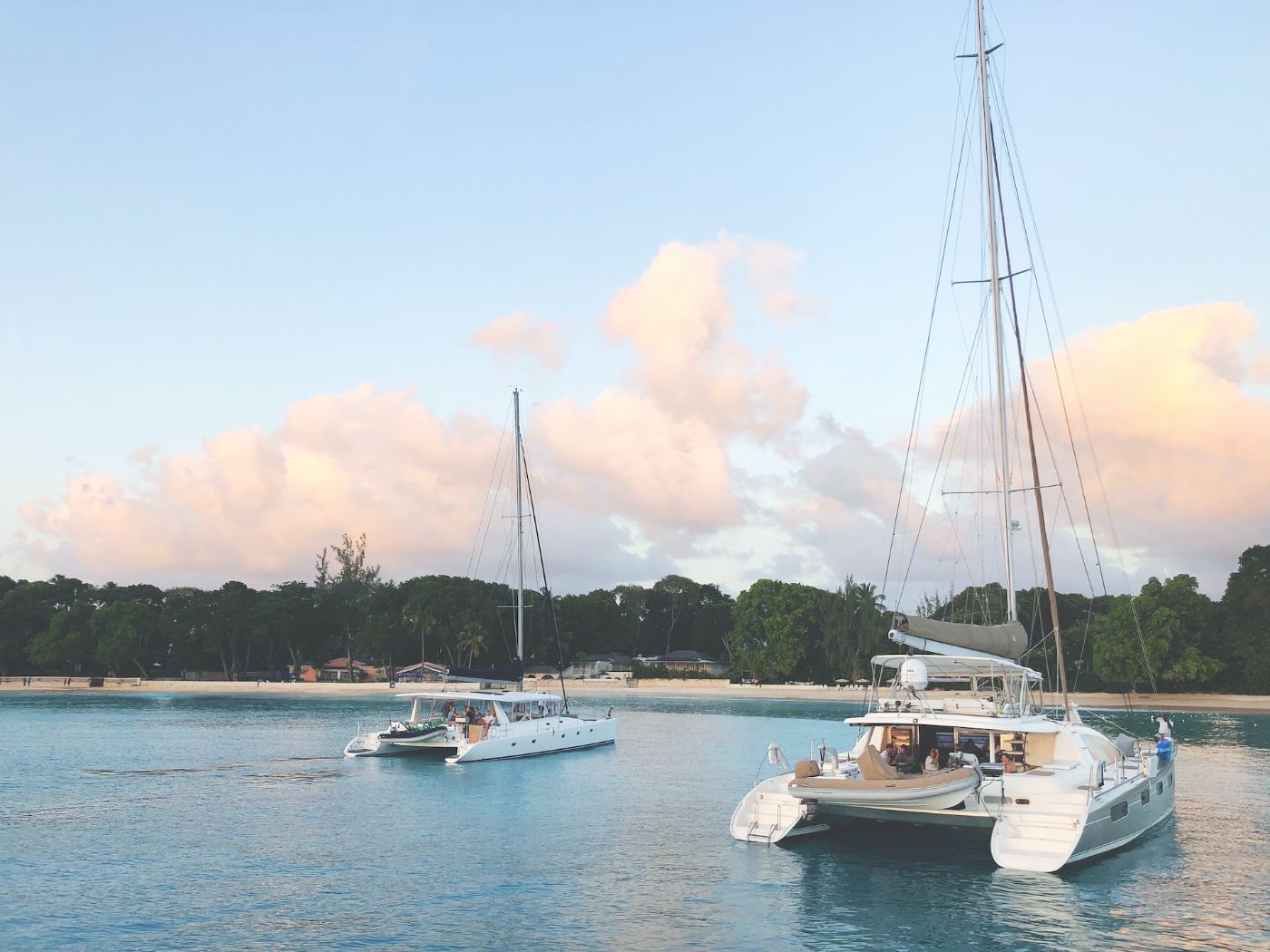
The boat also has a solid foredeck, which provides additional safety when moving around the boat. It is also equipped with a full suite of safety equipment, including life rafts, life jackets, and safety harnesses.
Estimated price range: $500,000 - $600,000
Living space inside Bali 4.3
The Bali 4.3 has a large saloon with panoramic views, plenty of natural light, and a modern design. The saloon is equipped with a large U-shaped sofa, a dining table, and a chart table. The cockpit is also spacious and features a dining table, a sunbathing area, and a helm station.
Galley and heads of Bali 4.3
The galley and heads on the Bali 4.3 are well-designed and offer plenty of space and storage. It is located in the saloon and features a 3-burner stove, an oven, a large refrigerator, and plenty of counter space. The heads are located in each hull and feature a separate shower, electric toilets, and plenty of storage.
The Bali 4.3 is a fast and agile catamaran. It features a self-tacking jib and a square-top mainsail, which make it easy to handle and maneuver. The boat is also equipped with twin engines, which provide good speed and maneuverability.
The Bali 4.3 is a very safe and stable catamaran
The Bali 4.3 features a solid construction, a high freeboard, and a wide beam, which make it very stable and comfortable even in rough seas. The boat is also equipped with a number of safety features, including lifelines, safety harnesses, and life jackets.
Living space of Catana 42
The Catana 42 has a spacious interior layout with plenty of natural light and ventilation. The saloon and cockpit are integrated into one living area, which provides a comfortable and functional living space.
Galley and heads of Catana 42
The galley is located in the port hull and features a three-burner stove, oven, refrigerator, and ample storage space. The heads are located in the starboard hull, with one head serving as the owner's suite en-suite and the other serving the remaining three cabins.
The Catana 42 an excellent performer
The catamaran is designed to be fast and stable, with a high bridge deck clearance and a narrow hull-to-waterline beam ratio. It also has a large sail area, which provides good speed in light winds.
The Catana 42 is built with safety and seaworthiness
The boat is designed to be self-righting in the event of a capsize , and the hulls are foam-filled for added buoyancy. The boat also features a robust construction with a reinforced keel and rudder, making it suitable for offshore cruising.
Estimated price range: $600,000 - $700,000
Living space of Nautitech 46 Open
The Nautitech 46 Open is a spacious and comfortable catamaran that offers ample living space, a well-equipped galley, and multiple heads for convenience. The living area is open and airy, with large windows and plenty of natural light.
Galley and heads of Nautitech 46 Open
The galley is fully equipped with modern appliances and ample storage space, making it easy to prepare meals and entertain guests. The heads are also well-appointed, with modern fixtures and plenty of space for comfort.
Performance and handling of Nautitech 46 Open
The Nautitech 46 Open is a capable and responsive catamaran that is easy to sail and maneuver. The boat's twin hulls provide excellent stability and make it easy to handle in a variety of conditions.
The boat's rig is designed for performance, with a large sail area and a well-balanced design that allows for easy handling and excellent speed.
Safety and seaworthiness of Nautitech 46 Open
The boat is built to the highest standards of safety and durability, with a strong and sturdy construction that can withstand the rigors of offshore sailing. The boat is also equipped with all the necessary safety features, including life rafts, life jackets, and safety harnesses, to ensure that you and your crew stay safe on the water.
Estimated price range: $700,000 - $800,000
Living space inside Lagoon 450F
The Lagoon 450F is a spacious catamaran that offers plenty of room for living and entertaining. The saloon is large and open, with plenty of natural light and ventilation.
The cockpit is also spacious and comfortable, with a large dining table and seating for up to eight people. The cabins are well-designed and offer plenty of storage space, and the bathrooms are modern and well-appointed.
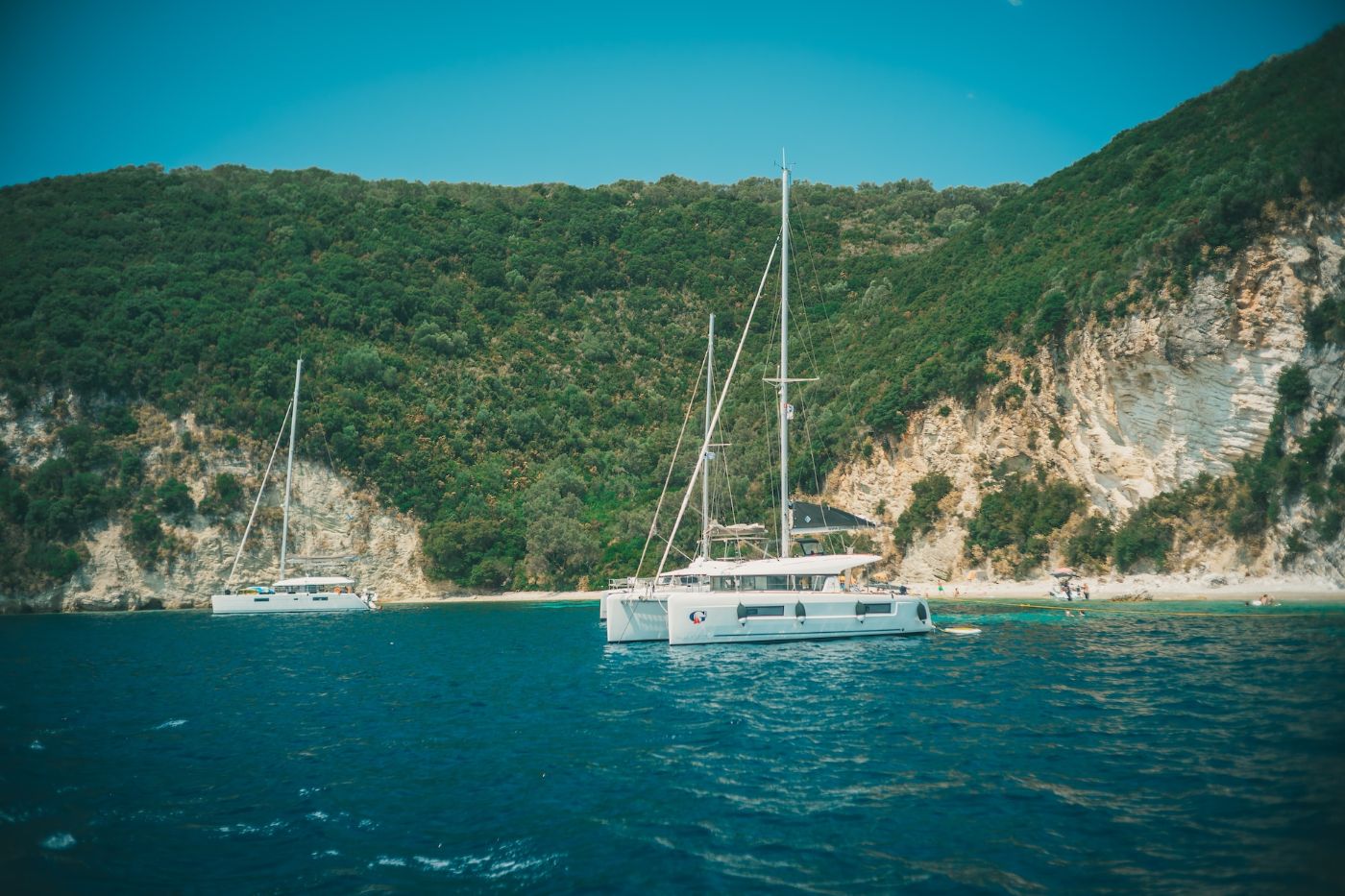
Galley and heads of Lagoon 450F
The Lagoon 450F has a well-equipped galley that is perfect for preparing meals while at sea. The galley features a large refrigerator and freezer, a three-burner stove, an oven, a microwave, and plenty of counter space. The heads are also well-designed and offer plenty of space and privacy.
Performance and handling of Lagoon 450F
The Lagoon 450F is a fast and stable catamaran that is easy to handle. The boat is powered by two Yanmar diesel engines, which provide plenty of power and speed.
The boat is also equipped with a high-performance sail plan, which allows for easy and efficient sailing.
The Lagoon 450F is designed to handle a variety of weather conditions
This boat is built to the highest standards of safety and quality and is equipped with all of the necessary safety equipment, including life rafts, life jackets, and emergency flares.
The boat is also designed to be self-sufficient, with a large water tank and generator, which allows for extended periods of time at sea.
Living space inside Helia 44
The Helia 44 has a spacious and well-designed interior that maximizes living space. The saloon features large windows that provide plenty of natural light and offer stunning views of the surrounding scenery.
The seating area is comfortable and can accommodate up to 8 people. The cabins are also spacious and well-appointed, with plenty of storage space and en-suite bathrooms.
Galley and heads of Helia 44
The galley on the Helia 44 is well-equipped and designed for easy use. It features a large refrigerator, a 3-burner gas stove, an oven, and a microwave. The heads are also well-designed, with separate shower stalls and plenty of storage space.
The Helia 44 is designed for excellent performance and handling
The Helia 44 has a powerful rig and a high aspect ratio sail plan that provides excellent speed and maneuverability. The boat also has a shallow draft, which makes it easy to navigate in shallow waters.
The Helia 44 is built to the highest safety standards
This boat has a solid construction that provides excellent stability and strength. It also features a range of safety equipment, including life rafts, EPIRBs, and fire extinguishers.
Estimated price range: $700,000 - $1,000,000
Living space inside Leopard 48
The Leopard 48 features a spacious saloon with a comfortable seating area and a large dining table. The saloon is surrounded by panoramic windows that provide plenty of natural light and stunning views of the surrounding scenery.
The catamaran also has a large cockpit area with a dining table and comfortable seating, perfect for outdoor dining and relaxation.
Galley and heads of Leopard 48
The galley on the Leopard 48 is well-equipped with modern appliances and ample storage space. It features a large refrigerator, a freezer, a three-burner stove, and an oven. The catamaran also has three heads, each with a shower, sink, and toilet.
Performance and handling of Leopard 48
The Leopard 48 is a high-performance catamaran that is easy to handle and maneuver. It has a powerful sail plan and lightweight construction that allows it to sail smoothly and efficiently even in light winds.
The catamaran is also equipped with a powerful engine that provides excellent speed and maneuverability.
Safety and seaworthiness of Leopard 48
The Leopard 48 is a safe and seaworthy catamaran that is designed to handle even the toughest ocean conditions. It has a sturdy construction and a stable platform that provides excellent stability and safety.
The catamaran is also equipped with modern safety features such as a GPS navigation system, a radar, and an autopilot.
Estimated price range: $600,000 - $900,000
Living space inside Nautitech 46 Fly
The Nautitech 46 Fly is a spacious catamaran that offers plenty of room for living and entertaining. The interior is bright and airy, thanks to large windows and an open floor plan.
There are four cabins and four heads, making it a great option for families or groups of friends. The salon is comfortable and features a dining area and a well-equipped galley.
Galley and heads of Nautitech 46 Fly
The galley on the Nautitech 46 Fly is well-equipped with a refrigerator, freezer, stove, oven, and plenty of counter space. There is also a double sink and a dishwasher. The heads are spacious and comfortable, with separate shower stalls and electric toilets.
Performance and handling of the Nautitech 46 Fly
The Nautitech 46 Fly is a pleasure to sail, with good speed and handling. The boat is responsive and easy to maneuver, even in tight spaces. The twin engines provide plenty of power and make docking and maneuvering a breeze.
The Nautitech 46 Fly is a safe and seaworthy vessel
The boat is designed to handle rough seas and strong winds, making it a great option for offshore sailing. There are also plenty of safety features, including lifelines, safety harnesses, and a well-equipped first aid kit.
Estimated price range: $1,000,000 - $2,000,000
The living space of Catana 50
The living space is designed for comfort and entertainment. The spacious saloon offers panoramic views and ample seating for guests.
The interior is finished with high-quality materials and features modern amenities such as air conditioning, a fully equipped galley, and plenty of storage space. It also has four spacious cabins and four heads, making it ideal for families or groups of friends.
Galley and heads of Catana 50
The galley on the Catana 50 is well-equipped with a large refrigerator, freezer, oven, and stove. The countertops are made of durable and easy-to-clean materials, and there is plenty of storage space for food and cooking utensils. The heads are spacious and feature modern fixtures and finishes.
The Catana 50 is designed for performance and speed
The catamaran's lightweight construction and high-tech materials make it fast and agile, while its twin daggerboards and rudders provide excellent maneuverability and control. The boat is easy to handle, even in challenging conditions, and offers a smooth and comfortable ride.
The Catana 50 is a safe and seaworthy vessel
The catamaran's hull design and construction are engineered to withstand the rigors of offshore sailing, and the boat is equipped with all the necessary safety equipment, including life rafts, EPIRBs, and fire extinguishers.
Need a complete list of safety equipment for your boat ? Here's an article that might be helpful for you.
The vessel also features a high freeboard, wide decks, and a sturdy rigging system, making it a stable and secure platform for sailing in all conditions.
Living space of Lagoon 52
The Lagoon 52 is known for its spacious interior and exterior living areas. The main salon is located on the bridge deck and features a large dining table, comfortable seating, and panoramic views.
The cockpit is also spacious and has plenty of seating for outdoor dining and lounging. The cabins are well-appointed and offer plenty of storage space and natural light.
Galley and heads of Lagoon 52
The galley on the Lagoon 52 is equipped with modern appliances and ample counter space, making it easy to prepare meals for large groups. There are also multiple heads on the boat, each with a shower and toilet, making it convenient for guests to freshen up after a day of exploring.
Performance and handling of Lagoon 52
The Lagoon 52 is designed for optimal performance and handling. It has a powerful sail plan and a lightweight construction that allows it to move swiftly through the water
The boat is also easy to handle, even with a small crew, thanks to its user-friendly design and advanced technology.
Safety and seaworthiness are top priorities on the Lagoon 52
The boat is built to withstand rough seas and harsh weather conditions, with sturdy construction and advanced safety features such as a self-tacking jib and an automatic reefing system.
The boat also has a spacious cockpit and wide decks that make it easy to move around and handle the boat in all conditions:
Leave a comment
You may also like, catamaran vs monohull in rough seas: which is better.
Catamarans and monohulls have different designs that affect how they handle rough sea conditions. In fact, they have an advantage over each other when sailing in …
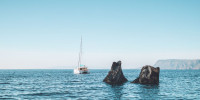
Average Cost of Buying & Owning a Catamaran (With 4 Examples)
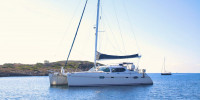
Can a Catamaran Capsize? The Surprising Answer
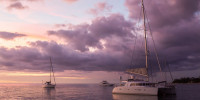
Cost of Catamaran vs. Monohull: Which is more expensive?
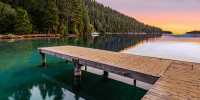
How Much Does It Cost to Dock a Catamaran? (7 Locations)
Own your first boat within a year on any budget.
A sailboat doesn't have to be expensive if you know what you're doing. If you want to learn how to make your sailing dream reality within a year, leave your email and I'll send you free updates . I don't like spam - I will only send helpful content.
Ready to Own Your First Boat?
Just tell us the best email address to send your tips to:
- BOAT OF THE YEAR
- Newsletters
- Sailboat Reviews
- Boating Safety
- Sailing Totem
- Charter Resources
- Destinations
- Galley Recipes
- Living Aboard
- Sails and Rigging
- Maintenance
- Best Marine Electronics & Technology
Best Cruising Catamarans
- By Cruising World Editors
- Updated: July 1, 2021
Cruising catamarans have been around for decades, but early models—often plywood and fiberglass vessels built by their owners from plans and kits, kept the boats on the fringes of mainstream sailing. That all changed, though, as big roomy cats were discovered by sailors who went off to charter in the Caribbean, where the multihulls proved their worth as comfortable liveaboard and party boats.
Today’s bluewater catamarans roam the globe, carrying families to exotic destinations across the Pacific and beyond. Just as with their monohull cousins, there is no best catamaran. Instead there is a wide variety of designs, ranging from small catamarans that offer the ease of maintenance a couple might enjoy to performance catamarans capable of easily knocking off 250-mile days. Today, the best catamaran brands offer a range of size models and layouts that can be optimized for an owner sailing with family and friends, or for the charter market, where there’s a demand for four, five and even six cabins worth of accommodations.
The most prolific catamaran manufacturers are in France and South Africa where yards include both large-run production builders and niche companies building fewer than 10 boats a year.
The best cruising catamarans offer good load-carrying ability and respectable performance. As with any sailboat , a modern catamaran’s design is a result of compromises. Daggerboards or keels? Galley up or galley down? Spacious owner’s cabin or extra bunks? There are lots of options to choose from—and that’s what makes looking at these sailboats fun!
Here, then is an eclectic A to Z list of some of the best catamarans that have helped shaped the evolution of how we live and sail on two hulls.
Antares 44i
Now built in Argentina as a full-fledged, bluewater catamaran and cruiser that can be safely operated by a shorthanded couple or family crew, the Antares 44i features a fully covered cockpit with a quartet of big, standard solar panels recessed within the hardtop, one example of a yacht capable of long-range passagemaking.
Atlantic 42
Almost 30 years ago, yacht designer Chris White revolutionized catamaran design with the first in his series of Atlantic cats, the primary feature of which was the innovative mid-ship sailing cockpit forward of the main cabin. The smallest in the Atlantic line, the 42 remains White’s most popular design ever.
Fountaine-Pajot has built so many outstanding cruising catamarans that it’s difficult to narrow down any single boat, but we’ve always been fans of the good-looking, well-thought-out Bahia 46. At 46 feet, the boat is large enough for offshore forays and has plenty of volume; with its simple but powerful sail plan, it’s also an excellent performer.
Beginning around 1996, the French builder Catana was one of the first companies to manufacture fully found cruising cats for private ownership, and this Christophe Barreau design, which enjoyed a nearly 10-year production run from 1997-2006, was emblematic of this first generation of safe, fun, long-legged offshore voyagers.
Click here to see more cats from Catana.
When it comes to speed, light boats are fast ones. And if you wish to save weight, that means exotic modern materials like carbon. Catana now infuses the laminates of their entire production line with carbon fiber, and for this list, we’ve chosen the Catana 50 Carbon, one of the zippiest cats now crossing oceans.
Click here to read about a couple’s charter aboard a Catana 50.
Gemini 105M
Pioneering catamaran sailor, builder and designer Tony Smith launched the first of his 33-foot Gemini 105M’s (10.5 meters = 33′) in 1993, and soon after found a ready and willing stream of sailors enamored of the boat’s compact size, affordable price tag, and such innovations as the nifty lifting rudder and transom steps.
Click here to read about the Gemini Legacy 35.
Built between 2000-2005, the Gunboat 62 firmly established the Gunboat brand: go-anywhere cats that applied race-boat technology to a world-cruising platform. Hull no. 1, Tribe, was built for company founder Peter Johnstone, who then spent a year-and-a-half cruising with his family, smiling all the way.
French builder Henri Wauquiez is best known for his long career building monohulls, but the Kronos 45 cat, which he launched in 1992, was ahead of her time. Classic lines, the aft “targa bar” over the cockpit, the louvered coach roof windows, even the distinctive stripes on her hull: the Kronos 45 remains timeless.
No roundup of cruising cats would be complete without several Lagoon entries, and the best of that impressive bunch might well be the Lagoon 380. Originally launched in 1999, and revered for its combination of quality, volume and performance, with over 740 boats built the 380 is still going strong.
Launched five years after the breakthrough 380, the Lagoon 440 was an evolutionary design that featured a raised flybridge helm station, a unique “gullwing” configuration below the bridge deck, expanded windows in the hull and much more. With 400 boats built in a 6-year production run, the 440 was an unqualified success.
How big can a production cat, still operable by a short-handed crew, really be? The builders at Lagoon discovered that 62-feet hit a sweet spot in the marketplace, and have sold over 70 boats since its introduction in 2010. The centerpiece of this design is the sensational steering station atop the flybridge, with expansive views of the sea and sky.
Click here to see more cats from Lagoon.
With an unmatched pedigree – designed by premier multihull naval architects Gino Morelli and Pete Melvin, built by the prestigious Robertson & Caine boatyard in South Africa, and commissioned by chartering giant The Moorings – the Leopard 40 was, perhaps unsurprisingly, Cruising World ’s Import Boat of the Year in 2005.
Louisiane 37
Based on the famous French racing cat Charente-Maritime, the Louisiane 37, designed by Joubert/Nivelt and launched by builder Fountaine-Pajot in 1983, was a light, fast liveaboard cruiser with full accommodations that represented a radical departure from the hefty British cats that preceded it.
Maine Cat 30
One of the more versatile and clever cats ever created, the central feature of the cool Maine Cat 30 is the open bridge deck/living room sandwiched between the hulls and canopied by a rigid, permanent hard top (the comfortable accommodations/ staterooms are stationed in the hulls). Ideal for a winter in the Bahamas but with the ability to sail offshore, it’s a boat for all seasons and reasons.
Built in Florida and beloved by the owners of the over 120 boats built during the company’s existence from 1993 to 2009, the Manta Catamarans range included 38-, 40- and 44-foot cats. For this exercise, however, we’re heralding the original Manta 42, which won the Best Value Overall prize in CW’s 2001 Boat of the Year contest.
Moorings 4800/Leopard 48
Another Leopard/Moorings collaboration built by the wizards at Robertson & Caine (though this boat was designed by fellow South African Alex Simonis), the Leopard 48 was another CW Boat of the Year winner with all the contemporary bells and whistles: forward cockpit, flybridge helm station and solid hardtop dodger, just to name a few.
Click here to read more about the Leopard 48, and click here to see more images.
Nautitech 441
The Best Multihull Under 45 Feet: So said the CW judging panel in the 2013 Boat of the Year competition, regarding the Nautitech 441. But what makes this versatile platform so intriguing are the different helm set-ups. The 441 employs a single wheel, to starboard, ideal for solo sailors, while the 442 has a pair of helm stations aft.
Click here to see more Nautitech Catamarans.
Outremer 5X
A state-of-the-art all-oceans cat that exemplifies how far multihull design has come, the 59-foot Outremer 5X was a winner on both sides of the Atlantic, taking top honors in the European Boat of the Year competition in 2013, and following up as the Best Full-Size Multihull in CW ’s contest a year later.
Click here to see more cats from Outremer.
St. Francis 50
The flagship of the proud St. Francis line – built in South Africa since 1990 to designs by local legends Lavranos Marine Design – the St. Francis 50 is another “luxury cat” that shares much in common with an earlier 48-foot sister-ship, but packs even more payload into its roomier lines.
Click here to read more about the St. Francis 50
Seawind 1000
Founded by Aussie surfer and sailor Richard Ward in 1982, the 33-foot Seawind 1000 is easily the most popular cruising cat ever built in Australia (the company has since moved its manufacturing and management operations to Vietnam). Roomy and airy, these cats dot the coastline of eastern Oz.
Seawind 1160
If the Seawind 1000 was a minimalist approach to cruising cats, the 38-foot Seawind 1160 is the flip side of the coin, a full-fledged long-range voyager. Among the reasons it was named CW ’s Most Innovative boat for 2007 is the unique “tri-folding” door that stashes overhead to open up the saloon and cockpit into a spacious living area.
Click here to read more about the Seawind 1160.
Sunsail 384
Every sailboat is a compromise, and in the case of the Sunsail 384 (also sold privately as the Leopard 38) that’s a good thing, because designers Morrelli & Melvin and builder Robertson and Caine got the balance just right with this relatively small catamaran. With four cabins, the 384 can carry the same size bareboat charter crowd as her larger siblings, but does so with a decided bounce in her step. Named CW’s Import Boat of the Year in 2010, you can gauge the success of the design by the grins on the crew as they barrel down Sir Francis Drake channel in the British Virgin Islands.
Victoria 67
The French design office of Berret Racoupeau drafted the lines of Fountaine-Pajot’s new flagship, introduced in 2013, a magnificent world-girdling voyaging catamaran. Like other giant cats launched in recent years, the boat features a sensational upper deck with all sail controls, helm and lounging stations.
Click here to see more images of the Victoria 67.
Wharram Tanaroa
No list of influential multihulls would be complete without the work of James Wharram, and while Tangaroa wasn’t a production cat by any means, it showcases the British designer’s respect for ancient Polynesian craft. Wharram sailed this 23-foot-6-inch “double-hulled canoe” across the Atlantic in the 1950s, and sold countless plans for similar boats for decades afterwards.
- More: Boat Gallery , catamaran , multihull , Sailboat Reviews , Sailboats
- More Sailboats
Balance 442 “Lasai” Set to Debut
Sailboat review: tartan 455, meet the bali 5.8, celebrating a classic, 10 best sailing movies of all time, kirsten neuschäfer receives cca blue water medal, 2024 regata del sol al sol registration closing soon, us sailing honors bob johnstone.
- Digital Edition
- Customer Service
- Privacy Policy
- Email Newsletters
- Cruising World
- Sailing World
- Salt Water Sportsman
- Sport Fishing
- Wakeboarding
- Articles and Guides
Best Cruising Catamaran Brands on the Market Today
22nd oct 2023 by samantha wilson.

The rise of the cruising catamaran is one of the most exciting changes to the boating world for decades. For many years catamarans couldn’t compete with bluewater monohull sailing yachts—and few would even consider sailing the world in one. But all that has changed. Today, big, spacious, safe, seaworthy catamarans are gracing the oceans in ever increasing numbers, and their positive attributes are hard to argue with, even for the most die-hard of monohull enthusiasts (see our article discussing why more and more sailors are choosing to sail in a catamaran ).
With more than double the space in the same length of boat as a monohull, cruising cats offer huge amounts of living space, wrap-around views, full-sized galleys, multiple cabins and heads, and spacious decks. They’re fast and sturdy, too, but don’t heel over like a monohull under sail, offering an incredibly stable ride.
There are many excellent boatbuilders making both sailing and motor catamarans, but just as with all other types of boat there is no best one—just the best one for you and your needs. Do you need a large owners’ cabin with extra storage for a couple sailing around the world? Or will you be doing shorter voyages with family or friends and need multiple cabins with bunks? Do you need a catamaran that can be sailed solo or will you always have a small crew? Here we take a look at some of the best cruising catamaran brands producing ocean-going vessels under 60 feet. And be sure to check out Rightboat’s extensive listings for both new and used cruising catamarans for sale .
Best Sailing Cruising Catamaran
Fountaine Pajot: Fountaine Pajot is one of the top names in the catamaran world, and they have been instrumental in creating a flourishing cruising cat industry. For more than 40 years, they have been designing and creating both sailing and motor cruising catamarans and have the awards to show for their innovation. They’re typically one step ahead of the game, as exemplified by the launch of their Eco Cruising concept back in 2011 when “green” was still a color. Their 40-foot Isla, the smallest in the range, is also their flagship model. It exemplifies the spirit of the company, whose emphasis is on strong, safe, comfortable boats built with cruising families who seek adventure in mind. All the way up to their 80-foot superyacht , the same focus on luxury, innovation, and pure sailing joy runs through the line.
Fountaine Pajot boats for sale

Isla 40, Fountaine Pajot photo
Lagoon Catamarans: Another major player in the cruising catamaran industry, Lagoon has got the recipe just right when it comes to stability, performance, and luxury living. And it seems the industry agrees as attested to by the copious number of awards on their mantelpiece including the latest Multihull of the Year 2023 accolade (from Multihulls World) in the Sail Cruising category for their Lagoon 51. There are another three models under the 51 (and four larger ones); each displays the classic Lagoon style with a good balance of strength, thoughtful design and construction, and performance that is improving in recent models. The clever interior and deck design has made Lagoon one of the top choices for charter companies the world over, with large communal spaces, multiple cabins, and a light, elegant décor style.
Lagoon boats for sale

Lagoon 51, Lagoon Catamarans photo
Best Power Catamaran for Cruising
Leopard Catamarans: To include Leopard Catamarans under the power cat section seems to imply that their sailing cats aren’t some of the best in the industry. In fact, the opposite is true, and it’s based on the huge success of their sailing models that the power cats have followed with equal prowess. They are now leading the pack when it comes to small bluewater motor catamarans, a sector that is still in its infancy. The Leopard 53 Powercat and Leopard 46 Powercat—built by Robertson and Caine in South Africa—were so well received that the Leopard 40 followed in 2023. The space achieved is staggering, with the largest flybridge ever seen on a 40-foot vessel. With features such as a full L-shaped galley, 360-degree visibility, three cabins, and two heads, the 40—like its larger predecessors—is a true game changer in motor-cat cruising.
Leopard boats for sale

Leopard 40, Leopard Catamarans photo
Prestige Catamarans: Prestige has just one motor cat in its repertoire, but what an offering it is. At 50 feet it’s at the larger end of our scale—in fact, larger power cats often do fall into the superyacht sector—and offers the impeccable styling we know from Prestige’s sailing catamarans. It’s well-equipped for long passages, and the flybridge can be fitted with a large T-top which protects the entire upper deck during all weathers. Inside it can be configured to suit, with huge en-suite cabins and luxurious family living spaces. While cruising motor catamarans of this size are often dominated by the big shipyards of Fountaine Pajot, Sunreef, and Lagoon, Prestige is certainly giving them a run for their money with the Euphorie 5.
Prestige boats for sale

Prestige M48, Prestige Catamarans photo
Best Offshore Cruising Catamaran
Antares Catamarans: Made in Buenos Aires, Argentina, Antares Catamarans offers some of the best, most trustworthy, and capable long range sailing catamarans on the market. The entire design is focused on living aboard, with meticulous thought going into the design of their living spaces, with even their aft cabins offering an industry-leading 6.75 feet of headroom. They’re always pushing the boundaries and now offer their flagship Antares 44 as a hybrid version complete with electric motors, solar energy, and a hydrogenerator able to produce 640 watts/hour at 7 knots. For those wanting to embark on true bluewater round- the-world voyages, Antares should be high on the list.
Antares boats for sale

Antares 44 GT & Hybrid, Antares Catamarans photo
Outremer: In the company’s own words Outremer build “the ultimate blue-water cruising catamaran” and each of their five models—ranging from 45 to 55 feet—is as high-performance, safe, and cleverly thought-out as the next. Imagine being able to sail a 45-foot yacht across oceans single-handedly. Well, that’s exactly what the Outremer 45 offers with its easy control from the helm station and forgiving handling. At 48 feet, the Outremer 4.zero has a 100% electric motor, allowing for long-range cruising with zero CO2 emissions. From the Outremer 51 family cruiser, with its four-cabin layout, to the innovative Outremer 5X, the largest cruising catamaran that can be easily handled by two people, the company has certainly advanced the art of bluewater catamarans.
Outremer boats for sale

Outremer 45, Outremer photo
Best Coastal Cruising Catamaran
Maine Cat Catamarans: This family-run brand is based on the MidCoast of Maine and has been producing high-performance composite sailing and power catamarans since 1993. Today, they’re models offer some of the best multihull coastal cruising in the US—as well as being well-equipped for longer-range cruising. They currently offer three models, the 30, 38 and 41, and each is designed for those who truly love the art of sailing. The smallest in the range is a simple, liveaboard weekend cruiser, while the 41 can average an impressive 200 plus miles a day. However, all models are well-equipped for much longer adventures, and all can be sailed solo.
Maine Cat boats for sale

ME Cat 38, Maine Cat Catamarans photo
Nautitech: To list Nautitech’s beautiful catamarans under the coastal cruising section isn’t to say they’re not highly capable bluewater cruisers. We’ve chosen to place them here, however, for their ability to truly offer the sailing good life. They’re luxurious and spacious, promising evening dining with friends and days spent cruising along shorelines pocked with coves and sandy beaches. All of their models—the 40 Open, 44 Open, and 48 Open—promise a good balance of performance and luxury, and also the grit and sheer space to transport you to the other side of the world.
Nautitech boats for sale

Nautitech 40 Open, Nautitech photo
Best-performing Cruising Catamaran
Catana Catamarans: French manufacturer Catana are not newcomers to this industry. In fact they’ve been instrumental in getting the multihull sector to where it is today, having created fast, high-performance catamarans since 1984. The company has put all their energy and expertise into just two current models, the Catana 53 and the Ocean Class, with both offering speed, excitement, and performance as well as strength and safety (but not forgetting the luxury finish). Using a lightweight construction for increased speed and performance, as well as inverted bows and daggerboards, they are high-performance boats ready to sail long distances in challenging seas.
Catana boats for sale

Catana 53, Catana photo
Kinetic: While this list looks predominantly at catamarans under 55 feet, mention must be made of Kinetic’s KC54 earning a Special Recognition award in Cruising World ’s Boat of the Year contest. It has been described by experts as the “Tesla of sailboats,” high praise indeed and in our opinion completely justified. For these are seriously high performing cruisers offering all-carbon and infused epoxy resin construction, innovative design and a stylish finish. Kinetic is a semi-custom yard, offering owners the chance to customize their layout, rig, and sail plan as well as the interior furnishings, finishings, fixtures, and equipment. The yacht may cost a few million dollars, but the result is a cruising catamaran perfectly honed for exactly how you want to sail it and where.
Kinetic official website

KC54, Kinetic Catamarans photo
Best Sailing Catamaran for Couples
Balance: There is no mistaking a Balance catamaran as it elegantly cruises past. With their iconic brightly colored hulls, they are unmistakable. But a nice finish doesn’t get you awarded Sailing World Magazine’s Boat of the Year 2022: Multihull. Balance is all about, well, balance. Their designers are all racers who have found that perfect point between a high-performance sailing vessel and a practical, easy-to-handle boat that can be sailed across the oceans by a couple. At just 44 feet, the Balance 442 is the smallest yacht in the company’s range. Yet it has everything you would expect of a larger model and is described by the manufacturer as an “agile multi-tasker.” Perfect for island-hopping or trans-oceanic voyages it is an exceptional compact bluewater liveaboard.
Balance boats for sale

Balance 442, Balance Catamarans photo
BALI Catamarans: When it comes to long-term cruising, comfort is as important as performance and BALI have developed their own unique approach to space in their four models under 44 feet. They’ve focused on creating an unparalleled amount of living space, panoramic views, excellent natural ventilation, comfort at sea, and all of that with uncompromised safety and seaworthiness. The result is a cruising catamaran well-suited for a couple to sail and live on together for the long term. The owner versions focus on spacious master cabins, huge saloon spaces, and twin helm stations for ease of handling making this a top choice for couples embarking on round-the-world voyages.
BALI Catamarans boats for sale

BALI 4.2, BALI Catamarans photo
Best Small Cruising Catamaran
Seawind: Australian-built Seawind specializes in compact bluewater cruising catamarans, having gained international acclaim for their five models under 45 feet. Each one offers a clever layout, good use of space, and efficient short-handed sailing performance. They have carbon- and Kevlar-reinforced hulls, watertight collision bulkheads, fully protected dual helm stations with 360-degree vision, home-away-from-home comforts. The result is an impressive bluewater cruising yacht in a surprisingly small package, allowing couples and families the change to embark on long-range adventures.
Seawind boats for sale

SeaWind 1260, SeaWind photo
Excess Catamarans: Excess Catamarans produce some of the smallest bluewater cruising cats on our list (and on the market) with their smallest models measuring just 37'5'' and 38'7''. But they are certainly reasonable performers, thanks to design by the French racing firm of VPLP, and they are also impressive both in terms of comfort and space. They’re designed for long-term living (there is even a 6.5-foot square bed in the master cabin) as well as for safety on the high seas, and are capable of transporting their owners anywhere its larger siblings can. With twin helm stations, a racy design, and plenty of well-thought out features and storage, Excess have really set the bar when it comes to pocket cruising cats.
Excess boats for sale

Excess 11, Excess Catamarans photo
Other Top Cruising Catamaran Brands
- HH Catamarans
- Gunboat Catamarans
- Maverick Yachts
Written By: Samantha Wilson
Samantha Wilson has spent her entire life on and around boats, from tiny sailing dinghies all the way up to superyachts. She writes for many boating and yachting publications, top charter agencies, and some of the largest travel businesses in the industry, combining her knowledge and passion of boating, travel and writing to create topical, useful and engaging content.

More from: Samantha Wilson
Related Articles and Guides
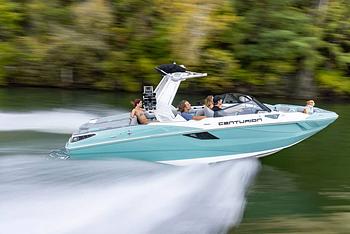
20th Mar 2024
Best Wakesurf Boat Brands
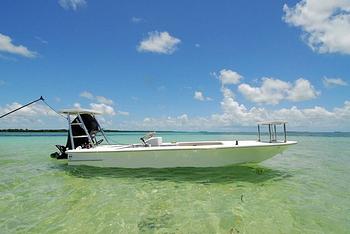
4th Mar 2024
The Best Flats Boats Brands, Special Boats for Skinny Waters
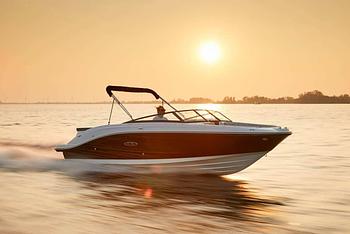
21st Feb 2024
Best Lake Boat Brands for Fishing, Cruising, and Watersports

15th Feb 2024
Best Aluminum Fishing Boat Brands: Tougher, Lighter and More Affordable
- Explore Rightboat
- Boats for Sale
- Boating Articles
- Buyers Guide
- About RightBoat
- Sell Your Boat
- Boat Selling Advice
Enter your email to keep up to date with the latest news
Join for free
Sign up now for free and discover how easy it is to keep up to date with THE latest boats for sale. Find your right boat, and tailor your voyage to finding your next boat.
Benefits of becoming a member:
- Set up tailored alerts
- Personalise your experience
- Download full specifications and broker details
- Keep tabs on your favourite boats
Are you a broker? Join as a Broker
Rightboat - join for free.
Do you have an account already? Login
Save this search
Save your search and receive new boats in your email..
You can unsubscribe from your alerts whenever you like. By pressing the button you accept the Legal Terms and conditions
- Yachting World
- Digital Edition

43 of the best bluewater sailboat designs of all time
- January 5, 2022
How do you choose the right yacht for you? We highlight the very best bluewater sailboat designs for every type of cruising

Which yacht is the best for bluewater boating? This question generates even more debate among sailors than questions about what’s the coolest yacht , or the best for racing. Whereas racing designs are measured against each other, cruising sailors get very limited opportunities to experience different yachts in real oceangoing conditions, so what is the best bluewater sailboat?
Here, we bring you our top choices from decades of designs and launches. Over the years, the Yachting World team has sailed these boats, tested them or judged them for European Yacht of the Year awards, and we have sifted through the many to curate a selection that we believe should be on your wishlist.
Making the right choice may come down to how you foresee your yacht being used after it has crossed an ocean or completed a passage: will you be living at anchor or cruising along the coast? If so, your guiding requirements will be space, cabin size, ease of launching a tender and anchoring closer to shore, and whether it can comfortably accommodate non-expert-sailor guests.
Article continues below…

The perfect boat: what makes an ideal offshore cruising yacht?
Choosing a boat for offshore cruising is not a decision to be taken lightly. I have researched this topic on…

European Yacht of the Year 2019: Best luxury cruisers
Before the sea trials began, I would have put money on a Hallberg-Rassy or the Wauquiez winning an award. The…
All of these considerations have generated the inexorable rise of the bluewater catamaran – monohulls can’t easily compete on these points. We have a full separate feature on the best bluewater multihulls of all time and here we mostly focus on monohulls. The only exceptions to that rule are two multihulls which made it into our best bluewater sailboats of 2022 list.
As so much of making the right choice is selecting the right boat for the venture in mind, we have separated out our edit into categories: best for comfort; for families; for performance; and for expedition or high latitudes sailing .
Best bluewater sailboats of 2022
The new flagship Allures 51.9, for example, is a no-nonsense adventure cruising design built and finished to a high standard. It retains Allures’ niche of using aluminium hulls with glassfibre decks and superstructures, which, the yard maintains, gives the optimum combination of least maintenance and less weight higher up. Priorities for this design were a full beam aft cabin and a spacious, long cockpit. Both are excellent, with the latter, at 6m long, offering formidable social, sailing and aft deck zones.
It likes some breeze to come to life on the wheel, but I appreciate that it’s designed to take up to five tonnes payload. And I like the ease with which you can change gears using the furling headsails and the positioning of the powerful Andersen winches inboard. The arch is standard and comes with a textile sprayhood or hard bimini.
Below decks you’ll find abundant headroom and natural light, a deep U-shape galley and cavernous stowage. For those who like the layout of the Amel 50 but would prefer aluminium or shoal draught, look no further.
Allures 51.9 price: €766,000
The Ovni 370 is another cunning new aluminum centreboard offering, a true deck saloon cruiser for two. The designers say the biggest challenge was to create a Category A ocean going yacht at this size with a lifting keel, hence the hull had to be very stable.
Enjoyable to helm, it has a practical, deep cockpit behind a large sprayhood, which can link to the bimini on the arch. Many of its most appealing features lie in the bright, light, contemporary, clever, voluminous interior, which has good stowage and tankage allocation. There’s also a practical navstation, a large workroom and a vast separate shower. I particularly like the convertible saloom, which can double as a large secure daybed or pilot berth.
Potentially the least expensive Category A lift keel boat available, the Ovni will get you dreaming of remote places again.
Ovni 370 price: €282,080

There’s no shortage of spirit in the Windelo 50. We gave this a sustainability award after it’s founders spent two years researching environmentally-friendly composite materials, developing an eco-composite of basalt fibre and recycled PET foam so it could build boats that halve the environmental impact of standard glassfibre yachts.
The Windelo 50 is an intriguing package – from the styling, modular interior and novel layout to the solar field on the roof and the standard electric propulsion, it is completely fresh.
Windelo 50 price: €795,000
Best bluewater sailboat of 2022 – Outremer 55
I would argue that this is the most successful new production yacht on the market. Well over 50 have already sold (an equipped model typically costs €1.6m) – and I can understand why. After all, were money no object, I had this design earmarked as the new yacht I would most likely choose for a world trip.
Indeed 55 number one Sanya, was fully equipped for a family’s world cruise, and left during our stay for the Grand Large Odyssey tour. Whereas we sailed Magic Kili, which was tricked up with performance options, including foam-cored deckheads and supports, carbon crossbeam and bulkheads, and synthetic rigging.
At rest, these are enticing space ships. Taking one out to sea is another matter though. These are speed machines with the size, scale and loads to be rightly weary of. Last month Nikki Henderson wrote a feature for us about how to manage a new breed of performance cruising cats just like this and how she coaches new owners. I could not think of wiser money spent for those who do not have ample multihull sailing experience.
Under sail, the most fun was obviously reserved for the reaching leg under asymmetric, where we clocked between 11-16 knots in 15-16 knots wind. But it was the stability and of those sustained low teen speeds which really hit home – passagemaking where you really cover miles.
Key features include the swing helms, which give you views from outboard, over the coachroof or from a protected position in the cockpit through the coachroof windows, and the vast island in the galley, which is key to an open plan main living area. It helps provide cavernous stowage and acts as the heart of the entertaining space as it would in a modern home. As Danish judge Morten Brandt-Rasmussen comments: “Apart from being the TGV of ocean passages the boat offers the most spacious, open and best integration of the cockpit and salon areas in the market.”
Outremer has done a top job in packing in the creature comforts, stowage space and payload capacity, while keeping it light enough to eat miles. Although a lot to absorb and handle, the 55 offers a formidable blend of speed and luxury cruising.
Outremer 55 price: €1.35m
Best bluewater sailboats for comfort
This is the successor to the legendary Super Maramu, a ketch design that for several decades defined easy downwind handling and fostered a cult following for the French yard. Nearly a decade old, the Amel 55 is the bridge between those world-girdling stalwarts and Amel’s more recent and totally re-imagined sloop designs, the Amel 50 and 60.
The 55 boasts all the serious features Amel aficionados loved and valued: a skeg-hung rudder, solidly built hull, watertight bulkheads, solid guardrails and rampart bulwarks. And, most noticeable, the solid doghouse in which the helmsman sits in perfect shelter at the wheel.
This is a design to live on comfortably for long periods and the list of standard features just goes on and on: passarelle; proper sea berths with lee cloths; electric furling main and genoa; and a multitude of practical items that go right down to a dishwasher and crockery.
There’s no getting around the fact these designs do look rather dated now, and through the development of easier sail handling systems the ketch rig has fallen out of fashion, but the Amel is nothing short of a phenomenon, and if you’ve never even peeked on board one, you really have missed a treat.

Photo: Sander van der Borch
Contest 50CS
A centre cockpit cruiser with true longevity, the Contest 50CS was launched by Conyplex back in 2003 and is still being built by the family-owned Dutch company, now in updated and restyled form.
With a fully balanced rudder, large wheel and modern underwater sections, the Contest 50CS is a surprisingly good performer for a boat that has a dry weight of 17.5 tonnes. Many were fitted with in-mast furling, which clearly curtails that performance, but even without, this boat is set up for a small crew.
Electric winches and mainsheet traveller are all easy to reach from the helm. On our test of the Contest 50CS, we saw for ourselves how two people can gybe downwind under spinnaker without undue drama. Upwind, a 105% genoa is so easy to tack it flatters even the weediest crewmember.
Down below, the finish level of the joinery work is up there among the best and the interior is full of clever touches, again updated and modernised since the early models. Never the cheapest bluewater sailing yacht around, the Contest 50CS has remained in demand as a brokerage buy. She is a reassuringly sure-footed, easily handled, very well built yacht that for all those reasons has stood the test of time.
This is a yacht that would be well capable of helping you extend your cruising grounds, almost without realising it.
Read more about the Contest 50CS and the new Contest 49CS

Photo: Rick Tomlinson
Hallberg-Rassy 48 Mk II
For many, the Swedish Hallberg-Rassy yard makes the quintessential bluewater cruiser for couples. With their distinctive blue cove line, these designs are famous for their seakindly behaviour, solid-as-a-rock build and beautifully finished, traditional interiors.
To some eyes, Hallberg-Rassys aren’t quite cool enough, but it’s been company owner Magnus Rassy’s confidence in the formula and belief in incremental ‘step-by-step’ evolution that has been such an exceptional guarantor of reliable quality, reputation and resale value.
The centre cockpit Hallberg-Rassy 48 epitomises the concept of comfort at sea and, like all the Frers-designed Hallberg-Rassys since the 1990s, is surprisingly fleet upwind as well as steady downwind. The 48 is perfectly able to be handled by a couple (as we found a few years back in the Pacific), and could with no great effort crack out 200-mile days.
The Hallberg-Rassy 48 was launched nearly a decade ago, but the Mk II from 2014 is our pick, updated with a more modern profile, larger windows and hull portlights that flood the saloon and aft cabin with light. With a large chart table, secure linear galley, heaps of stowage and space for bluewater extras such as machinery and gear, this yacht pretty much ticks all the boxes.

Discovery 55
First launched in 2000, the Discovery 55 has stood the test of time. Designed by Ron Holland, it hit a sweet spot in size that appealed to couples and families with world girdling plans.
Elegantly styled and well balanced, the 55 is also a practical design, with a deep and secure cockpit, comfortable seating, a self-tacking jib, dedicated stowage for the liferaft , a decent sugar scoop transom that’s useful for swimming or dinghy access, and very comfortable accommodation below. In short, it is a design that has been well thought out by those who’ve been there, got the bruises, stubbed their toes and vowed to change things in the future if they ever got the chance.
Throughout the accommodation there are plenty of examples of good detailing, from the proliferation of handholds and grabrails, to deep sinks in the galley offering immediate stowage when under way and the stand up/sit down showers. Stowage is good, too, with plenty of sensibly sized lockers in easily accessible positions.
The Discovery 55 has practical ideas and nifty details aplenty. She’s not, and never was, a breakthrough in modern luxury cruising but she is pretty, comfortable to sail and live on, and well mannered.

Photo: Latitudes Picture Library
You can’t get much more Cornish than a Rustler. The hulls of this Stephen Jones design are hand-moulded and fitted out in Falmouth – and few are more ruggedly built than this traditional, up-for-anything offshore cruiser.
She boasts an encapsulated lead keel, eliminating keel bolts and creating a sump for generous fuel and water tankage, while a chunky skeg protects the rudder. She is designed for good directional stability and load carrying ability. These are all features that lend this yacht confidence as it shoulders aside the rough stuff.
Most of those built have had a cutter rig, a flexible arrangement that makes sense for long passages in all sea and weather conditions. Down below, the galley and saloon berths are comfortable and sensible for living in port and at sea, with joinery that Rustler’s builders are rightly proud of.
As modern yachts have got wider, higher and fatter, the Rustler 42 is an exception. This is an exceptionally well-mannered seagoing yacht in the traditional vein, with elegant lines and pleasing overhangs, yet also surprisingly powerful. And although now over 20 years old, timeless looks and qualities mean this design makes her look ever more like a perennial, a modern classic.
The definitive crossover size, the point at which a yacht can be handled by a couple but is just large enough to have a professional skipper and be chartered, sits at around the 60ft mark. At 58ft 8in, the Oyster 575 fitted perfectly into this growing market when launched in 2010. It went on to be one of the most popular models from the yard, and is only now being superseded by the newer Rob Humphreys-designed Oyster 565 (just launched this spring).
Built in various configurations with either a deep keel, shoal draught keel or centreboard with twin rudders, owners could trade off better performance against easy access to shallower coves and anchorages. The deep-bodied hull, also by Rob Humphreys, is known for its easy motion at sea.
Some of the Oyster 575’s best features include its hallmark coachroof windows style and centre cockpit – almost everyone will know at first glance this is an Oyster – and superb interior finish. If she has a flaw, it is arguably the high cockpit, but the flip side is the galley headroom and passageway berth to the large aft stateroom.
This design also has a host of practical features for long-distance cruising, such as high guardrails, dedicated liferaft stowage, a vast lazarette for swallowing sails, tender, fenders etc, and a penthouse engine room.

Privilege Serie 5
A true luxury catamaran which, fully fitted out, will top €1m, this deserves to be seen alongside the likes of the Oyster 575, Gunfleet 58 and Hallberg-Rassy 55. It boasts a large cockpit and living area, and a light and spacious saloon with an emphasis on indoor-outdoor living, masses of refrigeration and a big galley.
Standout features are finish quality and solid build in a yacht designed to take a high payload, a secure walkaround deck and all-round views from the helm station. The new Privilege 510 that will replace this launches in February 2020.
Gunfleet 43
It was with this Tony Castro design that Richard Matthews, founder of Oyster Yachts, launched a brand new rival brand in 2012, the smallest of a range stretching to the flagship Gunfleet 74. The combination of short overhangs and centre cockpit at this size do make the Gunfleet 43 look modern if a little boxy, but time and subsequent design trends have been kind to her lines, and the build quality is excellent. The saloon, galley and aft cabin space is exceptional on a yacht of this size.

Photo: David Harding
Conceived as a belt-and-braces cruiser, the Kraken 50 launched last year. Its unique points lie underwater in the guise of a full skeg-hung rudder and so-called ‘Zero Keel’, an encapsulated long keel with lead ballast.
Kraken Yachts is the brainchild of British businessman and highly experienced cruiser Dick Beaumont, who is adamant that safety should be foremost in cruising yacht design and build. “There is no such thing as ‘one yacht for all purposes’… You cannot have the best of all worlds, whatever the salesman tells you,” he says.
Read our full review of the Kraken 50 .

Wauquiez Centurion 57
Few yachts can claim to be both an exciting Med-style design and a serious and practical northern European offshore cruiser, but the Wauquiez Centurion 57 tries to blend both. She slightly misses if you judge solely by either criterion, but is pretty and practical enough to suit her purpose.
A very pleasant, well-considered yacht, she is impressively built and finished with a warm and comfortable interior. More versatile than radical, she could be used for sailing across the Atlantic in comfort and raced with equal enjoyment at Antigua Sailing Week .

A modern classic if ever there was one. A medium to heavy displacement yacht, stiff and easily capable of standing up to her canvas. Pretty, traditional lines and layout below.

Photo: Voyage of Swell
Well-proven US legacy design dating back to the mid-1960s that once conquered the Transpac Race . Still admired as pretty, with slight spoon bow and overhanging transom.

Capable medium displacement cruiser, ideal size and good accommodation for couples or family cruising, and much less costly than similar luxury brands.

Photo: Peter Szamer
Swedish-built aft cockpit cruiser, smaller than many here, but a well-built and finished, super-durable pocket ocean cruiser.

Tartan 3700
Designed as a performance cruiser there are nimbler alternatives now, but this is still an extremely pretty yacht.
Broker ’ s choice

Discovery 55 Brizo
This yacht has already circumnavigated the globe and is ‘prepared for her next adventure,’ says broker Berthon. Price: £535,000 + VAT

Oyster 575 Ayesha
‘Stunning, and perfectly equipped for bluewater cruising,’ says broker Ancasta International. Price: £845,000 (tax not paid)

Oyster 575 Pearls of Nautilus
Nearly new and with a high spec, this Oyster Brokerage yacht features American white oak joinery and white leather upholstery and has a shoal draught keel. Price: $1.49m
Best bluewater yachts for performance
The Frers-designed Swan 54 may not be the newest hull shape but heralded Swan’s latest generation of displacement bluewater cruisers when launched four years ago. With raked stem, deep V hull form, lower freeboard and slight curve to the topsides she has a more timeless aesthetic than many modern slab-sided high volume yachts, and with that a seakindly motion in waves. If you plan to cover many miles to weather, this is probably the yacht you want to be on.

Photo: Carlo Borlenghi
Besides Swan’s superlative build quality, the 54 brings many true bluewater features, including a dedicated sail locker. There’s also a cockpit locker that functions as a utility cabin, with potential to hold your generator and washing machine, or be a workshop space.
The sloping transom opens out to reveal a 2.5m bathing platform, and although the cabins are not huge there is copious stowage space. Down below the top-notch oak joinery is well thought through with deep fiddles, and there is a substantial nav station. But the Swan 54 wins for handling above all, with well laid-out sail controls that can be easily managed between a couple, while offering real sailing enjoyment to the helmsman.

Photo: Graham Snook
The Performance Cruiser winner at the 2019 European Yacht of the Year awards, the Arcona 435 is all about the sailing experience. She has genuine potential as a cruiser-racer, but her strengths are as an enjoyable cruiser rather than a full-blown liveaboard bluewater boat.
Build quality is excellent, there is the option of a carbon hull and deck, and elegant lines and a plumb bow give the Arcona 435 good looks as well as excellent performance in light airs. Besides slick sail handling systems, there are well thought-out features for cruising, such as ample built-in rope bins and an optional semi-closed stern with stowage and swim platform.

Outremer 51
If you want the space and stability of a cat but still prioritise sailing performance, Outremer has built a reputation on building catamarans with true bluewater characteristics that have cruised the planet for the past 30 years.
Lighter and slimmer-hulled than most cruising cats, the Outremer 51 is all about sailing at faster speeds, more easily. The lower volume hulls and higher bridgedeck make for a better motion in waves, while owners report that being able to maintain a decent pace even under reduced canvas makes for stress-free passages. Deep daggerboards also give good upwind performance.
With bucket seats and tiller steering options, the Outremer 51 rewards sailors who want to spend time steering, while they’re famously well set up for handling with one person on deck. The compromise comes with the interior space – even with a relatively minimalist style, there is less cabin space and stowage volume than on the bulkier cats, but the Outremer 51 still packs in plenty of practical features.

The Xc45 was the first cruising yacht X-Yachts ever built, and designed to give the same X-Yachts sailing experience for sailors who’d spent years racing 30/40-footer X- and IMX designs, but in a cruising package.
Launched over 10 years ago, the Xc45 has been revisited a few times to increase the stowage and modernise some of the styling, but the key features remain the same, including substantial tanks set low for a low centre of gravity, and X-Yachts’ trademark steel keel grid structure. She has fairly traditional styling and layout, matched with solid build quality.
A soft bilge and V-shaped hull gives a kindly motion in waves, and the cockpit is secure, if narrow by modern standards.

A three or four cabin catamaran that’s fleet of foot with high bridgedeck clearance for comfortable motion at sea. With tall daggerboards and carbon construction in some high load areas, Catana cats are light and quick to accelerate.

Sweden Yachts 45
An established bluewater design that also features in plenty of offshore races. Some examples are specced with carbon rig and retractable bowsprits. All have a self-tacking jib for ease. Expect sweeping areas of teak above decks and a traditionally wooded interior with hanging wet locker.

A vintage performer, first launched in 1981, the 51 was the first Frers-designed Swan and marked a new era of iconic cruiser-racers. Some 36 of the Swan 51 were built, many still actively racing and cruising nearly 40 years on. Classic lines and a split cockpit make this a boat for helming, not sunbathing.

Photo: Julien Girardot / EYOTY
The JPK 45 comes from a French racing stable, combining race-winning design heritage with cruising amenities. What you see is what you get – there are no superfluous headliners or floorboards, but there are plenty of ocean sailing details, like inboard winches for safe trimming. The JPK 45 also has a brilliantly designed cockpit with an optional doghouse creating all-weather shelter, twin wheels and superb clutch and rope bin arrangement.

Photo: Andreas Lindlahr
For sailors who don’t mind exchanging a few creature comforts for downwind planing performance, the Pogo 50 offers double-digit surfing speeds for exhilarating tradewind sailing. There’s an open transom, tiller steering and no backstay or runners. The Pogo 50 also has a swing keel, to nose into shallow anchorages.

Seawind 1600
Seawinds are relatively unknown in Europe, but these bluewater cats are very popular in Australia. As would be expected from a Reichel-Pugh design, this 52-footer combines striking good looks and high performance, with fine entry bows and comparatively low freeboard. Rudders are foam cored lifting designs in cassettes, which offer straightforward access in case of repairs, while daggerboards are housed under the deck.
Best bluewater sailboats for families
It’s unsurprising that, for many families, it’s a catamaran that meets their requirements best of increased space – both living space and separate cabins for privacy-seeking teenagers, additional crew or visiting family – as well as stable and predictable handling.

Photo: Nicholas Claris
Undoubtedly one of the biggest success stories has been the Lagoon 450, which, together with boats like the Fountaine Pajot 44, helped drive up the popularity of catamaran cruising by making it affordable and accessible. They have sold in huge numbers – over 1,000 Lagoon 450s have been built since its launch in 2010.
The VPLP-designed 450 was originally launched with a flybridge with a near central helming position and upper level lounging areas (450F). The later ‘sport top’ option (450S) offered a starboard helm station and lower boom (and hence lower centre of gravity for reduced pitching). The 450S also gained a hull chine to create additional volume above the waterline. The Lagoon features forward lounging and aft cockpit areas for additional outdoor living space.
Besides being a big hit among charter operators, Lagoons have proven themselves over thousands of bluewater miles – there were seven Lagoon 450s in last year’s ARC alone. In what remains a competitive sector of the market, Lagoon has recently launched a new 46, with a larger self-tacking jib and mast moved aft, and more lounging areas.

Photo: Gilles Martin-Raget

Fountaine Pajot Helia 44
The FP Helia 44 is lighter, lower volume, and has a lower freeboard than the Lagoon, weighing in at 10.8 tonnes unloaded (compared to 15 for the 450). The helm station is on a mezzanine level two steps up from the bridgedeck, with a bench seat behind. A later ‘Evolution’ version was designed for liveaboard cruisers, featuring beefed up dinghy davits and an improved saloon space.
Available in three or four cabin layouts, the Helia 44 was also popular with charter owners as well as families. The new 45 promises additional volume, and an optional hydraulically lowered ‘beach club’ swim platform.

Photo: Arnaud De Buyzer / graphikup.com
The French RM 1370 might be less well known than the big brand names, but offers something a little bit different for anyone who wants a relatively voluminous cruising yacht. Designed by Marc Lombard, and beautifully built from plywood/epoxy, the RM is stiff and responsive, and sails superbly.
The RM yachts have a more individual look – in part down to the painted finish, which encourages many owners to personalise their yachts, but also thanks to their distinctive lines with reverse sheer and dreadnought bow. The cockpit is well laid out with the primary winches inboard for a secure trimming position. The interior is light, airy and modern, although the open transom won’t appeal to everyone.
For those wanting a monohull, the Hanse 575 hits a similar sweet spot to the popular multis, maximising accommodation for a realistic price, yet with responsive performance.
The Hanse offers a vast amount of living space thanks to the ‘loft design’ concept of having all the living areas on a single level, which gives a real feeling of spaciousness with no raised saloon or steps to accommodation. The trade-off for such lofty head height is a substantial freeboard – it towers above the pontoon, while, below, a stepladder is provided to reach some hatches.
Galley options include drawer fridge-freezers, microwave and coffee machine, and the full size nav station can double up as an office or study space.
But while the Hanse 575 is a seriously large boat, its popularity is also down to the fact that it is genuinely able to be handled by a couple. It was innovative in its deck layout: with a self-tacking jib and mainsheet winches immediately to hand next to the helm, one person could both steer and trim.
Direct steering gives a feeling of control and some tangible sailing fun, while the waterline length makes for rapid passage times. In 2016 the German yard launched the newer Hanse 588 model, having already sold 175 of the 575s in just four years.

Photo: Bertel Kolthof
Jeanneau 54
Jeanneau leads the way among production builders for versatile all-rounder yachts that balance sail performance and handling, ergonomics, liveaboard functionality and good looks. The Jeanneau 54 , part of the range designed by Philippe Briand with interior by Andrew Winch, melds the best of the larger and smaller models and is available in a vast array of layout options from two cabins/two heads right up to five cabins and three heads.
We’ve tested the Jeanneau 54 in a gale and very light winds, and it acquitted itself handsomely in both extremes. The primary and mainsheet winches are to hand next to the wheel, and the cockpit is spacious, protected and child-friendly. An electric folding swim and sun deck makes for quick fun in the water.

Nautitech Open 46
This was the first Nautitech catamaran to be built under the ownership of Bavaria, designed with an open-plan bridgedeck and cockpit for free-flowing living space. But with good pace for eating up bluewater miles, and aft twin helms rather than a flybridge, the Nautitech Open 46 also appeals to monohull sailors who prefer a more direct sailing experience.

Made by Robertson and Caine, who produce catamarans under a dual identity as both Leopard and the Sunsail/Moorings charter cats, the Leopard 45 is set to be another big seller. Reflecting its charter DNA, the Leopard 45 is voluminous, with stepped hulls for reduced waterline, and a separate forward cockpit.
Built in South Africa, they are robustly tested off the Cape and constructed ruggedly enough to handle heavy weather sailing as well as the demands of chartering.

Photo: Olivier Blanchet
If space is king then three hulls might be even better than two. The Neel 51 is rare as a cruising trimaran with enough space for proper liveaboard sailing. The galley and saloon are in the large central hull, together with an owner’s cabin on one level for a unique sensation of living above the water. Guest or family cabins lie in the outer hulls for privacy and there is a cavernous full height engine room under the cabin sole.
Performance is notably higher than an equivalent cruising cat, particularly in light winds, with a single rudder giving a truly direct feel in the helm, although manoeuvring a 50ft trimaran may daunt many sailors.

Beneteau Oceanis 46.1
A brilliant new model from Beneteau, this Finot Conq design has a modern stepped hull, which offers exhilarating and confidence-inspiring handling in big breezes, and slippery performance in lighter winds.
The Beneteau Oceanis 46.1 was the standout performer at this year’s European Yacht of the Year awards, and, in replacing the popular Oceanis 45, looks set to be another bestseller. Interior space is well used with a double island berth in the forepeak. An additional inboard unit creates a secure galley area, but tank capacity is moderate for long periods aboard.

Beneteau Oceanis 473
A popular model that offers beam and height in a functional layout, although, as with many boats of this age (she was launched in 2002), the mainsheet is not within reach of the helmsman.

Jeanneau Sun Odyssey 49
The Philippe Briand-designed Sun Odyssey range has a solid reputation as family production cruisers. Like the 473, the Sun Odyssey 49 was popular for charter so there are plenty of four-cabin models on the market.

Nautitech 441
The hull design dates back to 1995, but was relaunched in 2012. Though the saloon interior has dated, the 441 has solid practical features, such as a rainwater run-off collection gutter around the coachroof.

Atlantic 42
Chris White-designed cats feature a pilothouse and forward waist-high working cockpit with helm position, as well as an inside wheel at the nav station. The Atlantic 42 offers limited accommodation by modern cat standards but a very different sailing experience.
Best bluewater sailing yachts for expeditions
Bestevaer 56.
All of the yachts in our ‘expedition’ category are aluminium-hulled designs suitable for high latitude sailing, and all are exceptional yachts. But the Bestevaer 56 is a spectacular amount of boat to take on a true adventure. Each Bestevaer is a near-custom build with plenty of bespoke options for owners to customise the layout and where they fall on the scale of rugged off-grid adventurer to 4×4-style luxury fit out.

The Bestevaer range began when renowned naval architect Gerard Dijkstra chose to design his own personal yacht for liveaboard adventure cruising, a 53-footer. The concept drew plenty of interest from bluewater sailors wanting to make longer expeditions and Bestevaers are now available in a range of sizes, with the 56-footer proving a popular mid-range length.
The well-known Bestevaer 56 Tranquilo (pictured above) has a deep, secure cockpit, voluminous tanks (700lt water and over 1,100lt fuel) and a lifting keel plus water ballast, with classically styled teak clad decks and pilot house. Other owners have opted for functional bare aluminium hull and deck, some choose a doghouse and others a pilothouse.

Photo: Jean-Marie Liot
The Boreal 52 also offers Land Rover-esque practicality, with utilitarian bare aluminium hulls and a distinctive double-level doghouse/coachroof arrangement for added protection in all weathers. The cockpit is clean and uncluttered, thanks to the mainsheet position on top of the doghouse, although for visibility in close manoeuvring the helmsman will want to step up onto the aft deck.
Twin daggerboards, a lifting centreboard and long skeg on which she can settle make this a true go-anywhere expedition yacht. The metres of chain required for adventurous anchoring is stowed in a special locker by the mast to keep the weight central. Down below has been thought through with equally practical touches, including plenty of bracing points and lighting that switches on to red light first to protect your night vision.

Photo: Morris Adant / Garcia Yachts
Garcia Exploration 45
The Garcia Exploration 45 comes with real experience behind her – she was created in association with Jimmy Cornell, based on his many hundreds of thousands of miles of bluewater cruising, to go anywhere from high latitudes to the tropics.
Arguably less of a looker than the Bestevaer, the Garcia Exploration 45 features a rounded aluminium hull, centreboard with deep skeg and twin daggerboards. The considerable anchor chain weight has again been brought aft, this time via a special conduit to a watertight locker in front of the centreboard.
This is a yacht designed to be lived on for extended periods with ample storage, and panoramic portlights to give a near 360° view of whichever extraordinary landscape you are exploring. Safety features include a watertight companionway door to keep extreme weather out and through-hull fittings placed above the waterline. When former Vendée Globe skipper Pete Goss went cruising , this was the boat he chose to do it in.

Photo: svnaima.com
A truly well-proven expedition design, some 1,500 Ovnis have been built and many sailed to some of the most far-flung corners of the world. (Jimmy Cornell sailed his Aventura some 30,000 miles, including two Drake Passage crossings, one in 50 knots of wind).

Futuna Exploration 54
Another aluminium design with a swinging centreboard and a solid enclosed pilothouse with protected cockpit area. There’s a chunky bowsprit and substantial transom arch to house all manner of electronics and power generation.
Previous boats have been spec’d for North West Passage crossings with additional heating and engine power, although there’s a carbon rig option for those that want a touch of the black stuff. The tanks are capacious, with 1,000lt capability for both fresh water and fuel.
If you enjoyed this….
Yachting World is the world’s leading magazine for bluewater cruisers and offshore sailors. Every month we have inspirational adventures and practical features to help you realise your sailing dreams. Build your knowledge with a subscription delivered to your door. See our latest offers and save at least 30% off the cover price.

CRUISING CATAMARANS FOR REAL SAILORS
Seawind Catamarans have long been Australia’s most popular cruising catamaran designs. With over 35 years experience in building the highest quality blue water catamarans. As already discovered by our growing family of adventurous and like minded Seawind fans the world over, a Seawind boat could be the ideal sailing catamaran for you and your family!
STATE OF THE ART COMPOSITES
What's in a seawind .
Seawind Catamarans is in continuous development with every new boat model, building on the knowledge and success of previous designs. Every catamaran yacht is the result of hundreds of collective years of multihull experience, and the best construction techniques the world has to offer. Seawind Catamarans uses Resin Infusion Technology to produce a lighter, stronger, and cleaner product. In partnership with High Modulus and DIAB technologies, the complex infusion implementation process was developed using a 3D simulated flow model (pictured here) to ensure that best quality and consistency is achieved with every new Seawind sailboat.
PROVEN RELIABILITY FIRST & FOREMOST
Every Seawind sailing catamaran is built for cruising practicality, but delivered on a platform of fast, performance hulls with a fine bow entry and strong stiff construction. Poise is combined with power in the shape of a relatively powerful sail area, providing a power to weight ratio to set pulses racing. This additional power delivers the speed to bring significantly more destinations within reach, satisfying a modern market which may need to fit “extended” cruising into only a few weeks or months. But in all of the 600 catamaran boats launched, not one has ever suffered a rig failure or have we ever experienced a capsize. Seawind catamaran yachts are built on a track record of success.
ERGONOMIC & PRACTICAL
Seawind Catamarans’ sustained success over so many years is built on key features which are part of our DNA. Huge cockpit doors open to combine the saloon and cockpit – a feature unmatched in the market, and which provide expansive and versatile living space. The new Seawind 1260 enhances this feature further by adding a modular cockpit arrangement. Move chairs and seats to arrange the space as you need it, as circumstances demand. Seat 8 people inside, and another 8 outside. Or bring everyone in and make that a dozen inside or easily clear the cockpit for a long passage. Every Seawind catamaran sailboat provides flexibility and luxury while sacrificing none of the practicality that made previous Seawind Cats models the success they are. Seawind boats also provide unparalleled entertainment space while sacrificing nothing in offshore safety.
PROTECTED SAFE STEERING
Dual helm stations are found on every Seawind Catamarans sailboat, and they offer 360-degree visibility, even on the largest Seawind 1600 model. This allows the skipper to sail safely in crowded harbor conditions, and to keep an eye on the crew when offshore. Large targa tops offer protection from the harsh offshore conditions, both sun and rain, while panoramic opening windows provide ventilation as well as visibility. Seawind Catamarans boats offer the protection of a pilothouse yacht, with the visibility and helming advantages of a sailing catamaran.
INDOOR/ OUTDOOR LIVING
The famous Australian indoor / outdoor, open lifestyle is entrenched in Seawind Catamarans designs, with an unbeatable living area complimented by brilliant natural ventilation, protected cockpit lounge, and social helm seats putting the skipper in control as well as in the conversation. Best of all, you can enjoy what many catamaran sailboats compromise on… visibility – for the skipper and crew, with 360 degree views from the helm and saloon seats all within the protection of the fiberglass coachouse and targa top.
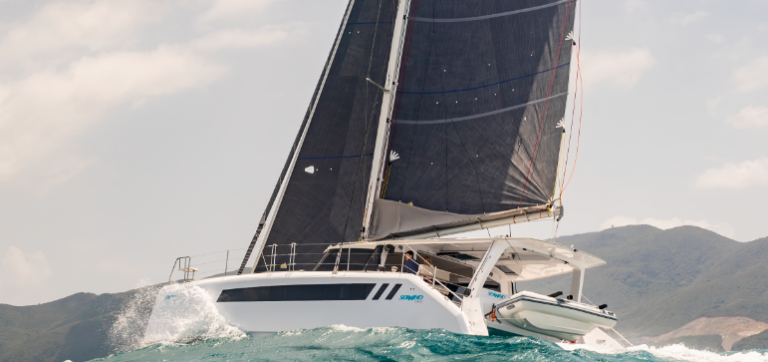
Seawind 1370 Hull 1 Test Report by Skipper & Thailand Customer Service Manager, Phil Harper.

Seawind Catamarans to open Production Facility and European Service Center in Izmir, Turkey.
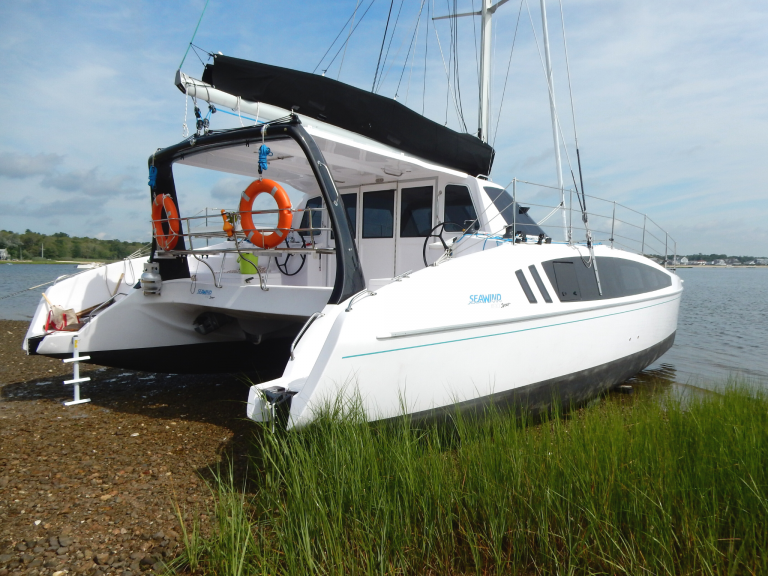
Beachability: Mini-keels or fixed rudders
- Seawind 1370 Hull 1 Test Report
- New Production Facility and European Service Center in Izmir, Turkey.
- Seawind 1600 Reviewed by Pacific Yachting
- Seawind Blog
- Charter A Seawind
- Find A Dealer
- Français ( French )
Tel +84 28 3873 3630
Sales Enquiry:
Customer Service Enquiry:
© 2024 Seawind Group Holdings, Pty Ltd. All rights reserved.
Privacy Policy
- European Union
- South Africa
Sail Catamarans
Set sail to new horizons from the power and beauty of Leopard Catamarans. Sea-trialed and tested off the coast of South Africa, Leopard Catamarans are known the world over for extraordinary craftsmanship and optimal performance. Both sailboat and power catamaran lines are built with flexibility for the modern seafarer and offer a range of equipment and layout options designed with your journey in mind. Embark on your adventure today.
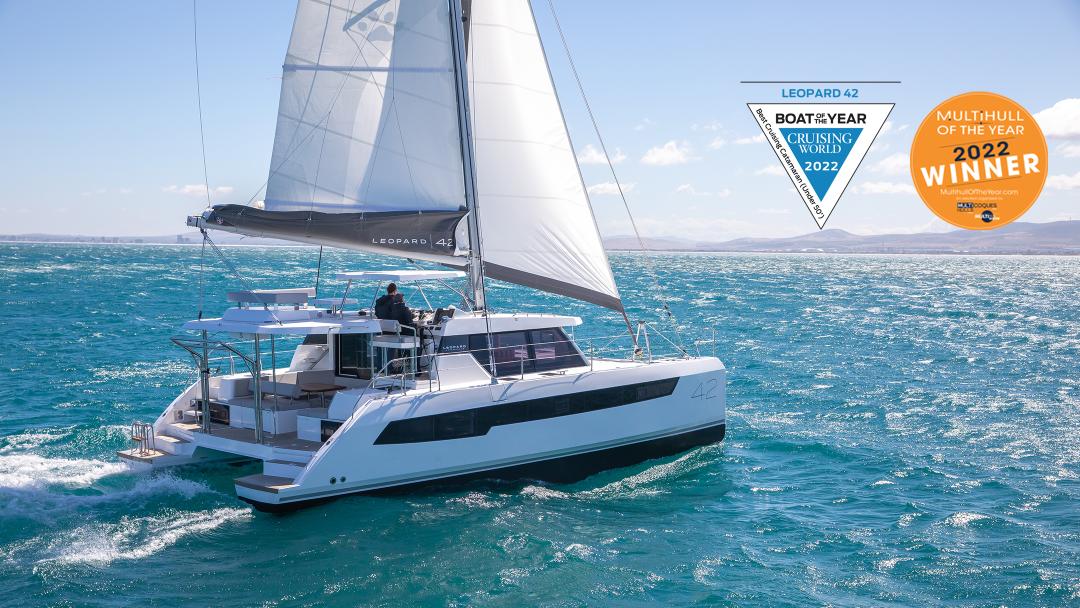
Experience even greater livability on the Leopard 45 with an expanded lounge. Like the larger Leopard 50, the lounge in the Leopard 45 includes a seating area, a sunbed and a table. Relish the journey just a little bit longer in the comfort of this expanded space. Here, the helm station remains protected and integrated into the cockpit of the boat. See how the Leopard 45 accommodates everyone on board.
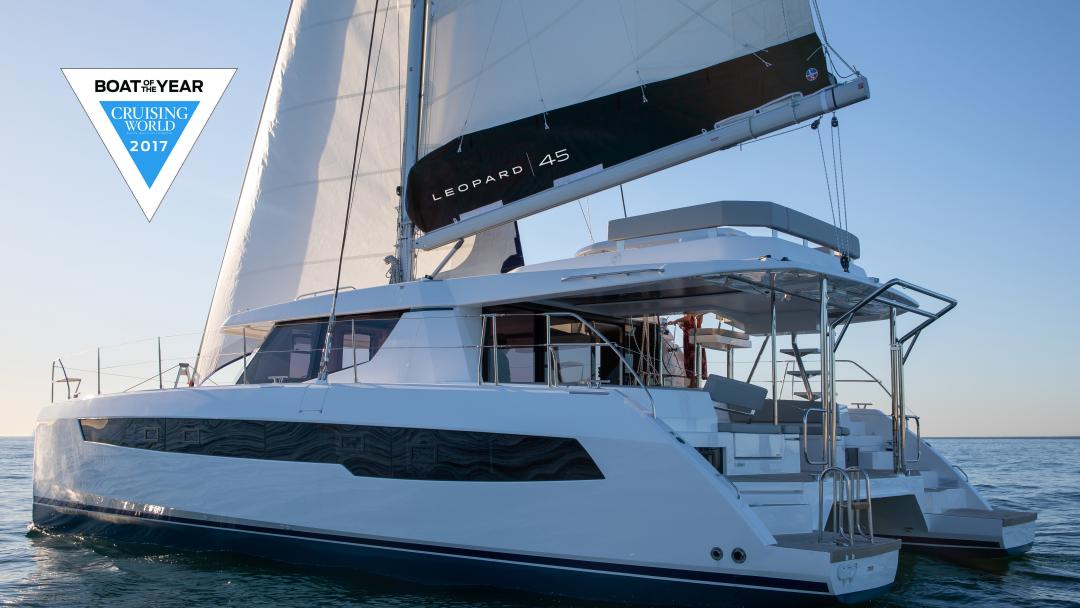
Live out your sailing dreams aboard the Leopard 50. This catamaran is everything you envisioned, plus so much more. With a never-before-seen lounging flybridge of this size, the Leopard 50 incorporates the best attributes from its predecessor and 2012 Boat of the Year, the Leopard 48. Now, with even more living space and options, your journey ahead is boundless.
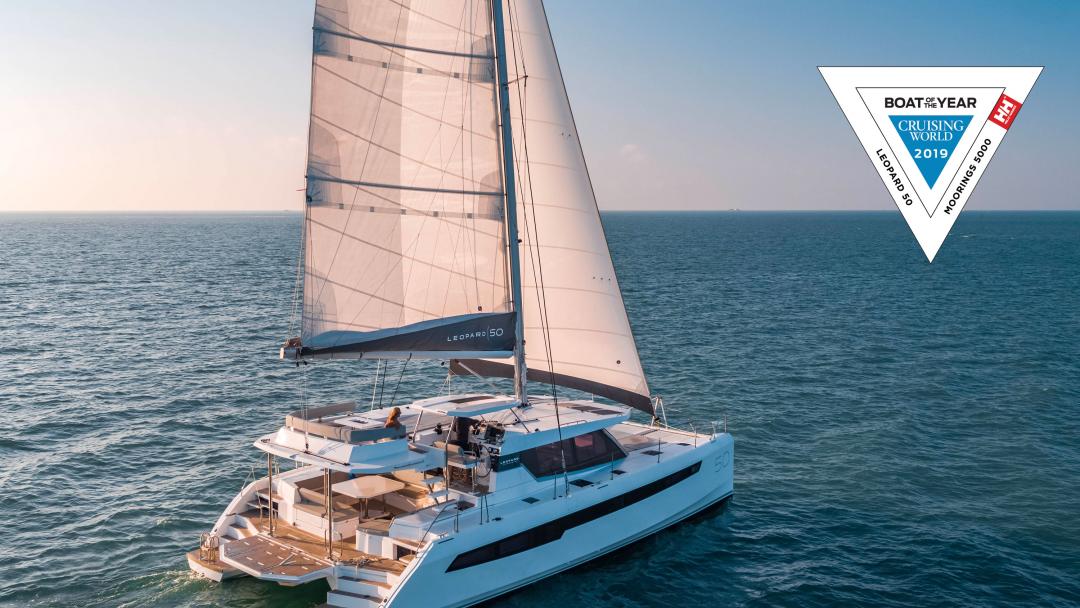
- THE PRINCESS PASSPORT
- Email Newsletter
- Yacht Walkthroughs
- Destinations
- Electronics
- Best Marine Electronics & Technology
- Boating Safety

The Power Catamaran Compilation
- By Yachting Staff
- Updated: December 21, 2018
Power Catamarans have been growing leaps and bounds in popularity, and, in lengths and widths. And for good reason. These cruise-centric yachts offer homelike livability for avid travelers, are fuel efficient and are fairly intuitive to run. Power cats are popular in the bareboat charter market too, for these very reasons.
Here, we take a look at 12 catamarans ranging from a cruising-couple-size 36-footer to a 78-footer for friends, family and some more friends. And there are myriad power options: outboards, diesel inboards, hybrid or even all-solar power.
Fountaine Pajot MY44
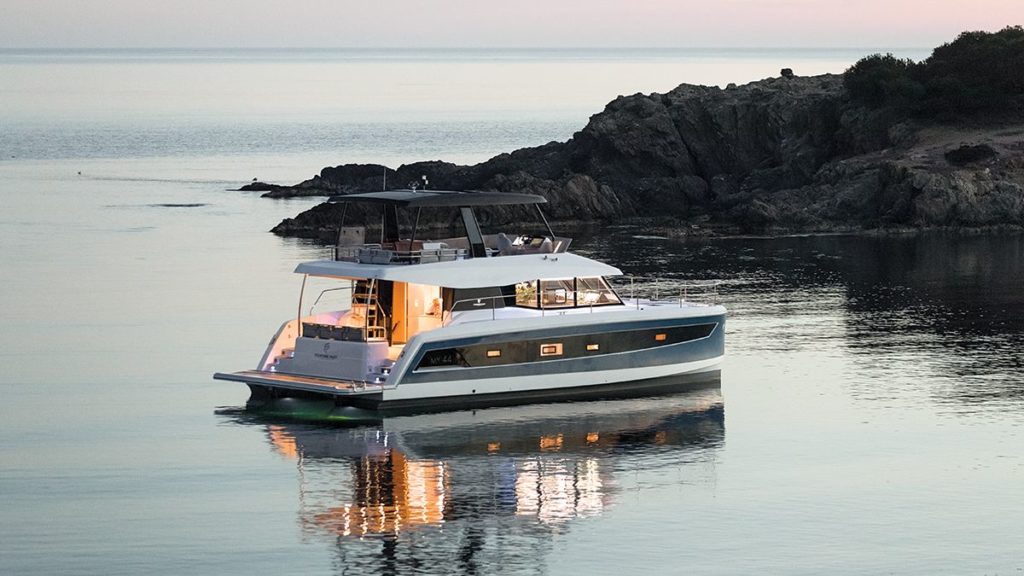
The Fountaine Pajot MY44 , a creation of Italian architect Pierangelo Andreani and French designer Daniel Andrieu, has a main deck that’s open from the aft-deck seating all the way forward to the starboard helm station. The sense of spaciousness is significant, for several reasons. First, four glass panels aft can all slide to port, creating an indoor-outdoor space with the aft deck and salon. In the salon, 32-inch-high windows extend for 12 feet down the sides of the yacht, with three sections per side, bringing in natural light along with the three forward panes that comprise the windshield. Finally, 6-foot-6-inch headroom provides vertical clearance, with a 21-foot-7-inch beam that adds interior roominess while keeping the yacht stable.
Read more: Fountaine Pajot MY44
Silent-Yachts 55
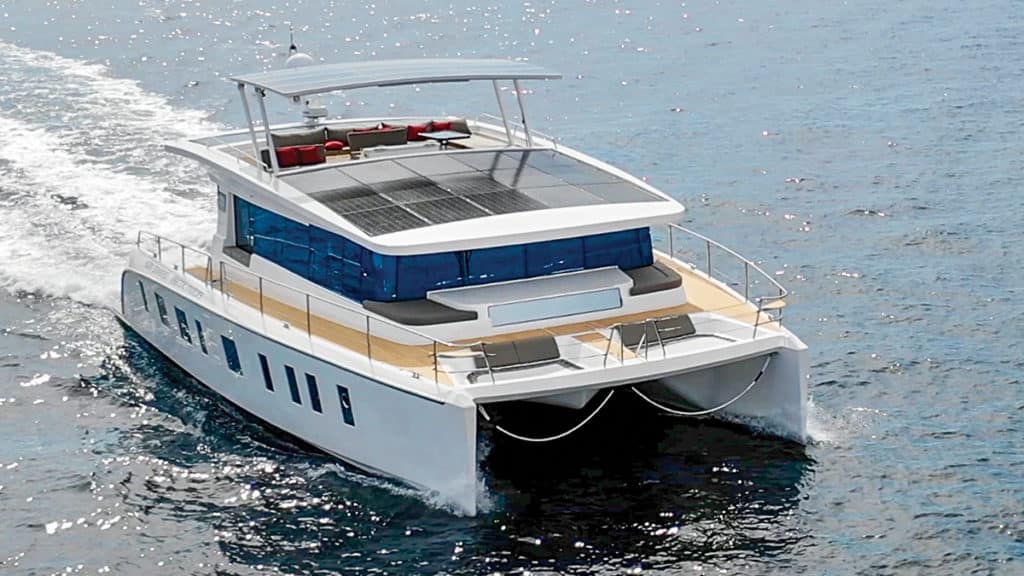
The ideas about which solar panels, electric motors, inverters and the like to use — and more importantly, Michael Köhler says, how to configure them — became the basis for the brand Silent-Yachts. The company offers 55-, 64- and 79-foot catamarans that run on solar-electric propulsion. The Silent 55 premiered this fall, and the 64 is sold out for the next two years, Köhler says.
Read more: Silent 55
Horizon PC74
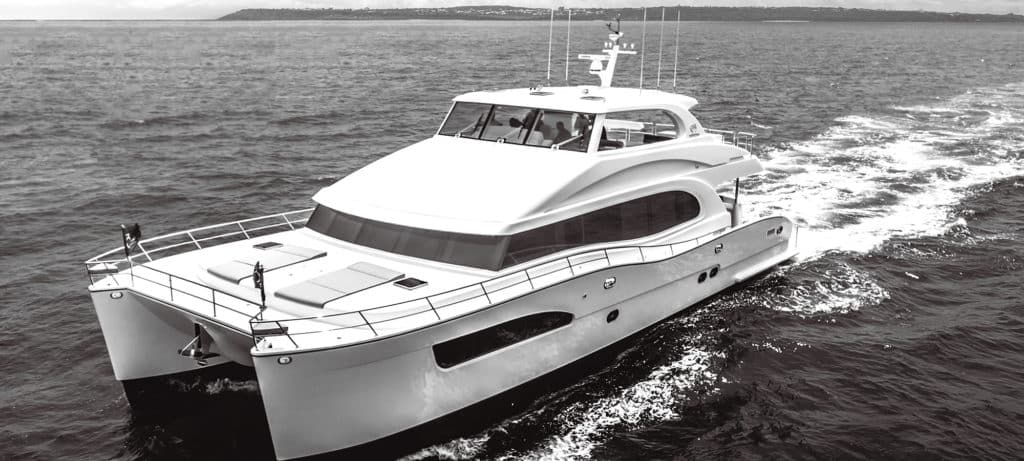
As founder and director of The Powercat Company, a Horizon Power Catamarans distributor, Stuart Hegerstrom had long believed that catamaran builders needed to design their yachts to more stylish standards.
“The boats were very boxy,” he says, based on his years of experience with cats in the charter market. He and his partner, Richard Ford, asked Horizon to produce models that had high-end finishes and looked good inside and out.
The Horizon team brought in mega-yacht designer JC Espinosa to work with its own craftsmen. The result aboard the Horizon PC74 is a catamaran with exterior styling, layout and functionality that should appeal to private and charter owners alike.
Read more: Horizon PC74
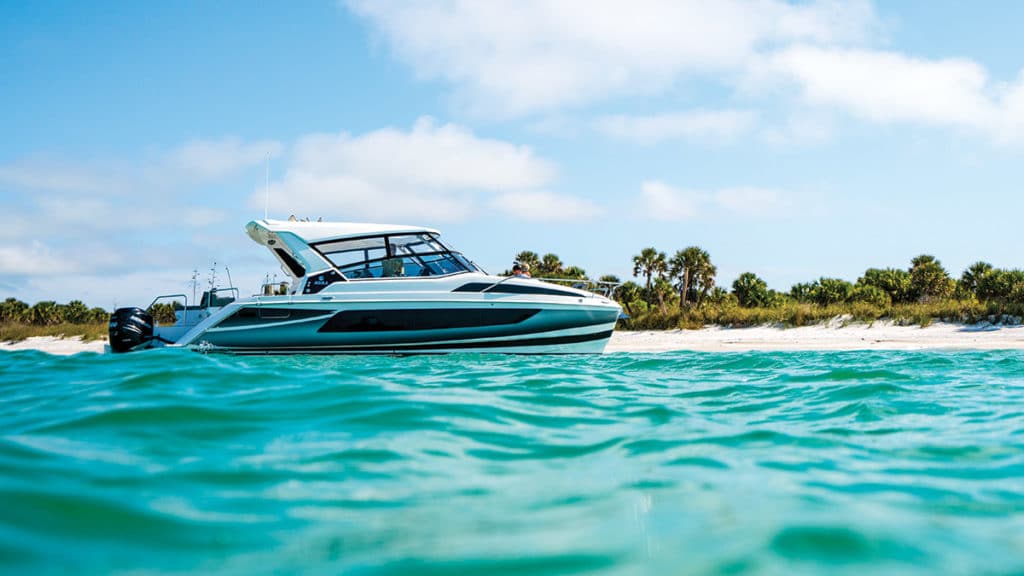
The Aquila 36 is a departure from her sisterships in that she is an outboard-powered, express-cruiser-style catamaran, but she also adheres to MarineMax’s philosophies.
With a single main living level from bow to stern and a beam of 14 feet 7 inches, the Aquila 36 is like a bowrider on steroids. She has seating that can handle 20 adults for outings and barbecues, and there are two staterooms below, one in each hull, for family weekending. The staterooms have nearly queen-size berths, en suite heads, stowage and 6-foot-6-inch headroom.
Read more: Aquila 36
Lagoon Seventy 8 Powercat
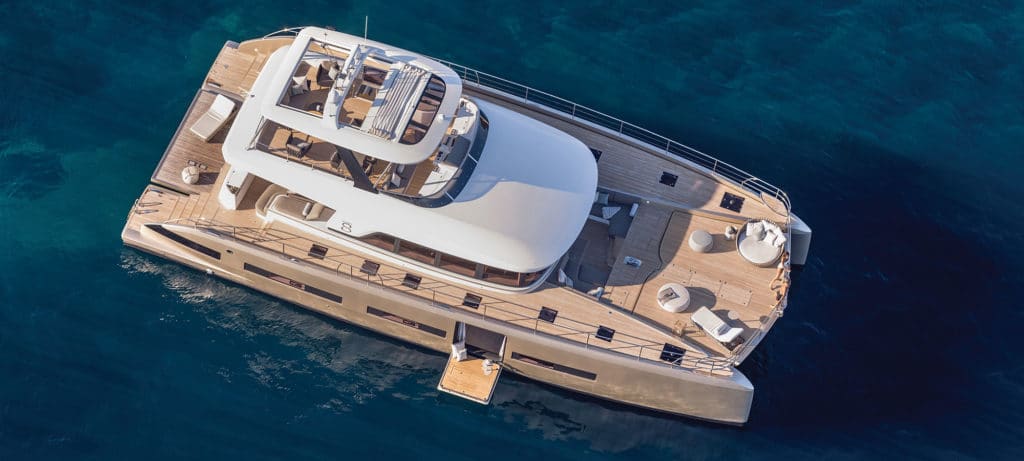
Lagoon is a division of Groupe Beneteau, the world’s largest builder of sailing yachts, and the Lagoon Seventy 8 Powercat is a developmental sistership of its Seventy 7 super sailing cat. The Seventy series yachts are built at Construction Navale Bordeaux in France, which had to add a new yard to construct these catamarans because they require separate stern molds for the power and sail versions.
Read more: Lagoon Seventy 8 Powercat
Horizon PC60
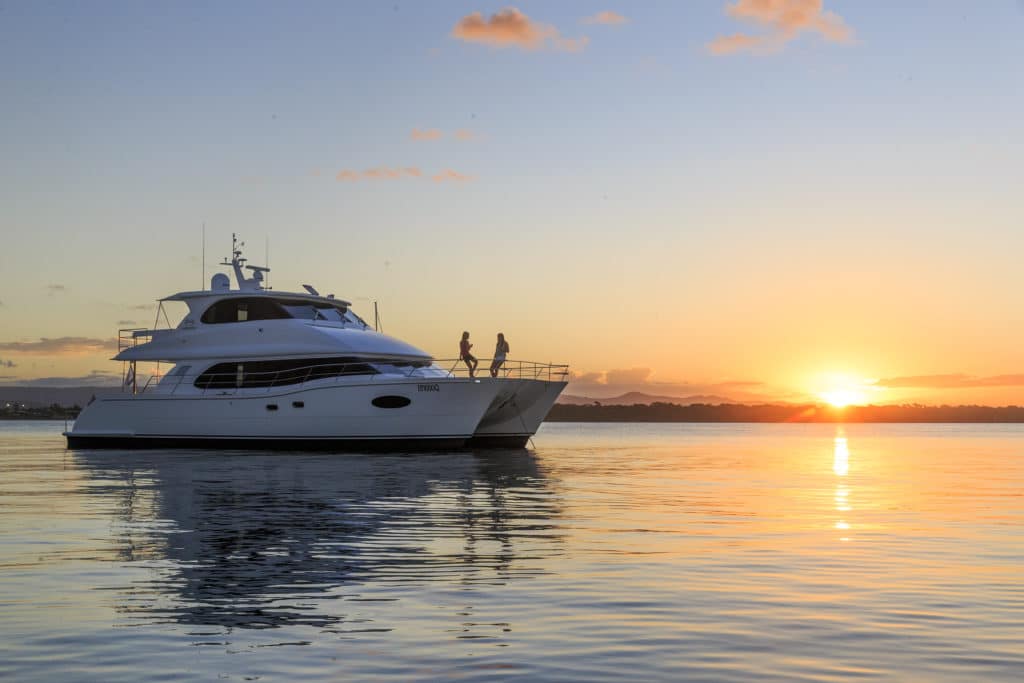
To understand the Horizon PC60 power catamaran , you need to put aside preconceived notions about midsize yacht amenities. For example, main-deck master suites are the province of yachts over 100 feet length overall. Incorrect. This 60-footer has an elegant and spacious owner’s stateroom on the same level as the salon. If you want a 14-foot center console tender on a 60-foot yacht, you have to tow it. Wrong again. On the PC60, you hoist it onto the upper deck, no problem.
Read more: Horizon PC60
40 Open Sunreef Power
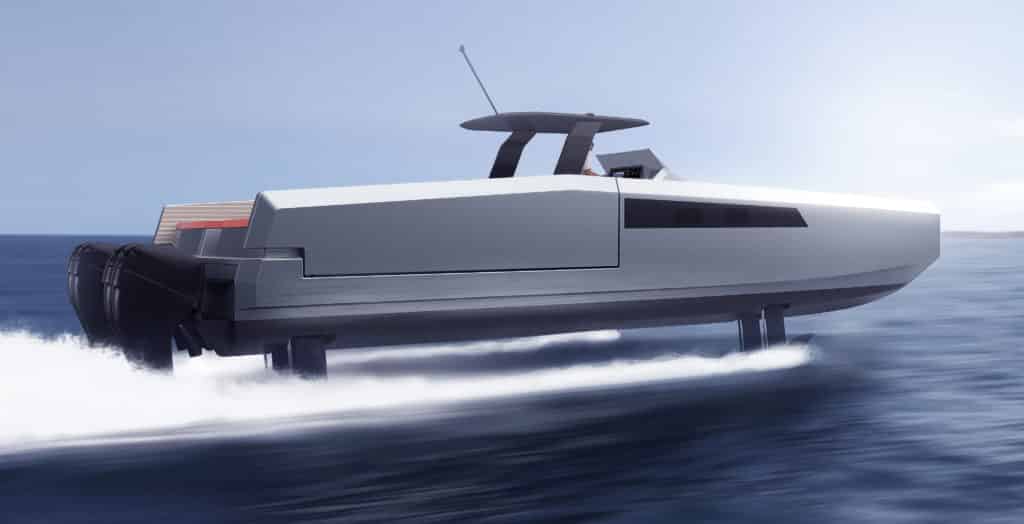
Sunreef is known for pushing the boundaries of catamaran design, incorporating four adjustable hydrofoils into a twin-hulled speedboat.
The Polish builder is one of several European builders (including Evo, Fjord, Wider and Wally) transforming the open day-boat category with creative designs. Beyond its hydrofoils, the 40 Open Sunreef Power ‘s cockpit has side “wings” along the aft gunwales that fold out at anchor, widening the beam from 17 feet to 22 feet 9 inches.
Read more: 40 Open Sunreef Power
Sunreef 50 Amber Limited Edition
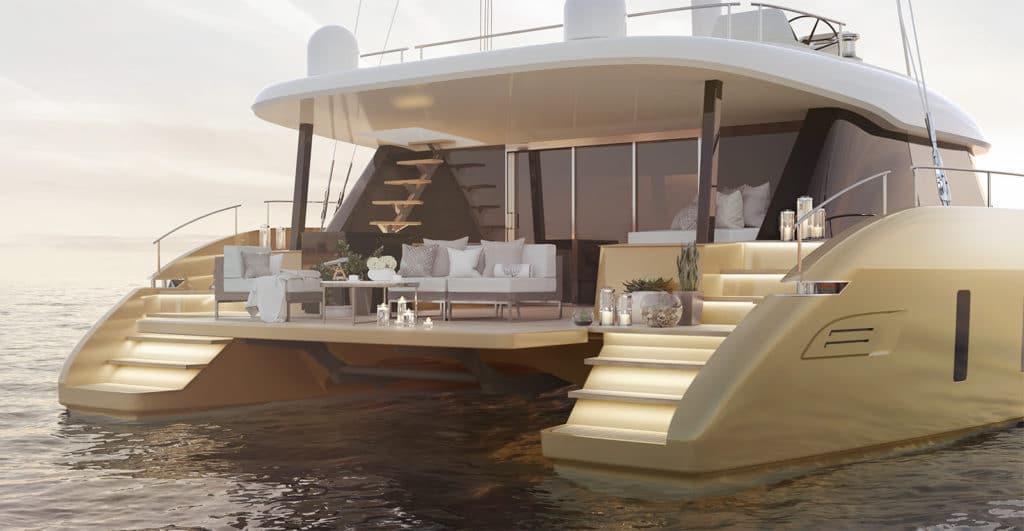
Sunreef Yachts introduced its 50 Amber Limited Edition , with plans to launch just 10 hulls of the exclusive design.
The Sunreef 50 Amber Limited Edition will have a carbon fiber mast and boom, four layout options and numerous amber-colored elements, including the hull.
Read more: Sunreef 50 Amber Limited Edition
Lagoon 630 Motor Yacht
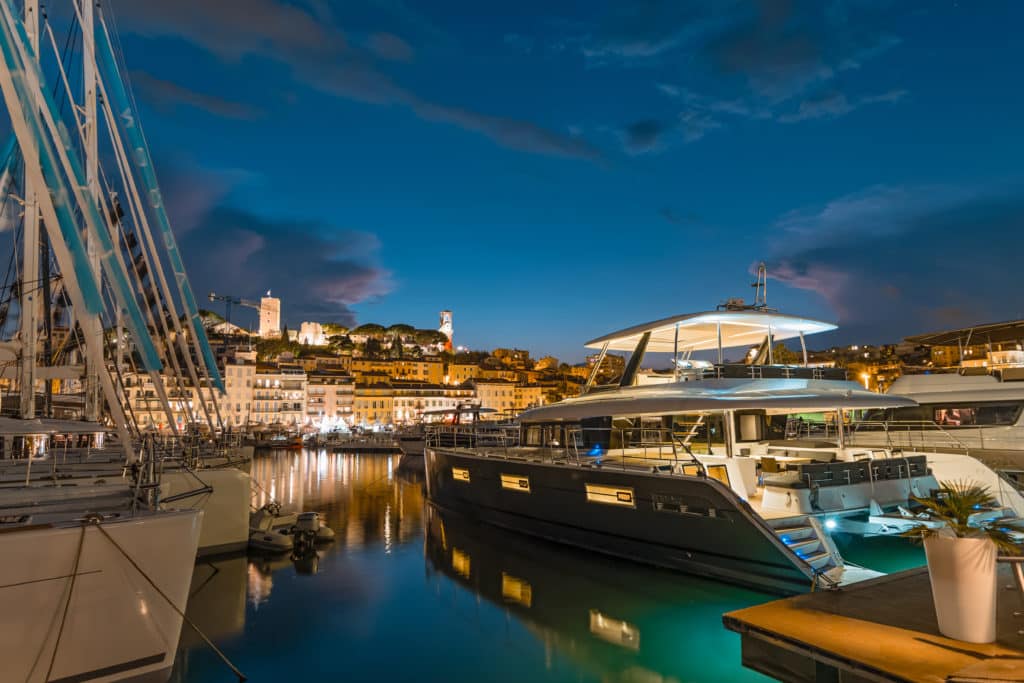
Fitted with the optional twin 300-horsepower Volvo Penta D4 diesels, the Lagoon 630 MY burns only 1.64 gph total at 6 knots, giving a theoretical range of 2,952 nautical miles with standard tankage of 793 gallons. Hull No. 1 had an optional 502-gallon tank, giving it transatlantic range.
Luxury, stability and economy are all hallmarks of Lagoon’s return to luxury motor yachts. If you can take a ride, it will be worth your time.
Read more: Lagoon 630 Motor Yacht
Fountaine Pajot MY 37
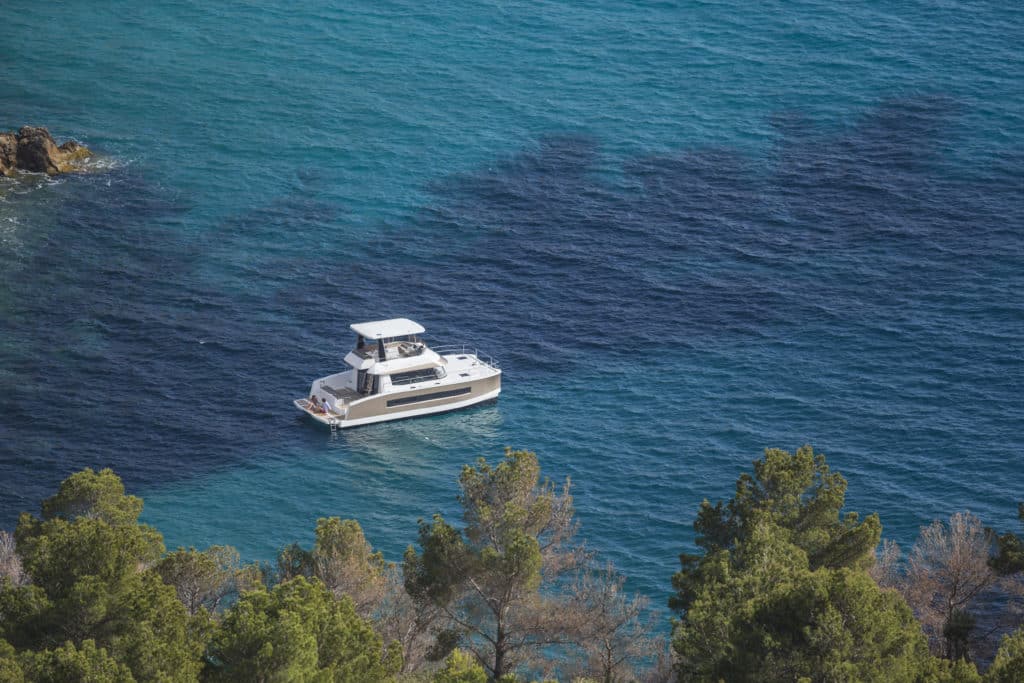
The Fountaine Pajot MY 37 easily accommodates the seafaring family with three- and four-stateroom options. In the three-cabin version, called Maestro, you’ll find an owner’s suite in the portside hull with a queen-size berth and en suite head. Two double-berth cabins and one more head are available for the kids. If your brood is bigger, the Quator setup features four double cabins with two heads.
The 37 is a traveler and can be powered with twin 150 hp or 220 hp Volvo Penta diesels. Top speed with the smaller engines is 17 knots, while it’s 20 knots with the bigger power plants. Interestingly, at 7 knots, the fuel consumption is the same, with either set of motors offering voyagers a 1 ,000-nm range.
Read more: Fountaine Pajot MY 37
Solarwave 64
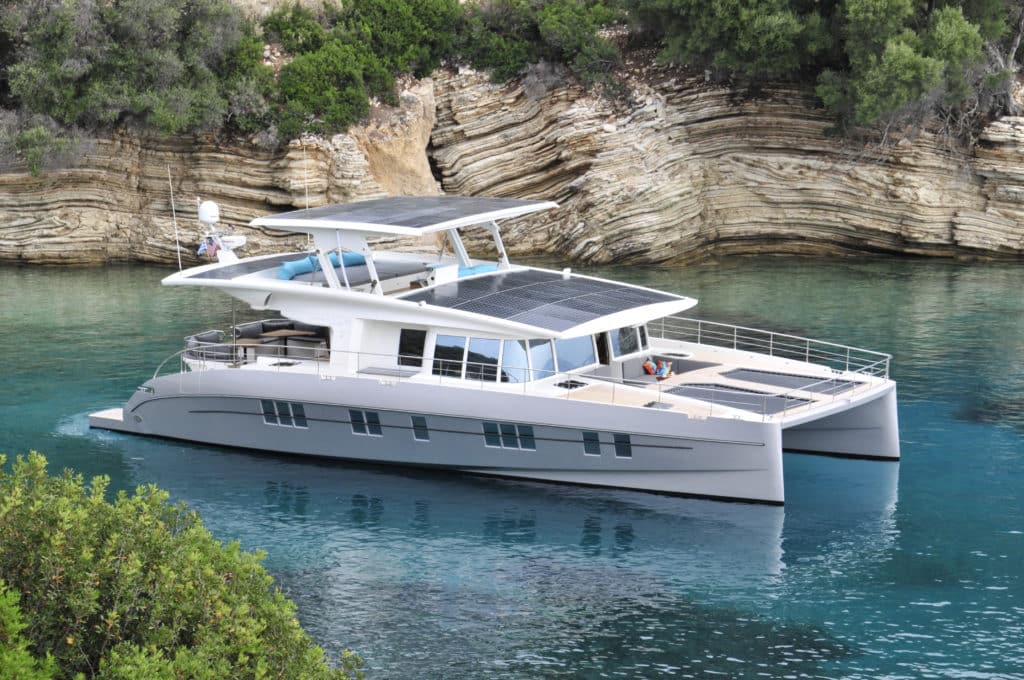
Many yachts boast eco chops because they have a handful of solar panels that power the microwave or navigation lights. The Solarwave 64 , launched last summer, has the potential to run on sunshine alone. The vessel’s 42 solar panels generate 15 kW that are stored in batteries weighing about 1,300 pounds. They connect to electric motors.
Read more: Solarwave 64
Glider SS18
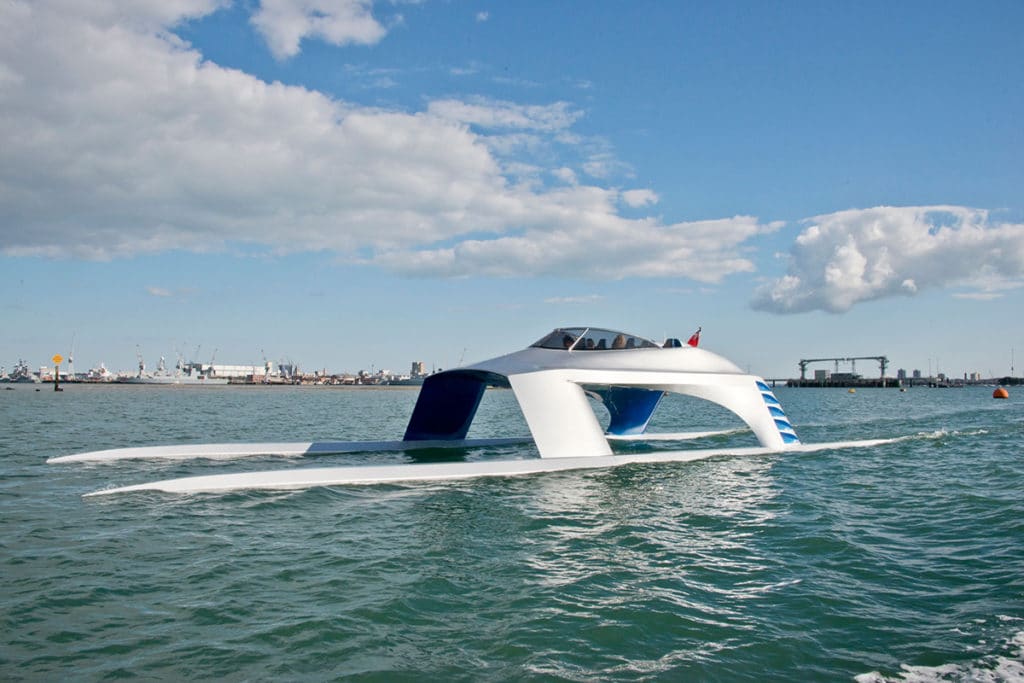
This British builder says it strives for design innovation and the Glider SS18 displays that DNA, the result of 8 years of research and development. She has a head-turning, catamaran hull form constructed from aluminum and composite materials. She is 60 feet LOA with a 17-foot beam, and has a relatively shallow 1-foot draft. Powered by quad Yamaha 300 hp outboards, she can reportedly reach 50 knots, and with her Stability Control System (SCS), should give a smooth ride while doing it.
Read more: Glider SS18
- More: aquila , Aquila Boats , Express and Flybridge Cruisers , Fountain Pajot , Glider Yachts , Horizon Power Catamarans , Lagoon , Power Catamarans , Silent-Yachts , Sunreef , Yachts
- More Yachts
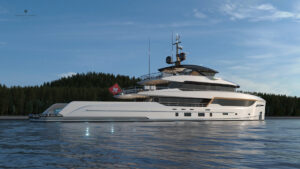
New Flagship for Bering Yachts: The B165
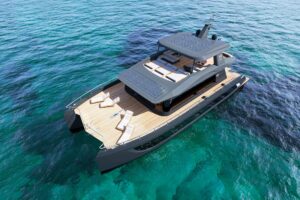
Power Catamaran Popularity Rising
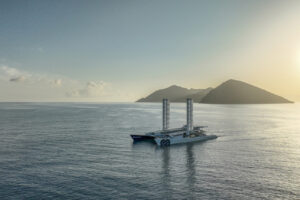
“Energy Observer” Zero-Emission Boat Showcases Sustainability
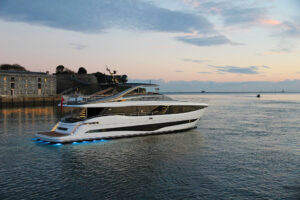
Princess Yachts’ Y95: A Flagship Flybridge
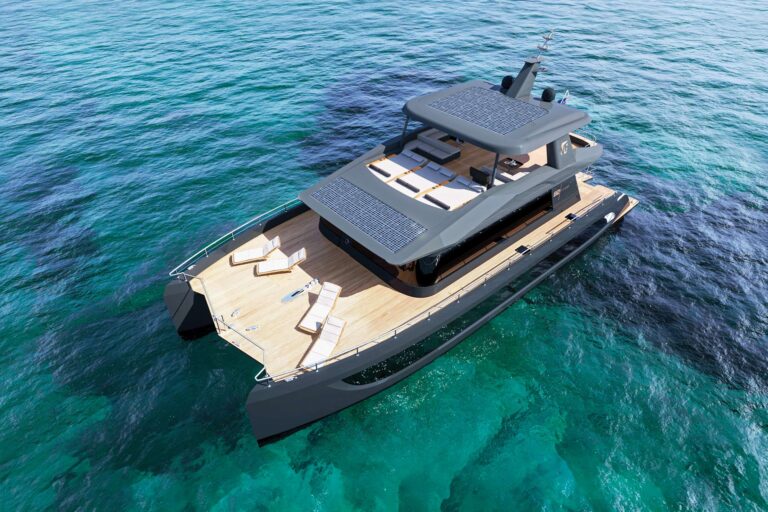
For Sale: Sunseeker Predator 68
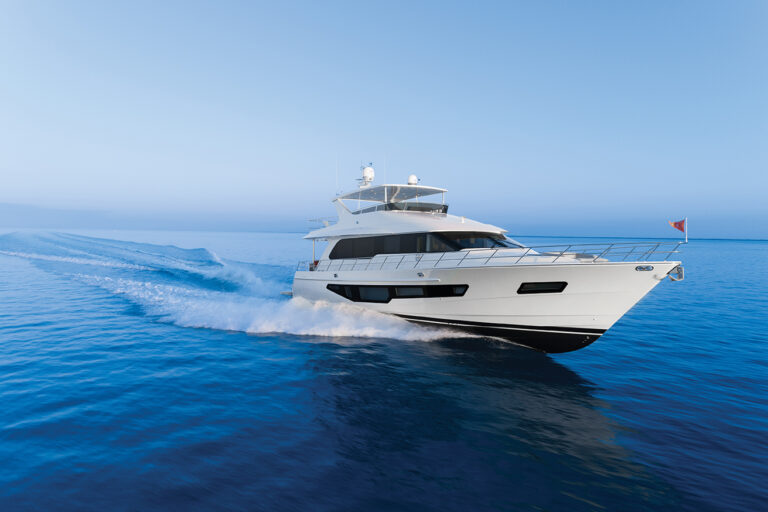
For Sale: CL Yachts CLB 72
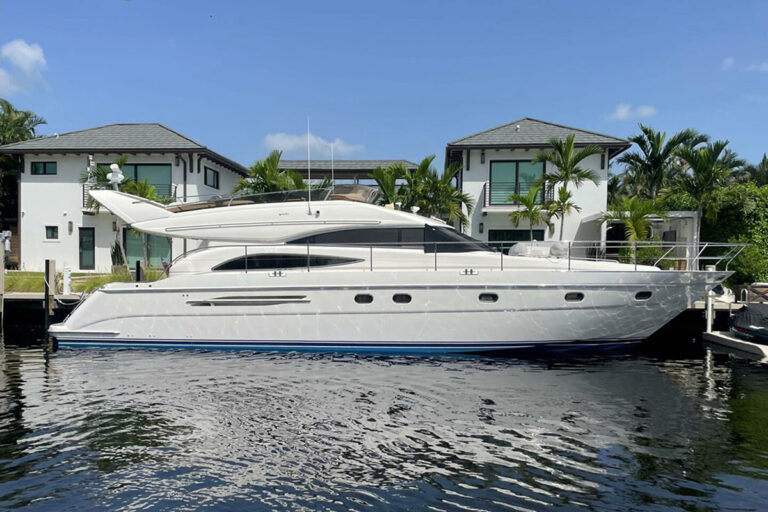
10 Yachts Under $500,000 You Can Have Today

- Digital Edition
- Customer Service
- Privacy Policy
- Email Newsletters
- Cruising World
- Sailing World
- Salt Water Sportsman
- Sport Fishing
- Wakeboarding

James Wharram Designs
Search our site.
- Self Build Boats
- Professionally Built Boats
- Choosing a Boat
How We Design
- Photo Gallery
- Video Gallery
- Articles & Blogs
- Wharram World
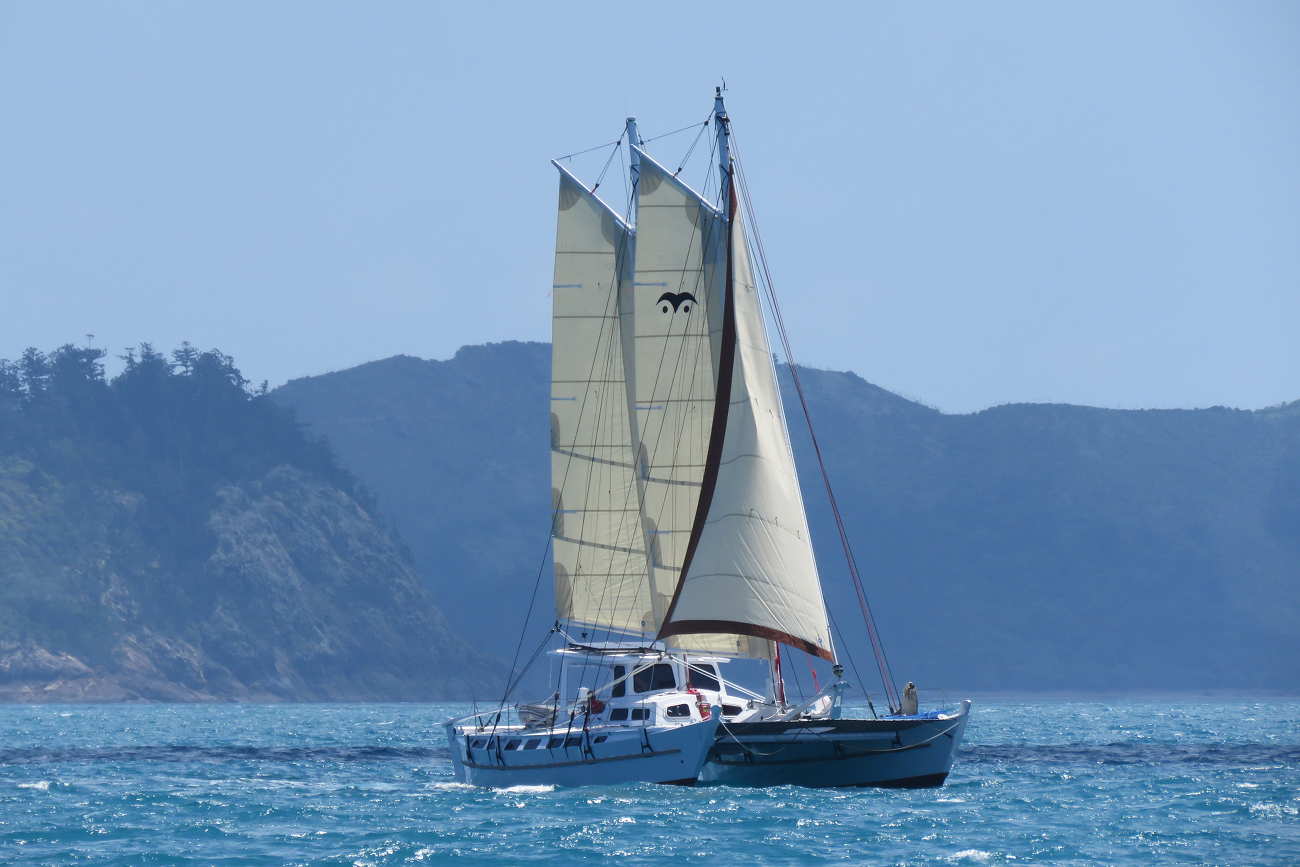
Dream, Build, Sail
Build your own catamaran renowned for its seaworthiness, stability and safe simplicity. All Wharram plans are drawn for the first-time builder.
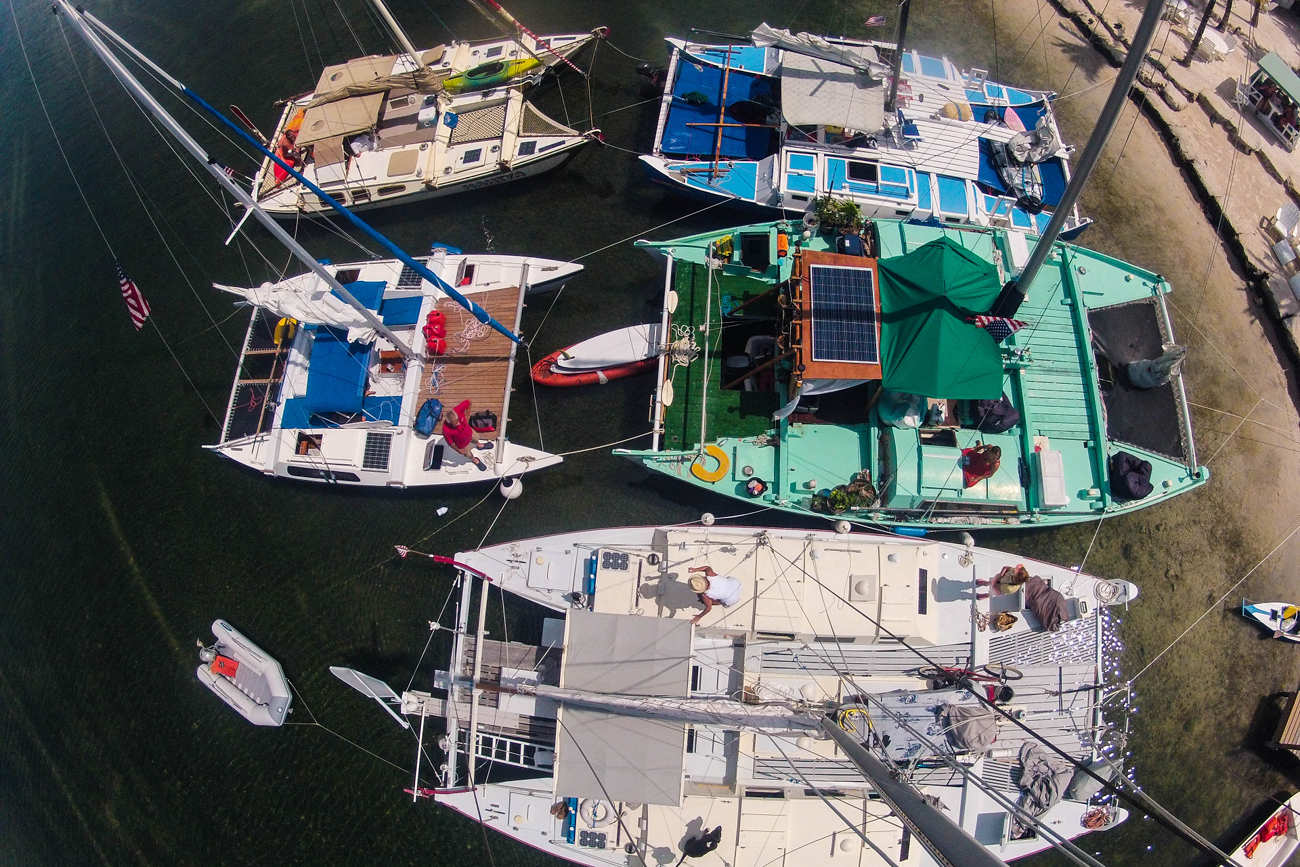
A Global Family Of Sailors
The Wharram World circles the globe. Wharram catamarans have been built and are sailing in all the World's oceans.
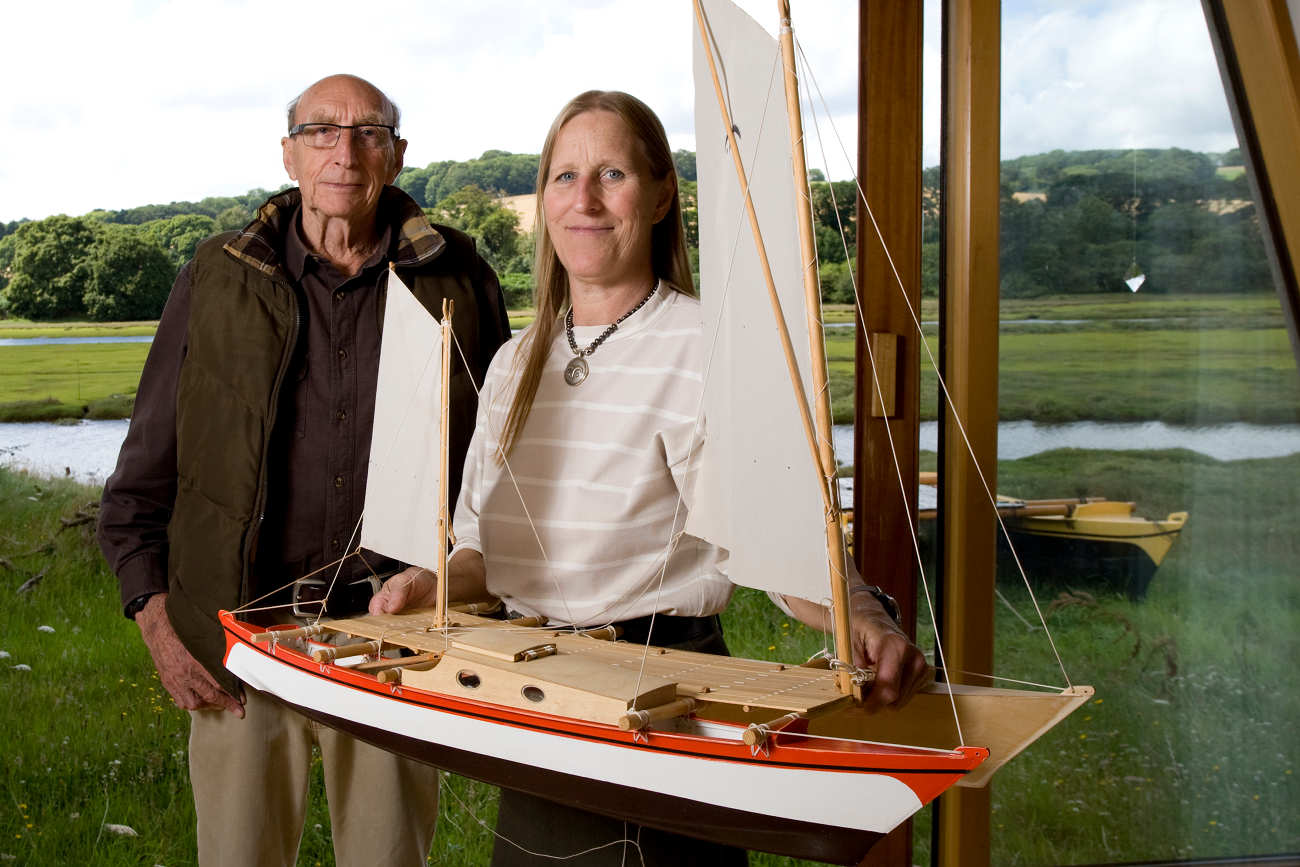
Trusted, Proven Designs
We believe the ancient Polynesians knew a thing or two about building boats to last. Wharram catamarans are proven survivors.

Mana 24: Boat In A Box
Assemble her yourself from pre-CNC-cut plywood parts. Keep it at home, trail it and sail it anywhere.
Seaworthy. Simple. Affordable.
Building your own boat with Wharram Designs is the easiest and most cost effective way to fulfil your sailing dreams. Wharram Self-build boat plans start from only £120.
Wharram designs are based on years of practical, hands-on experience of building and ocean sailing catamarans. They are renowned for their seaworthiness, stability and safe simplicity. Designs from 14’ - 63’ are available for self-building in ply/epoxy with very detailed, easy to follow Plans often described as 'a course in boatbuilding'.
Study our Self Build Boats to familiarise yourself with our range of designs and their unique qualities. Download and read the Wharram Design Book which reviews each design in detail and offers a detailed introduction to the world of self-build catamarans. Order and download Study Plans and immerse yourself into the boat builder's mindset; evaluate the costs; the amount of time required to build your boat; where you will build it and where you will eventually launch it.
Once you have decided on the boat that is right for you, order your Boat Building Plans . All Wharram building plans are drawn for the first time builder, so anyone with a modicum of practical ability can build one of our designs. Our Building Plans present quality instruction, guidance and advice for both novice and professional alike. They are all based on decades of actual building experience and thousands of ocean miles sailed.
Go on adventures and live the life of your dreams. Spend your weekends coastal trekking and camping, or live aboard and spend your days sailing around the world. Become a member of the global family of Wharram builders and sailors. Wharram catamarans have been built and are sailing in all the World's oceans and can be found in far away ports and anchorages.
The quality of the Wharram self-build catamarans is reflected in their popularity, excellence of craftmanship and sound sailing qualities. More than 50 years on - with over 10,000 sets of plans sold and thousands turned into proud vessels - Wharram 'Cats' can be seen in harbours across the world, maintaining the highest reputation for surviving wind and wave.
Find Out More
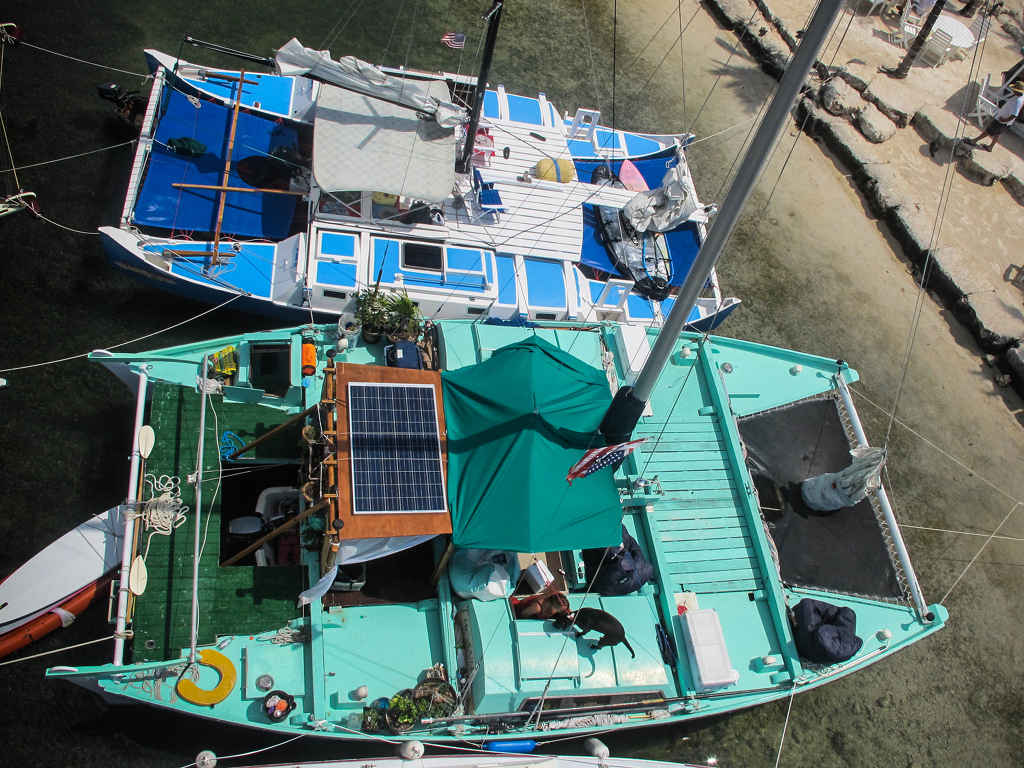
Self-Build Boats
Index of Wharram self-build catamarans. Familiarise yourself with our range of designs and their unique qualities.

Choosing A Boat
To help you select a design, read our practical advice about basic requirements, building times, building methods, and costs.
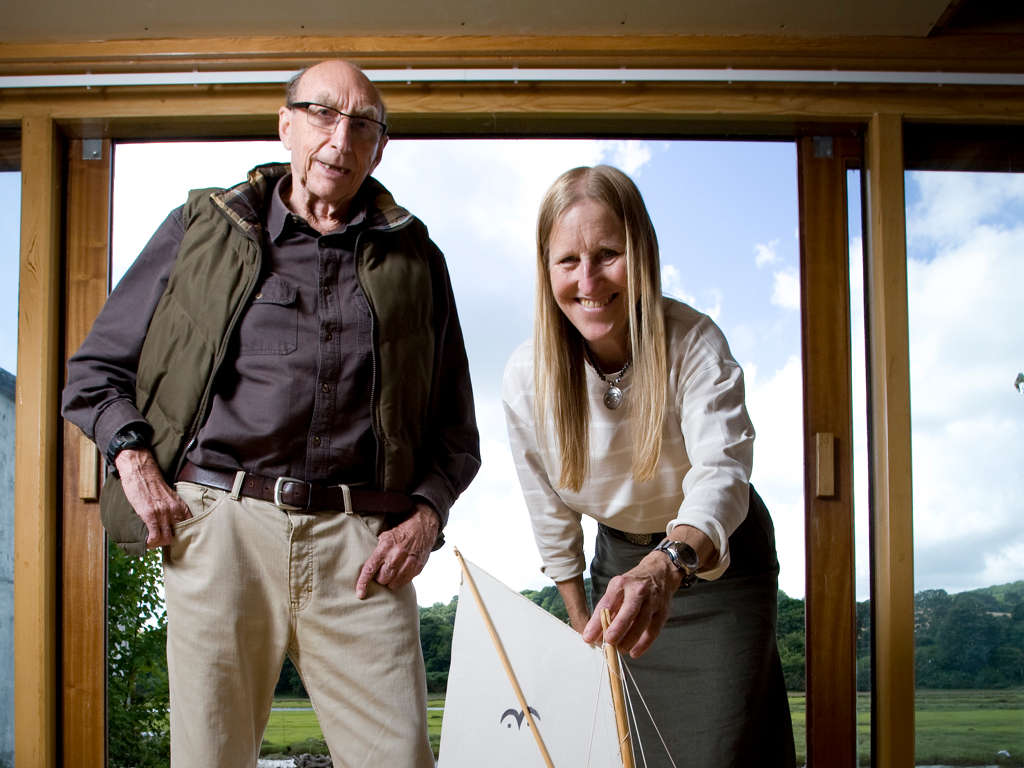
Several articles giving an in-depth look at our core design principles and how they are reflected as seaworthy, stable vessels sailing the oceans.
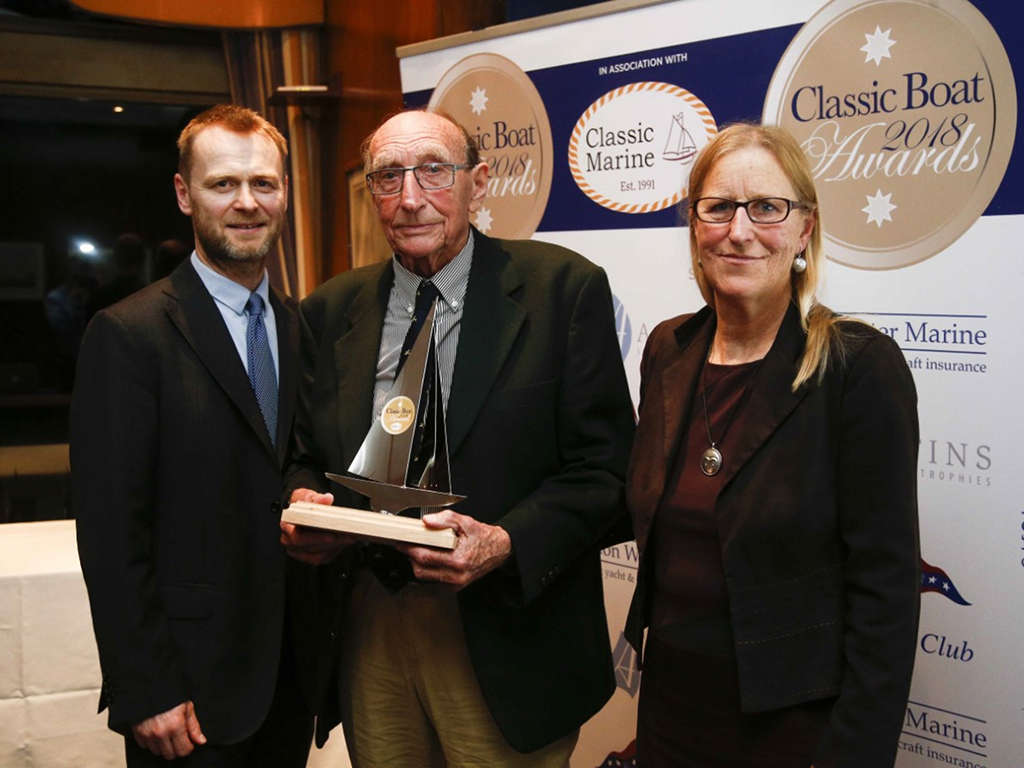
James Wharram: Lifetime Achievement Award
A special award was presented to James Wharram for a 'Lifetime Achievement' as Pioneer catamaran builder - sailor and multihull designer.
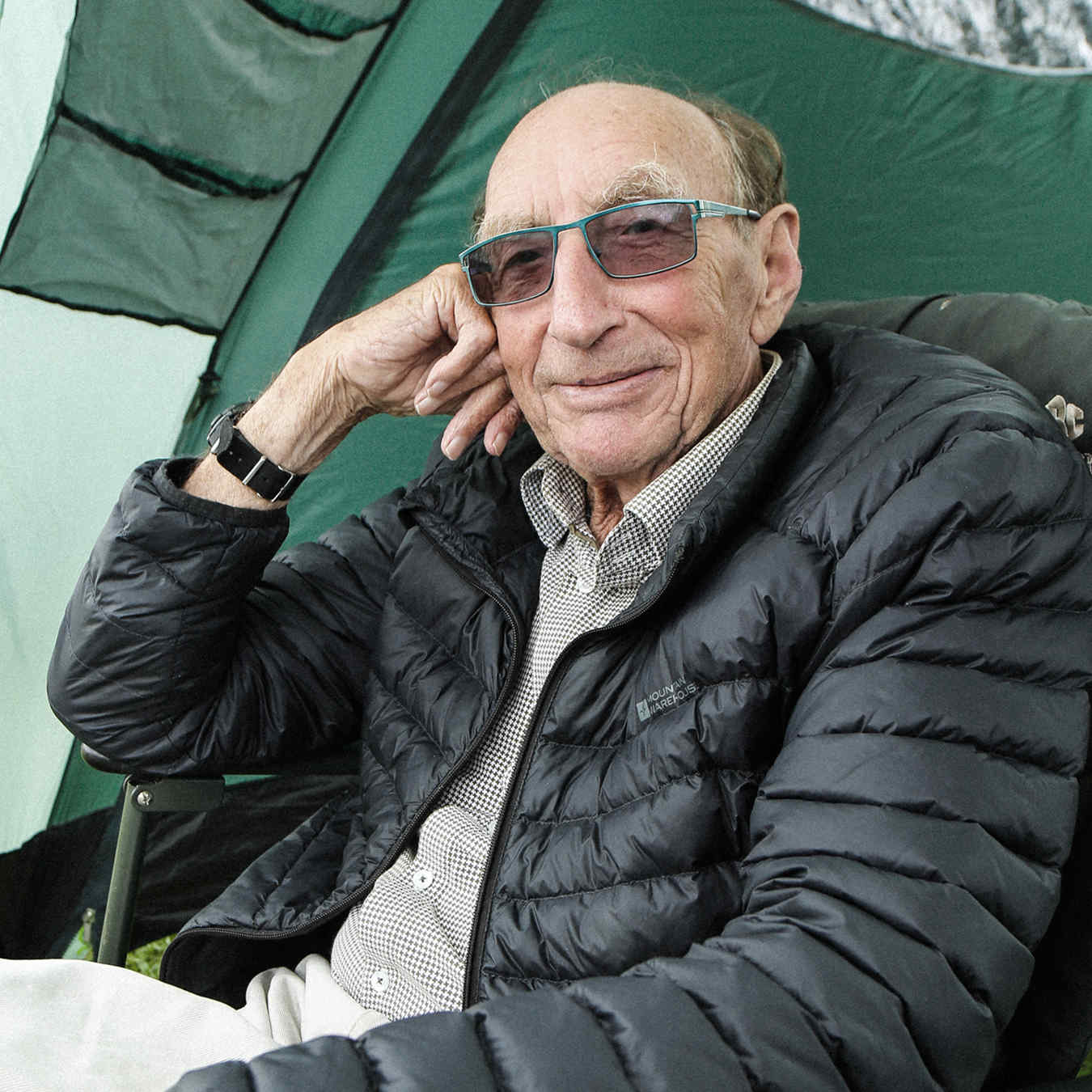
About James Wharram
In the mid 50's, based on his research into ancient Polynesian boat design, James Wharram built the first off-shore Catamaran in Britain and sailed it out into the Atlantic. While the world's yachting community still did not accept such a design as a worthy sea-going vessel, James was landing his 23'6" 'Double Canoe' called TANGAROA in Trinidad in the West Indies.
There he built a second 40' Polynesian style Catamaran, RONGO, and in 1959 sailed it up to New York and back to the UK accompanied by two German women - being the first to sail a catamaran West-to-East across the North Atlantic. These amazing Trans-Atlantic crossings and the follow up book ' Two Girls, Two Catamarans ' have etched the name 'James Wharram' into the annals of yachting history.
Since then, James Wharram has been designing, building and sailing offshore catamarans longer than any other multihull designer. James was a 'hands-on' designer having, over his lifetime, built personally many of the prototype designs. These prototypes were built in the open, in barns, workshops and all the range of building sites available to self-builders, in a variety of climate types from northern European to the Tropics. James was often referred to as a 'Living Legend' or as written in 'Yachting Monthly' in January 2006: "James Wharram is considered by many to be the father of modern multihull cruising."
James’ last achievement was his autobiography published in 2020 as ' People of the Sea ', which he wrote in conjunction with his design/life partner Hanneke Boon. James died in December 2021 at the age of 93. The design business is carried on by his co-designer Hanneke Boon .
Hui Wharram Cornwall Gathering 2024
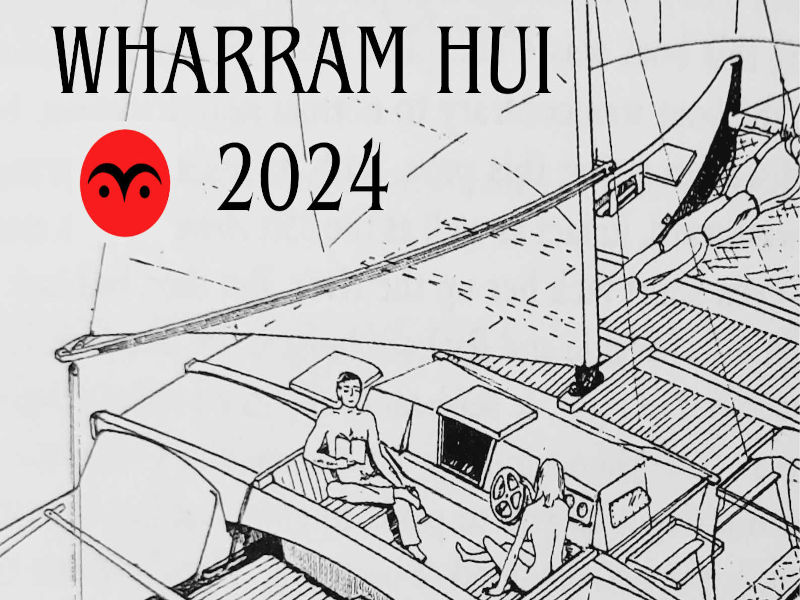
We are having another Annual Hui! This Hui will mark 70 years since James designed his first Catamaran 'Tangaroa' and we are excited that we will be mooring at Devoran Quay just a 5 minute walk from the Wharram Headquarters based in Cornwall. It would be lovely to celebrate his achievement with all of you.
- Read more about Hui Wharram Cornwall Gathering 2024
Pacific Islander History Month

This month of May in America is 'Pacific Islander History Month' and we at James Wharram Designs would like to join in and celebrate alongside them! As you may know, double canoes/catamarans are of ancient Polynesian origin. The modern day catamaran is a direct descendent of these original ocean-going vessels.
- Read more about Pacific Islander History Month
James Wharram's Last Ride

On 23 July, a motley fleet of self-built catamarans gathered off Cornwall to give James and Ruth Wharram their final escort. It was a fitting farewell to a legend. The ashes of James and Ruth Wharram were consigned to the sea to be carried by the ebb current out to the open ocean.
- Read more about James Wharram's Last Ride
James' Eulogy

Hi everyone. I'm Matt. And apart from being truly honoured to be here to help send James on his way to his next adventure, I am here above all as a representative, really, for the many many people worldwide who's lives have been changed, for the better, as a result of James' life work.
- Read more about James' Eulogy
A Living Legend Lives No More

We are very sad to announce that on the 14th December James Wharram left this earthly world, joining Ruth, Jutta and his many close friends that departed before him. At 93 years old his spirit has set out on the voyage to sail the oceans of heaven.
- Read more about A Living Legend Lives No More
People Of The Sea - Compact Edition

The new second edition of the autobiography of James Wharram and Hanneke Boon is now available! This more compact edition at the lower cost of £16 contains all the text and illustrations of the special first edition. An easier size to fit the bookshelf on your boat. A must for all Wharram enthusiasts and other sailors.
- Read more about People Of The Sea - Compact Edition

Multihull Design Considerations for Seaworthiness

This Paper evaluates how a multihull performs in waves with respect to rolling and pitching. Stability is evaluated both in relation to wind and wave action. In particular reference will be made to Prof. Marchaj's recent work - ' Seaworthiness the Forgotten Factor .' Multihulls are studied under the same criteria as monohulls are evaluated in the book, giving a clear comparison between old and new multihull designs, and monohulls, particularly with regard to capsise in wind and waves. Other factors affecting seaworthiness, such as pitching, surfing, rolling, yawing etc, are discussed.
A vector analysis of the lift to drag forces acting on a multihull is presented, and each factor such as hull drag, windage, keel and rig efficiency, etc, are directly related to pointing ability. These factors are related to several multihull types, and it is clearly demonstrated why old multihulls did not point well to windward, and why modern ones do. A method for calculating the wind speed at which a yacht will stop sailing to windward is presented, and related to real designs, with a discussion on how to improve windward ability in a gale, and hence improve seaworthiness. A brief discussion on modern construction techniques to reduce fatigue, high stress concentrations, and the effect of collision damage is presented, with a note on how computer aided design can be used to improve the aerodynamics of the boat above the water.
Seaworthiness
The seaworthiness of a vessel, in broad terms, is the ability of the vessel to provide safety, and comfort for her crew in all weather conditions. The concept of seaworthiness should not only be considered in storm survival conditions, because vessels can be lost in moderate conditions a well as in storms. The effects of fatigue in construction materials and rigging could result in failure in moderate winds, and crew fatigue due to extreme motion could result in errors of judgment, or exhaustion, long before a dangerous situation need otherwise have developed. Collision for instance can occur at any time, and accounts for the loss of a significant number of yachts, and in my opinion is a bigger danger than a storm.
In this paper I shall explain some of the many factors that affect the seaworthiness of multihulls. Including windward ability, stability, motion in waves, and pitching and rolling. I will explain how the construction can be designed to reduce stress concentrations, and how fatigue of materials is taken into account. I will indicate how different multihulls can be made safe in the event of a collision at sea. Along the way I will show how computer aided design can assist in designing hull shapes to control pitching and prevent bow burying characteristics, and to improve aerodynamic streamlining.
The most informative work on seaworthiness in modern yachts to date is Seaworthiness the Forgotten Factor by C.A. Marchaj. Unfortunately the book concentrates almost exclusively on monohull design and very little is mentioned about multihulls. Since space is limited, I will not redefine the formulae and criteria for seaworthiness, which are explained clearly in the book, instead I will just go straight on to show how a multihull fits into the picture. On reading through Seaworthiness the Forgotten Factor, I could not help constantly thinking how few of the vices and problems attributed to monohulls were applicable to modern multihulls.
Over the past 20 years a number of distinct types of multihull have emerged all having different sailing qualities, and seaworthiness. There has been a steady improvement in the understanding of the factors required to make a multihull both safe and fast, resulting in boats that are extremely seaworthy, as will be demonstrated by the following analysis.
The basic types of Multihull are as follows. Obviously these are the extremes, and many boats will fall between the categories. The groupings given here represent a chronological order in only a very general way. Boats having some of the characteristics of the most modern types can be found in multihulls whose designs date back over 1000 years. On the other hand boats of all types are still being designed and built. From a subjective point of view, the order given here follows my own muiltihull sailing and design experience closely. I first sailed across the Atlantic some 17 years ago in type 1, later I crossed again in a type 2, and a few years ago in a type 3. Recently most of my long distance ocean voyaging has been aboard a type 6 catamaran. So the "generations" are more applicable to my own rather than general criteria, even though most observers of the development of the modern multihull will agree with the broad outline of each type.
A keel in the sense used below is a foil for resisting leeway. The keel is not balasted as in a monohull, and may be fixed, or retractable either vertically (daggerboard) or by pivoting (centerboard). Amas are the outer hulls of a trimaran, sometimes referred to as outriggers, or the smaller hull of a proa.
1. Older type of trimaran. Relatively heavy. High Windage. Inefficient underwater and keel shape, often with either a fixed keel or no keel at all. Small sail area. Hard chine with high wetted surface. Poor pitching control. Medium buoyancy amas (around 110% of the displacement of the boat). Amas usually both in the water at the same time. Narrow beam (length to beam ratio = 2). Construction sometimes doubtful often in sheet plywood. Low long term fatigue.
2. Second generation trimaran. Becoming lighter. Larger sail plans. Less accommodation. Low buoyancy amas (75 to 90%). Wide beam (L/B = 1.3). Considerably reduced windage. Improvement in structural design.
3. Third generation trimaran. Light weight (due to the use of composite materials). Large Sail areas. Wide beam (L/B < 1.5 to as low as 1.0 in smaller boats). High buoyancy amas (up to 200% of displacement). Pitching very well controlled by use of different hull shapes on main hull and ama. Sailing attitude well controlled on all points of sail. Low windage.Dramatic improvement in structures due to use of Computer aided design, and better understanding of composite materials.
4. Early catamaran. Relatively heavy. Narrow beam (L/B often over 2). High windage. Small sail area. Inefficient underwater shape and low aspect fixed keels. Cruising cats very heavy by today's standards. Large flat windows in coachroof causing high windage. Often prone to hobbyhorsing and pitching due to rocker and symmetry of hulls.
5. Second generation cat. Open bridgedeck designs. All accommodation in the hulls. Greatly reduced windage. Keel shapes improved. Retractable daggerboards. Large sterns and fine bows causing bow burying tendencies on a reach. Greatly improved windward performance. Pitching control still poor, some attempts to reduce pitching by using bulb bows. Wider than early designs. Larger sail plans.
6. Third generation cats. Open bridgedeck designs with large accommodation in hulls. Hobbyhorsing eliminated by hull shape. Bow burying on a reach eliminated. Windage greatly reduced by rounding and streamlining deck edges. Powerful efficient rigs. Sophisticated retractable daggerboards and rudders. Minimum wetted surface hulls. Excellent windward performance. Fast easy motion through sea. Very stable with wide beam (L/B < 1.5). Similar structural design improvements taking place as for trimarans.
7. Fourth Generation cats. Basically as 6 above but with very streamlined bridgedeck cabin for large accommodation and low windage. Light weight maintained, with large weight carrying ability for fast cruising.
8. Other types. Proas (Atlantic, ama to leeward, and Pacific, ama to windward) and trimaran foilers. In general these are development types almost exclusively for racing, as far as modern multihulls are concerned, and they have special problems that require particular knowledge, experience and seamanship for safety at sea. Due to lack of space these types will not be dealt with in any detail in this article.
Although I am concentrating primarily on cruising designs, most of the design concepts have been derived from successful racing designs. Indeed the racing designs which push the limits of performance to the edge, are an excellent test bed for cruising boats, particularly racers designed for the long offshore events like the OSTAR and the 2STAR, which are both predominantly to windward across the North Atlantic. In these races, ease of handling and motion, windward ability, structural integrity, and seaworthiness are of paramount importance.
It is interesting to note that this development, resulting in a dramatic increase in seaworthiness and speed, has taken place over virtually the same time period as the monohulls have been deteriorating in seaworthiness. The primary reason for this has to be the fact that the development of multihulls has taken place without the restriction of any rating rules, with the only criteria for successful design being to improve seakeeping qualities and overall performance - resulting in the development of extremely seaworthy cruising designs.
Boat Motion in a Seaway, and the effect on the ships crew.
There are 6 basic forms of motion in a seaway (ref 1) , which combine in various ways to give the full dynamic movement of the yacht at sea.
With the exception of type 2 above, multihulls are virtually immune to rolling. This means that the boat sits on the water like a raft - following the surface of the sea, giving great crew comfort while sailing, particulartly down wind. When lying ahull, cats and tris exhibit different characteristics. Firstly catamarans have a very high roll moment of inertia ( Ir ), because the weight of the boat is primarily concentrated at the hull centerlines. The buoyancy of the boat is also concentrated at the extremity of the hull centerline beam, giving massive roll damping. Open bridgedeck cruising cats benefit most from the effect, and low buoyancy ama trimarans (Type 2) least. In a tri the weight is concentrated closer to the center of gravity (CG),reducing Ir, and the amas take longer to pick up buoyancy as the boat heels, thereby reducing damping. In a low buoyancy ama tri this effect can lead to capsize in waves,(when lying ahull) as will be shown later, and different techniques of seamanship are required to ensure the safety of this type of multihull in a storm.
2. Pitching and hobbyhorsing
Many early multihulls were prone to hobbyhorsing, and pitching. This was caused by too much rocker on the hull profile, and fine V sections both fore and aft. As hull shapes improved tending towards more U shaped underbodies particularly aft, pitching still remained a problem, because the large width of the stern sections caused the sea to lift the sterns as the boat passed over the wave, driving the bow down. However we now know that pitching can be dramatically reduced by finer sections at the stern combined with the center of buoyancy being moved forward in the immersed hull, and aft in the lifting hull (ref 2 and 3 ). This effect can be achieved in both cats and tris, giving a very comfortable and easy motion upwind. At the same time windward performance is improved, because the apparent wind direction is more stable across the sails.
Any tendency to yaw has been virtually eliminated in the modern multihull due to the shallow draft of the hull (because of the U shaped sections and the light weight), and by the use of retractable daggerboards. Once the keel is removed when sailing downwind, there is virtually no chance of broaching, as long as the forefoot does not dig in. This can be prevented by firstly reducing the forefoot, and by picking up buoyancy quickly in the forward sections of the boat above the waterline. Computer simulations of the hull in different bow down trims, and at varying waterline positions, are now an essential part of the design process to control sailing attitude properly, both on and off the wind. see Fig 1. ( ref 4 ).
A Multihull will surf very easily, making for fast passage making in the open ocean. Sailing downwind in winds up to 40 knots is usually quite comfortable and easy. The apparent wind being reduced by the high boat speed. However particular attention has to be paid to rudder size and design to maintain good control at surfing speeds in excess of 20 knots. Elliptical balanced spade rudders of airfoil section reduce helm loads and drag at high speeds. Rudder stocks have to be very strong to be able to steer consistently at such high speed. I favour using stainless steel or titanium, rather than carbon for rudder stocks, because at least the rudder will bend if overloaded, instead of shearing off. I design for a factor of safety of 1.5 with rudder at 90 degrees to the waterflow at 25 knots. This situation is quite possible if the boat starts to broach and slew down a wave, and the helm is turned to full lock (35 degrees).
Once the wind speed becomes so strong that surfing downwind is dangerous, and if the boat will not make progress to windward or lie ahull, (this could well be the case for types 1,2,and 4) It will be essential to deploy a sea anchor to control the boat speed. Much has been written on this subject, and certainly is an accepted way of surviving a severe storm in a multihull. From the designer's point of view it is essential to provide adequately strong attachment points on the bows and sterns.
A modern light displacement multihull lying sideways to the seas with no sails up (i.e. lying ahull), and with the daggerboards up, will surf sideways very easily in a breaking crest. It will be demonstrated later that this is a very important feature in the seaworthiness of multihulls lying ahull in a storm. Earlier multihulls with fixed keels and tris of type 2, are prone to tripping over their keels or amas when struck by a breaking crest. Narrow beam increases the danger of capsize in this situation. If sideways motion of the yacht needs to be stopped, for instance because of a danger to leeward, this can be done by either deploying a sea anchor abeam, or by putting down the upwind board (this only applies to a cat). The upwind board can act as a brake without imparting rotational momentum to the boat. If the boat does not rotate - it will not capsize.
This is a complex problem to define clearly for a multihull, because the two immersed hulls are at different places on the wave front at any given time. Nevertheless, they heave less than monohulls because the hulls are slimmer, allowing the boats to cut through the water when sailing. Loss of apparent displacement at the wave crest and rotational momentum imparted to the boat by heaving on the upwind hull will assist in capsizing an overcanvassed multihull due to wind and wave action. Heaving assisted capsize has been experienced particularly in tris of type 2, and cats of type 4. This is of particular importance and will be dealt with more fully in the next section.
This is generally a very contentious and little understood subject when multihull seaworthiness is discussed, and is probably the biggest fear that inexperienced sailors have about this type of vessel. And while it is true that certain multihulls have capsized, it is clear from the above that there are many different types of multihull, and indeed there are different ways in which they can capsize. I will endeavour to show that by careful analysis, and a with a real understanding of the factors that contribute to capsize vulnerability, it is possible to design a multihull that is extremely difficult to capsize, and one that is very safe in all conditions. (Bearing in mind that there may be a wave out there that will overwhelm any vessel).
Stability in wind
Static stability is a measure of the stability of the boat in flat water, and is given by the following formula. (ref 2 )
- D = displacement (lbs).
- CE = height of the center of effort above the center of lateral resistance (CLR) in feet. Use C of E to Waterline for quick calculation.
- SF = windspeed in MPH that the boat has to reduce sail.
- SA = sail area in square feet.
- B = beam between the cenerlines of the outer hulls in feet.
This formula gives designers a measure of stability as an indication of the power to carry sail. i.e. the ability of the boat to resist capsize by wind action alone. There are two factors that can reduce SF. Firstly if the boat has a high angle of heel at the point of maximum stability, (worst in trimarans of type 2, and minimal in all catamarans) the correct SF is given by replacing beam in 1 with beam overall x cos(angle of heel). Typical values for SF can vary between 12 mph for a Formula 40 racing catamaran, to over 40 mph for cruising multihulls. Modern light cruiser racers would be in the range of 24 to 30 mph. So it is clear that in addition to the different types of multihull listed above the initial static stability can vary enormously.
Stability curve and stability in waves
Righting moment is the distance from the center of buoyancy to the center of gravity x the apparent weight of the vessel. This is basically the vessel's inbuilt static resistance to heeling. The forces that heel the boat could come from the wind or the waves.
Fig 2. shows the curve of righting moment versus angle of heel for a typical modern 35ft catamaran and trimaran racer cruiser to my design. The trimaran (Type 3 high buoyancy amas) has an overall beam of 32 ft. and the cat ( type 6 ) beam = 23ft. The trimaran has less accommodation, and is lighter than the cat, but because of the wider beam it has greater maximum stability. It is important to note that the max stability of the tri occurs at around 20 degrees angle of heel, while the cat has a max at about 6 degrees. If the buoyancy of the ama is reduced below 100 % of the weight of the boat (as in type 2 above), the maximum stability will be reduced not only in proportion to the reduction in buoyancy in the ama, but also by the effect of added apparent displacement from the downward pressure from the sails at high angles of heel. At 20 degrees this would cause a loss of righting moment in the order of 20%. If the ama buoyancy was only 80% in the first place, the total righting moment would be only 60% of an equivalent trimaran of type 3.
Fig 3. shows the same righting moment curve for the cat versus a typical modern cruiser/racer monohull. The energy required to be input into the yacht in order to roll it from 0 degrees to the point of capsize (90 degrees in the cat and 135 degrees in the Mono) is given by the area under the curve. From the graph it is clear that the energy required to roll the cat over is 50% higher than the monohull. Of course in either case the initial angle of heel will reduce the available reserve of stability, and in the trimarans this reduction in energy resistance to roll will be greater than a cat. The energy to roll a tri to 90 degrees is much greater than a cat provided it is of type 1 or 3.
However in all cases, in order to a capsise to occur, the energy from the wind and the waves (equal the area under the righting moment curve) has to be transferred to the vessel in the form of rotational energy. In waves alone, if the energy of the wave impact is not changed into rolling energy the boat can not capsise.
The following table gives the dispalcement and dimensions of the cat, tri, and monohull shown in the graphs.
Firstly if we consider the action of the waves alone. Tank testing has shown ( ref 1 ) that capsise due to the action of unbroken waves is impossible. Therefore when a vessel is lying ahull the impact of the breaking crest is the primary means of energy entering the system which may be transformed into roll energy. A multihull follows the slope of the wave face exactly like a raft as shown in fig. 4. However, because the buoyancy and the weight of the vessel is concentrated at the extremities of the beam (particularly in cats of type 6,) multihulls will be more stable against rolling than a simple raft. Equation 2 gives the impact energy transferred to the boat by the wave.
- Ei = energy transferred during impact.
- Mi = impact moment
- Ir = roll moment of inertia of the boat
- Ia = inertia of water entrained by the hull (known as added mass)
- d = density of seawater
- A = area of hull superstructure
- Cd= coefficient of drag of hull superstructure.
- r = impact moment lever.
- vi = velocity of impact
The above equations give us the means to compare the way the two boats change this vitally important impact energy to rolling energy. These equations are in fact very difficult to calculate in reality, but they do tell us that in order to reduce the rotational energy imparted to the boat by a breaking crest, we need to increase Ir and Ia and decrease r and hence Mi.
In a multihull with the boards retracted the lever arm (r) is reduced to the distance between the center of lateral resistance (CLR) of the downwind hull and the center of impact on the windward hull side. Obviously this is very small compared to the lever when the keel is down, and hence the impact moment transferred to the boat is very small.
Secondly, particularly in the case of the open bridgedeck cruising cat (type 6), the roll moment of inertia is very high because of the hull configuration. Also Ia is high since the water entrained by the hull is a great distance from the center of gravity. Therefore this type of cat has the least energy transferred from the the wave impact into rolling energy. On the other hand a trimaran with the board up will still have a small r and hence a low Mi, but the roll moment of inertia Ir is much lower than a cat, because the weight is concentrated closer to the center of gravity. Therefore more roll energy will enter the trimaran lying ahull than the cat. ( ref 17 )
So the above equations show that in most multihulls, the energy of impact is not transferred into rolling, and in fact virtually all the energy is absorbed by surfing sideways. This is exactly the same effect that saves the older type of monohull from capsising in waves, the only difference is that the monohull has to experience a knockdown before the keel is almost parallel to the surface of the water, thereby reducing the lever arm (r) and allowing the energy to be dissipated into sideways motion.
The multihull that fares worst in this situation is the trimaran with low buoyancy amas. When a wave hits the side of the boat, firstly it will roll quicker and much more than a cat, and if the ama immerses to the point where it digs in, thereby stopping sideways movement, all the energy will be transferred into rolling and a capsise is possible. Also having fixed keels or leaving the downwind board down will greatly increase the risk of capsise in waves for all types of multihull.
Of course the situation may arise when it may be necessary to limit the sideways drift of the boat, for instance if there is a danger to leeward. In a cat this can be achieved safely by lowering the windward daggerboard. All other types will have to use a sea anchor. Whether to deploy the sea anchor from the bow or the side of the vessel depends on the type of boat, and the conditions. Several people have written on the subject including the Cassanovas, and Dick Newick, who both have used and favour this method of controlling drift and rolling in a storm.
Wind and wave action
When you combine the action of wind and waves, a catamaran is more vulnerable than a tri, because when a boat is sailing the heaving action of the wave on the windward hull imparts rolling momentum to the boat, reducing the energy reserve left under the righting moment graph in fig 2. If the boat has a low static stability, and is being sailed close to the limit, with the daggerboard down, it will be possible to capsise in waves in a wind speed that would be safe in flat water. Cats are more vulnerable than tris because in general the static stability of the cat is less than an equivalent tri. This is the main reason that tris are considered to be safer for short handed racing - they can be sailed harder in waves with a greater margin of safety. On the other hand this is a very good reason to make cats as wide as possible to increase the static stability and thereby increase the safe sail carrying power.
Windward ability
Another area of traditionally poor performance in multihulls is their windward ability. And indeed it is true that the older types of multihull (types 1 and 4) would tack through 100 degrees or more, and had very inferior pointing ability when compared to their monohull counterparts.
Windward ability is a very important measure of seaworthiness, and can prove vital if there is a danger to leeward in a gale. So apart from the need to improve performance for racing, it is essential to design multihulls with greatly enhanced windward ability. It is not enough just to be able to sail fast on a reach.
To understand why the modern multihull is so good to windward, we have to look at the diagram of the forces acting on a yacht when it is sailing in a balanced steady state. See fig 5. ( ref 5 )
EA + EH = (beta) ......................................4
- EA = aerodynamic drag angle
- EH = hydrodynamic drag angle
- CL = coefficient of lift of the sails
- Cd = coefficient of drag of the sails
- VA = apparent wind speed
- SA = sail area
- CS = sideforce coefficient
- Vb = boat speed
- A = area of keel
The diagram and the equations simply tell us that if we can improve the lift to drag ratio of the rig, and of the keel, we will improve pointing ability. But what is really significant is that we can calculate exactly how much we can improve pointing ability by improving lift to drag.
Firstly the rig and the aerodynamic drag
The polar diagram of a typical sloop rig is shown superimposed on the yacht in fig 6 (ref 6 & 7 ). The solid line represents the lift to drag of the sails only, and the dotted line is the lift to drag when the parasitic drag of the windage of the hull is taken into account. In a multihull aerodynamic drag of the hulls is very high, and the following equations allow us to calculate the total drag of the sails and the hulls. ( ref 5 )
Cdp = CP x AP / SA ..............8
CdTOT = Cdp + Cd ...............9
- Cdp = coefficient of drag of parasitic element related to sail area
- Cp = parasitic drag coefficient of each element
- Ap = area of parasitic element
- CdTOT = total coefficient of aerodynamic drag for whole boat + rig
The important facts to note from equations 8 and 9, are that the coefficient of parasitic drag (Cdp) is inversely proportional to sail area. In practice this means that if sail area is reduced, the effect of parasitic drag is increased, thereby increasing the aerodynamic drag angle and reducing pointing ability. Also if windage is increased the pointing ability is reduced. In practice an open bridgedeck cat of type 6 might have CdTOT = 0.33, while the addition of a bridgedeck cabin with flat sides would increase Cdp by 35%. This will give a CdTOT(including bridgedeck cabin) = 0.39.
If this increase is laid out on the polar diagram shown in fig 6, it will show an increase in EA of 3 degrees. This means that the boat will tack through 6 degrees more. If the Cp of the bridgedeck could be reduced from 1.2 (coefficient of a flat plate) to 0.3 by careful aerodynamic design, Cdp would only be increased by 8.7% resulting in a loss in tacking angle of only 1 degree. Therefore it is vitally important to pay very careful attention to parasitic drag, and to design clean aerodynamic shapes.
To stop a boat making any progress to windward the aerodynamic drag angle has to increase to around 60 degrees, and if the effect of the the waves knocking the boat to leeward is included, this could drop to say 55 degrees. In order for this to happen the total lift to drag ratio has to fall to 0.700. This is quite possible in slab sided bridgedeck saloon cat with a total coefficient of drag (Cdtot) of 0.392. In fact this will occur in such a multihull when the sail area is reduced to 27% of the full working sail plan. When you consider that the usual proportion of the storm jib and deep reefed mainsail is around 20% of the full working sail plan, it is obvious that serious consideration has to be given to boat aerodynamics, not only for good sailing performance, but for basic seaworthiness.
Worse still is that in an older type of multihull where the best tacking angle was only 100 degrees in the first place, (which implies an aerodynamic drag angle of 28 to 30 degrees), the sail area only has to be reduced to 36% before all windward ability is lost. And indeed this has proved to be the case in many of the old designs.
Computer Aided Design
We now have the ability to design a hull and decks for a complete multihull directly on a computer screen ( ref 4 ). The computer allows us to rotate the hull and draw sections at any angle across the boat. We can therefore see the shapes that the wind is going to flow over in the exact direction that the wind strikes the boat. Remember that the wind never comes from dead ahead in a sailing boat. In fact the boat is really moving crabwise through the air, at best the wind crosses the boat at and angle of around 30 degrees from the bow.
Fig 7. shows the perspective view on the computer screen of a bridgedeck cabin for a 43ft cat. It will be obvious that this is a very useful aid in achieving aerodynamically clean 3 dimensional shapes like this. And the next step will be to test the complete hull and bridgedeck in a wind tunnel. However it will also be possible to compare the pointing ability of the real boat that this is designed for, against that of an open bridgedeck boat of the same size. The coefficient of drag can then be calculated from the loss in pointing ability.
Hydrodynamic Drag
If we apply the same treatment to the underwater shape and keel of a multihull by superimposing the results of tank testing on the boat, in the same way as we did for the sails in Fig 6, we find that the effect of drag of the keel and the hulls on the pointing ability is as follows:
- 25% decrease in keel efficiency = total loss in tacking angle of 5 degrees.
- Double hull weight = total loss in tacking angle of 6 degrees.
- 16% decrease in sail area = total loss in tacking angle of 4 degrees.
- 35% increase in aerodynamic parasitic drag = total loss in tacking angle of 6 degrees.
If we compare an open bridgedeck cat of type 6 to an older type of multihull, this is exactly the sort of difference in pointing ability we observe.
When compared to a design of type 1 or4 the modern multihull is much more streamlined, about half the weight, has an efficient keel, wide width for high stability and sail carrying power, and larger rig. All these features combine together to give a windward performance better than any equivalent sized monohull. In a force 4 wind, a modern 60ft racing trimaran will sail upwind at 16 knots tacking through 75 degrees. While an open bridgedeck cruising cat like the Spectrum 42 will tack through 80 degrees, at around 10 knots.
The implications of this sort of performance is also an indication that modern multihulls will sail upwind in a gale long after the monohulls have had to heave to. Indeed this superior windward ability has been conclusively demonstrated in all the windward races of the North Atlantic and is a factor of major significance in the improved seaworthiness of modern designs.
Safety in the event of collision or capsise
Even though it has become extremely unlikely that a properly designed multihull will capsize, the possibility still exists, in much the same way as it exists for any monohull. The monohull's escape valve is that there is a chance that the boat will right itself before it sinks. The multihull on the other hand can be made into a safe raft for the crew to live on in the inverted position, provided that proper provision for this eventuality has been made at the design stage. In terms of ultimate safety of the crew in the most extreme storm - I believe that a habitable inverted multihull offers better survival prospects than a partially flooded - dismasted monohull that has rolled through 360 degrees, and is in imminent danger of doing so again.
If possible watertight compartments should be built in to the amas of a trimaran, and where ever possible in a cat. A trimaran can be made virtually unsinkable by making the cross beams watertight, and by dividing the ama up into watertight compartments, in such a way that if any section is holed, the remaining volume is over120% of the displacement of the main hull. The bows should be backed with foam, and a watertight collision bulkhead can usually be placed about 6 feet back from the bow, without affecting the accommodation.
The structural cross beams of a cat should be designed to be watertight, with their combined volume large enough to support the whole weight of the vessel. In the unlikely event of a capsise, this will ensure that the boat floats high out of the water, which reduces stress on the structure, and allows the crew to live in the upturned hull.I incorporate escape hatches in all my designs as a matter of course.
Construction and Fatigue - Integrated Structure
During the lifespan of a multihull it is subjected to many cycles of a complex array of loads, and if the boat is to survive in all conditions without damage careful attention has to be paid to avoiding stress concentrations in the structure, and to the long term fatigue of the materials used to build it.
Fig 8 shows a generalised stress diagram for an open bridgedeck catamaran. By using a computer to analyze the loads at any point in the boat, and then laying appropriate amounts of fibers aligned in the direction of the stress, the stiffness and the strength of the boat can be greatly increased. While at the same time weight can be saved by removing excess material where it is not required. This weight saving actually increases the strength of the boat, because it not only reduces the loads that the boat experiences, but it reduces stress concentrations, which are a major cause of fatigue failure. If the structural design is carried out in this way, and adequate allowance is made in the fiber stress levels in the all parts of the boat to account for long term fatigue, the lifespan of the boat will be greatly increased. At present, research indicates that if a composite laminate can survive over 10 million cycles, it will last indefinitely. In general in order to achieve this, a factor of safety of at least 10 is required. In all my cruising designs I use at least 10 as a factor of safety in areas of maximum stress. For carbon in particular the laminate is strain limited because the material is so stiff, has a relatively low strain to failure, and an extremely high notch sensitivity. However the material can be very successfully used in areas where great stiffness is required, like the cross beams of a multihull. There are many racing and cruising multihulls sailing that have been designed in this way, and that have suffered no structural failure what so ever, in thousands of miles of hard ocean sailing.
In the past 20 years the level of understanding of the factors that affect the seaworthiness of multihulls has increased enormously. Accidents and failures are an inevitable part of the development of any idea, but I hope that the above discussion makes it clear that there are many different types of multihull, and that a mishap in one type does not necessarily imply that all multihulls would have suffered the same fate in the same circumstances. Indeed many of the problems and vices associated with the older designs have now been eliminated, and the new generation of cruising designs are very exciting boats to sail, while still offering vast accommodation, crew comfort, and most important of all - safety at sea.
Acknowledgments to Richard Boehmer for his kind assistance in reviewing this paper, and for his helpful suggestions.
- 1. Seaworthiness the Forgotten Factor. C.A. Marchaj Adlard Coles Ltd. U.K. 1986
- 2. Reflections on the Design of Brittany Ferries GB. J. Shuttleworth. Multihull International, 169 Feb '82 (33-36)
- 3. Cruising Cat for Bob Sutton. John Shuttleworth. Multihull International. 184 May '83 (116-118)
- 4. Computer Aided Design and Manufacture. John Shuttleworth. Multihulls. vol.13 no.2 March/April '87 (52-58)
- 5. Sailing Theory and Practice. C.A. Marchaj Adlard Coles Ltd. U.K. 1964
- 6. Aerohydrodynamics of Sailing. C.A. Marchaj Adlard Coles Ltd. U.K. 1979
- 7. Recent Developments in Racing and Cruiser/Racer Designs. John Shuttleworth. Multihull International. 214 Nov '85 (290-295)
- 8. Multihulls on Performance. J. Shuttleworth. Multihulls vol.10 no.1 Jan/Feb '84 (53-55)
- 9. Hull Shapes and Resistance to Motion in Cats and Tris. J. Shuttleworth Multihulls vol.9 no.1 Jan/Feb '83 (51-54)
- 10. Multihull performance Comparison and Rating Rules J. Shuttleworth. Multihulls vol.7 no.3 May/Jun '81 (43-45)
- 11. Further Developments in Performance Predictions for Multihulls. J. Shuttleworth. Multihull International. 195 April '84 (80-83)
- 12. Multihull Righting Moment: The Equations. Richard Boehmer, Multihull International 156 Dec '80 (243-246)
- 13. Righting Moment: Catamaran v. Trimaran. Richard Boehmer, Multihull International 160 May '81 (105-107)
- 14. Cruiser/Racer Multihull Design. John Shuttleworth. Seahorse. Nov/Dec '85 (56-59)
- 15. Design for Fast Sailing E. Bruce and H. Morss. AYRS 82. U.K. 1976
- 16. Multihulls Offshore, Rob James, Nautical Books, U.K. 1983.
Technical Papers
- 17. Dynamic Stability of Sailing Multihulls. Prof. U.S. Krushkov. Edited and appended by H. A. Myers, January 1981.
- Race Results
- Owners' Comments
- Safety at Sea

Are Catamarans Safe For Ocean Crossing?

Last Updated by
Daniel Wade
June 15, 2022
Catamarans aren't the most common ocean-crossing sailboats, but they're surprisingly safe and capable offshore.
Catamarans are safe for ocean crossings. In fact, catamarans are often much safer than similarly-sized monohulls offshore. Safety comes from increased motion comfort, great stability, speed, and excess buoyancy due to lack of ballast.
In this article, we’ll examine if catamarans are safe (or safer) than monohulls for offshore cruising and ocean passages. We’ll also examine the benefits of cruising catamaran design, along with how these vessels handle in different offshore conditions.
We gathered the information used in this article from offshore sailing guides and reputable catamaran experts. We also examined design guidelines for offshore cruising boats, including head-to-head tests done between catamarans and other vessels.
Table of contents
Safety of Bluewater Catamarans
Cruising catamarans that are capable of bluewater sailing are some of the safest vessels on the water. In fact, they're often preferred for ocean crossing due to their miraculous speeds and excellent rough-water handling qualities.
Catamarans are uniquely equipped for safe and comfortable offshore sailing. They're not subject to the traditional limitations of hull speed, and they have a mild planing effect which reduces drag and the effects of rough seas.
Safest Catamaran Design for Crossing an Ocean
The safest ocean-crossing category is cruising catamarans, as these vessels include design elements and safety features that aren't found in recreational racing catamarans. An example of this is additional positive buoyancy material and watertight hatches.
Cruising catamarans have high-strength cockpit windows, which are designed to resist damage if a wave crashes on them. They also have redundant systems such as bilge pumps, navigation lights, and radios—which are all essential in an offshore voyage.
In fact, cruising cats are so safe that they're often recommended by expert sailors to more novice individuals. They aren't necessarily easier to sail, but they can handle rough weather safely and with better stability.
This keeps the crew dry and rational while the boat handles much of the ocean's beating all on its own.
Is it Safe to Sail a Catamaran During the Winter?
Catamarans can actually be safer to sail in winter weather conditions than monohulls. This is because cruising catboats almost always have enclosed cockpit spaces that are completely shielded from the elements. This is particularly helpful during the winter, but it's also a great feature in the tropical rainy season.
Catamaran crews can usually pilot their vessels from inside or behind these enclosed cockpits, keeping them warm and dry for as long as possible.
Additionally, given the premium nature of cruising catamarans, many of these vessels have automated winches and sails, allowing complete control from the interior cockpit.
How do Catamarans Handle Rough Weather?
Catamarans handle rough weather well, especially larger vessels with more displacement. But unlike monohull sailboats, draft and displacement aren't the most critical factors when evaluating foul-weather safety.
Catamarans are more difficult to swamp than monohulls. This is because they create a channel between their hulls that acts as a pressure relief valve, thus decreasing the likelihood of a rogue wave pushing the vessel under or knocking it over.
Catamarans are famous for their ability to weather high winds and chop. An equal-sized monohull may be just as strong and seaworthy, but the crew certainly wouldn't be praising its easy-riding qualities after a strong storm.
Catamaran captains are sometimes guilty of underestimating the danger or intensity of storms because a storm that beats the confidence out of a monohull crew may not even spill the coffee off the galley table in a catamaran.
Catamaran Buoyancy
Catamarans also have design elements that make them difficult—or nearly impossible—to sink. Or, to sink completely anyway. It's all about buoyancy, and catamarans have tons of it.
Monohull sailboats can handle well offshore, provided they have a low enough center of gravity and enough displacement to stay upright in violent gusts and large waves. Usually, monohull designers achieve this by working in an extremely heavy and deep ballasted keel.
In other words, offshore monohulls sit artificially low in the water due to added ballast for stability, both inside the cabin and deep in the keel. This is great until something starts to throw off-balance, like a bunch of water in the cabin.
Catamarans don't sit very low in the water because they're much more buoyant than monohulls and carry no large keels or ballast.
On their own, catamaran side hulls would probably roll over due to their lack of low ballast. But when strung together, they balance each other out and keep the hull far out of the water.
Catamarans don't often sink because they're simply too buoyant. They use their width and dual hulls to make up for the lack of ballast.
Plus, catamaran builders sometimes add additional positively buoyant material such as foam, to the point where sinking an intact vessel would be utterly impossible.
Are Catamarans Strong Enough for Ocean Sailing?
All production bluewater catamarans are extremely rigid and structurally sound. Catamarans make ocean journeys all the time and suffer tremendous stresses, which monohulls never experience. As a result, they're built using stronger materials and reinforced in all necessary areas.
Do Catamarans Break in Half?
It seems easy enough to believe—a catamaran hits a funny wave and breaks in half. After all, catamarans are only held together by a thin strip of fiberglass, right? Wrong—catamaran design is very robust, and all production catamarans are thoughtfully designed and strong.
Apart from the odd story in a sailing magazine, catamarans rarely just break in half. There have been some cases of it happening, but only due to extreme conditions, specific design flaws, or shoddy amateur construction.
Catamarans hulls break off far less often than regular monohulls sink—often in much less hazardous conditions than the few catamarans that did break in this way. So no, you don't have to worry about a production catamaran breaking in half while on the ocean.
Catamaran Comfort and Safety
Comfort can actually be a safety benefit on the open ocean, especially when sailing with a limited crew. Catamarans are known for their stability and increased motion comfort, which can improve the overall health and ability of the crew.
Think about it this way. A seasick and exhausted crew won't be able to deal with navigation or emergencies as efficiently and safely as a well-fed and well-rested crew. This is one of the indirect benefits that offshore catamarans have above most traditional monohull designs.
Catamaran Roll Safety
What happens if a catamaran suffers a knockdown? Usually, nothing good—catamarans can't self-right after a knockdown, unlike some monohulls with a low center of gravity. You're much more likely to have a knockdown or nail-biting roll on a monohull than a catamaran.
That said, catamarans don't suffer knockdowns nearly as easily as similarly-sized monohulls. This is because catamarans distribute their weight widely, and they have a much greater natural roll resistance.
Catamarans have great buoyancy in some parts of the hull and minimal buoyancy in others, which can actually increase roll resistance. For example, catamarans can slice through waves instead of riding over the crest and rolling violently.
It's not easy for the wind to push a catamaran down—quite the opposite. Catamarans actually rise out of the water slightly when sailed properly, even at angles perpendicular to the wind. Catamarans tend to increase in speed as wind speeds increase, directing more energy forward instead of to the side.
Monohulls have completely different high-wind handling characteristics. At some wind angles, high winds can push a monohull dangerously to one side. This is distinct from normal heeling, as the water can begin to rush over the deck and swamp the single-hull vessel.
Can Catamarans Survive Flooding?
Catamarans benefit from another safety feature that's not necessarily a design choice but a design element nonetheless. Catamarans are essentially compartmentalized, and they have a center cockpit high above the waterline.
These characteristics increase the amount of flooding necessary to seriously endanger the vessel. For example, a small leak in one hull needs to be fixed promptly—but it doesn't endanger the boat nearly as much as the same leak in your only hull.
Additionally, much of a catamaran's interior space is in the center console, which is above the waterline and thus can't be flooded from the hulls. Or at least not immediately. This is one of the reasons why catamarans rarely sink.
Catamaran Safety Equipment
Catamarans have a large amount of flat, open space between the hulls. These areas are useful for stowing equipment such as high-tech covered life rafts.
A small boat may have to make do with a small life raft and limited emergency supplies, yet a catamaran can store safety equipment for much larger vessels.
Catamaran Speed
Speed is an important and often overlooked aspect of safety, and we can use an example to demonstrate why. Picture two boats somewhere between Florida and the Bahamas. Dark clouds begin to form overhead, indicating a possible afternoon thunderstorm.
Boat A is a catamaran with good speed and sea keeping abilities. Boat B is a heavier monohull of the same length but greater displacement and technically better seaworthiness.
The catamaran, Boat A, deploys full sail and makes a speed of about 15 knots to outrun the forming storm. Boat B is a monohull and can't make more than 8 knots, even in the best conditions.
Boat A makes it back to port with time to spare, but Boat B is well out to see taking a beating from the storm. Speed means safety in many situations, even though it's never smart to try and beat the weather if you can stay in a safe location instead.
Related Articles
Are Catamarans More Stable?
Are Catamarans Good In Rough Water?
Are Catamarans Safer than Monohulls?
I've personally had thousands of questions about sailing and sailboats over the years. As I learn and experience sailing, and the community, I share the answers that work and make sense to me, here on Life of Sailing.
by this author
Learn About Sailboats
Most Recent

What Does "Sailing By The Lee" Mean?
October 3, 2023

The Best Sailing Schools And Programs: Reviews & Ratings
September 26, 2023
Important Legal Info
Lifeofsailing.com is a participant in the Amazon Services LLC Associates Program, an affiliate advertising program designed to provide a means for sites to earn advertising fees by advertising and linking to Amazon. This site also participates in other affiliate programs and is compensated for referring traffic and business to these companies.
Similar Posts

Affordable Sailboats You Can Build at Home
September 13, 2023

Best Small Sailboat Ornaments
September 12, 2023

Discover the Magic of Hydrofoil Sailboats
December 11, 2023
Popular Posts

Best Liveaboard Catamaran Sailboats
December 28, 2023

Can a Novice Sail Around the World?
Elizabeth O'Malley

4 Best Electric Outboard Motors

How Long Did It Take The Vikings To Sail To England?

10 Best Sailboat Brands (And Why)
December 20, 2023

7 Best Places To Liveaboard A Sailboat
Get the best sailing content.
Top Rated Posts
Lifeofsailing.com is a participant in the Amazon Services LLC Associates Program, an affiliate advertising program designed to provide a means for sites to earn advertising fees by advertising and linking to Amazon. This site also participates in other affiliate programs and is compensated for referring traffic and business to these companies. (866) 342-SAIL
© 2024 Life of Sailing Email: [email protected] Address: 11816 Inwood Rd #3024 Dallas, TX 75244 Disclaimer Privacy Policy
share this!
March 20, 2024
This article has been reviewed according to Science X's editorial process and policies . Editors have highlighted the following attributes while ensuring the content's credibility:
fact-checked
peer-reviewed publication
trusted source
Neolithic boats excavated in the Mediterranean reveal advanced nautical technology
by Public Library of Science
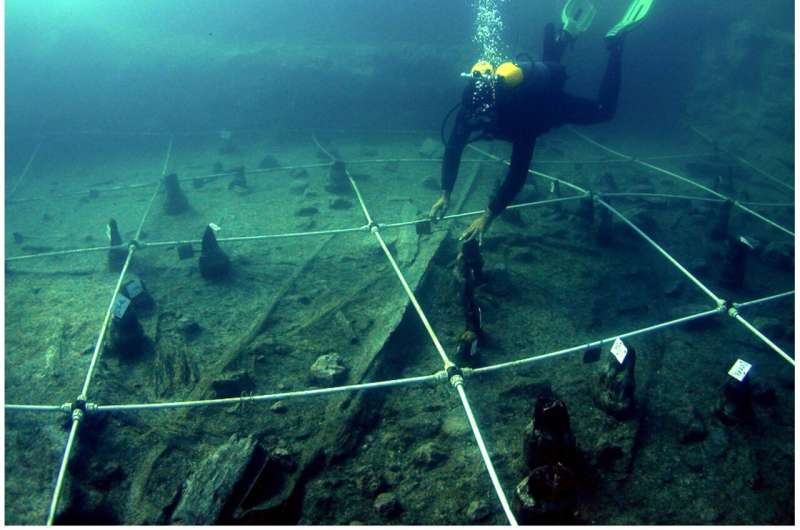
More than 7,000 years ago, people navigated the Mediterranean Sea using technologically sophisticated boats, according to a study published March 20, 2024, in the open-access journal PLOS ONE by Juan F. Gibaja of the Spanish National Research Council, Barcelona and colleagues.
Many of the most important civilizations in Europe originated on the shores of the Mediterranean Sea. During the Neolithic, communities clearly traveled and traded across the water, as evidenced by watercraft in the archaeological record and the presence of settlements on coasts and islands. In this study, Gibaja and colleagues provide new insights into the history of seafaring technology through analysis of canoes at the Neolithic lakeshore village of La Marmotta, near Rome, Italy.
Excavation at this site has recovered five canoes built from hollowed-out trees (dugout canoes) dating between 5700 and 5100 BC. Analysis of these boats reveals that they are built from four different types of wood, unusual among similar sites, and that they include advanced construction techniques such as transverse reinforcements.
One canoe is also associated with three T-shaped wooden objects, each with a series of holes that were likely used to fasten ropes tied to sails or other nautical elements. These features, along with previous reconstruction experiments, indicate these were seaworthy vessels, a conclusion supported by the presence at the site of stone tools linked to nearby islands.
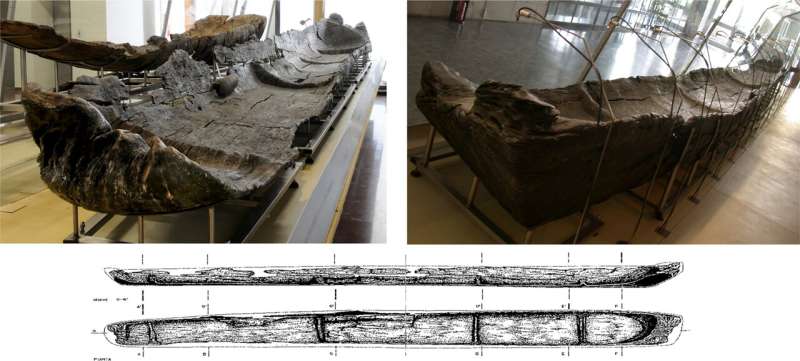
The authors describe these canoes as exceptional examples of prehistoric boats whose construction required a detailed understanding of structural design and wood properties in addition to well-organized specialized labor.
Similarities between these canoes and more recent nautical technologies support the idea that many major advances in sailing were made during the early Neolithic. The authors suggest there may be more boats preserved near La Marmotta, a potential avenue for future research.
The authors add, "Direct dating of Neolithic canoes from La Marmotta reveals them to be the oldest in the Mediterranean, offering invaluable insights into Neolithic navigation. This study reveals the amazing technological sophistication of early agricultural and pastoral communities, highlighting their woodworking skills and the construction of complex vessels."
Journal information: PLoS ONE
Provided by Public Library of Science
Explore further
Feedback to editors

Researchers explain the dissimilar smells of babies and teenagers
1 minute ago

Using Twitter/X to promote research findings found to have little impact on number of citations
21 minutes ago

Discovery of a hidden quantum critical point in two-dimensional superconductors

Scientists uncover evidence that microplastics are contaminating archaeological remains

Study shows how the chemical properties of RNA molecules could have facilitated the origin of life

Research unravels the enigma of curly birch and suggests marker to recognize it at the sprout stage
30 minutes ago

Bees need food up to a month earlier than provided by recommended pollinator plants, study reveals
40 minutes ago

Unintentional generation of PCBs may be producing more of the chemicals than before ban

Downscaling storage devices: Magnetic memory based on the chirality of spiral magnets

Fast folding for synthetic peptides and microproteins
Relevant physicsforums posts, unlocking the secrets of prof. verschure's rosetta stones.
17 hours ago
Iceland warming up again - quakes swarming
19 hours ago
Higher Chance to get Lightning Strike by Large Power Consumption?
Mar 20, 2024
A very puzzling rock or a pallasite / mesmosiderite or a nothing burger
Mar 16, 2024
Earth's earliest forest discovered in SW England
Mar 8, 2024
La Cumbre volcano eruption, Fernandina, Galapagos Islands
Mar 4, 2024
More from Earth Sciences
Related Stories

Scientists try out Stone Age tools to understand how they were used
Feb 19, 2024

Neolithic necklace from child's grave reveals complex ancient culture
Aug 2, 2023

European immigrants introduced farming to prehistoric North Africa, new research shows
Jan 30, 2024

Evidence of the oldest hunter-gatherer basketry in southern Europe discovered
Sep 28, 2023

Closer look at the Menga dolmen shows it was one of the greatest engineering feats of the Neolithic
Dec 5, 2023

Environmental stress rather than genetics influenced height differences in early Neolithic people: Study
Dec 12, 2023
Recommended for you

Shakespeare's sister: Digital archives reveal hidden insights into world-famous playwright's unknown sibling
18 hours ago

Plant material on obsidian blades on Rapa Nui suggests settlers there visited South America and returned
Mar 21, 2024

Toba supereruption may have facilitated dispersal of modern humans out of Africa

New evidence suggests Ötzi the Iceman's tattoos were made using a single-pointed tool
Mar 19, 2024

Study reveals 'cozy domesticity' of prehistoric stilt-house dwellers in England's ancient marshland
Let us know if there is a problem with our content.
Use this form if you have come across a typo, inaccuracy or would like to send an edit request for the content on this page. For general inquiries, please use our contact form . For general feedback, use the public comments section below (please adhere to guidelines ).
Please select the most appropriate category to facilitate processing of your request
Thank you for taking time to provide your feedback to the editors.
Your feedback is important to us. However, we do not guarantee individual replies due to the high volume of messages.
E-mail the story
Your email address is used only to let the recipient know who sent the email. Neither your address nor the recipient's address will be used for any other purpose. The information you enter will appear in your e-mail message and is not retained by Phys.org in any form.
Newsletter sign up
Get weekly and/or daily updates delivered to your inbox. You can unsubscribe at any time and we'll never share your details to third parties.
More information Privacy policy
Donate and enjoy an ad-free experience
We keep our content available to everyone. Consider supporting Science X's mission by getting a premium account.
E-mail newsletter
The first Neolithic boats in the Mediterranean
Canoes from italy reveal early development of advanced nautical technology.
More than 7,000 years ago, people navigated the Mediterranean Sea using technologically sophisticated boats, according to a study published March 20, 2024 in the open-access journal PLOS ONE by Juan F. Gibaja of the Spanish National Research Council, Barcelona and colleagues.
Many of the most important civilizations in Europe originated on the shores of the Mediterranean Sea. During the Neolithic, communities clearly traveled and traded across the water, as evidenced by watercraft in the archeological record and the presence of settlements on coasts and islands. In this study, Gibaja and colleagues provide new insights into the history of seafaring technology through analysis of canoes at the Neolithic lakeshore village of La Marmotta, near Rome, Italy.
Excavation at this site has recovered five canoes built from hollowed-out trees (dugout canoes) dating between 5700-5100BC. Analysis of these boats reveals that they are built from four different types of wood, unusual among similar sites, and that they include advanced construction techniques such as transverse reinforcements. One canoe is also associated with three T-shaped wooden objects, each with a series of holes that were likely used to fasten ropes tied to sails or other nautical elements. These features, along with previous reconstruction experiments, indicate these were seaworthy vessels, a conclusion supported by the presence at the site of stone tools linked to nearby islands.
The authors describe these canoes as exceptional examples of prehistoric boats whose construction required a detailed understanding of structural design and wood properties in addition to well-organized specialized labor. Similarities between these canoes and more recent nautical technologies support the idea that many major advances in sailing were made during the early Neolithic. The authors suggest there may be more boats preserved near La Marmotta, a potential avenue for future research.
The authors add: "Direct dating of Neolithic canoes from La Marmotta reveals them to be the oldest in the Mediterranean, offering invaluable insights into Neolithic navigation. This study reveals the amazing technological sophistication of early agricultural and pastoral communities, highlighting their woodworking skills and the construction of complex vessels."
- Ancient Civilizations
- Anthropology
- Origin of Life
- Lost Treasures
- Paleontology
- Neandertal interaction with Cro-Magnons
- Homo (genus)
- Homo heidelbergensis
- Neanderthal
- Recent single-origin hypothesis
- Homo antecessor
Story Source:
Materials provided by PLOS . Note: Content may be edited for style and length.
Journal Reference :
- Juan F. Gibaja, Mario Mineo, Francisco Javier Santos, Berta Morell, Laura Caruso-Fermé, Gerard Remolins, Alba Masclans, Niccolò Mazzucco. The first Neolithic boats in the Mediterranean: The settlement of La Marmotta (Anguillara Sabazia, Lazio, Italy) . PLOS ONE , 2024; 19 (3): e0299765 DOI: 10.1371/journal.pone.0299765
Cite This Page :
Explore More
- Five Factors to Ensure an Infant Thrives
- Fast-Charging Lithium-Sulphur Batteries
- Weight Loss Caused by Common Diabetes Drug
- The Milky Way's Earliest Building Blocks
- Say Hello to Biodegradable Microplastics
- Bacteria and Human Colorectal Cancers
- Harnessing Hydrogen at Life's Origin
- How Thick Is the Ice On Europa?
- 'Odor Sensor' Male/ Female Blood Pressure
- Ancient Star Formed in Another Galaxy
Trending Topics
Strange & offbeat.

7000-year-old boats prove Neolithic sailors were master shipbuilders
H ow often do you think about the engineering that goes into the boats we take for granted? Probably not a lot. Yet over 7,000 years ago, people were building remarkably seaworthy canoes using the limited tools of the Neolithic Era . A fascinating discovery in Italy highlights their incredible ingenuity and offers a glimpse into the hidden history of sailing.
For centuries, historians believed the Minoans of Crete, famed for their naval power around 2000 BC, were Europe’s pioneering seafarers. But a new study published in the journal PLOS ONE shakes up that timeline. Researchers analyzed dugout canoes from an ancient Italian settlement, revealing seafaring technology far earlier than previously thought.
Archaeologists working at an ancient Italian site have unearthed a fleet of canoes dating back over 7,000 years, demonstrating astonishingly advanced nautical skills during the Neolithic period.
A lakeside time capsule
Nestled near Rome, the ancient village of La Marmotta has become a goldmine for understanding prehistoric life. Excavations spearheaded by Dr. Juan F. Gibaja of the Spanish National Research Council have unearthed a treasure trove of perfectly preserved Neolithic canoes. These meticulously crafted boats date back as far as 5700 BC and tell an extraordinary story of maritime innovation.
Unlike the simple hollowed-out log canoes you might imagine, the La Marmotta vessels were engineering marvels. Built using four different types of wood, they featured advanced structural elements like internal supports. The discovery of T-shaped wooden tools featuring patterns of holes was even more compelling. Researchers theorize these mysterious implements were key parts of the rigging for sails or other advanced nautical applications.
The analysis concludes these sophisticated vessels were not simply riverboats but were sturdy enough for open-water voyages, potentially explaining the spread of stone tools from nearby islands to the La Marmotta site.
Rethinking the Neolithic
This discovery challenges long-held beliefs about the technological limitations of early societies. “These aren’t your grandfather’s canoes,” says Dr. Gibaja. “They reveal extraordinary woodworking skills, specialized labor organization, and an intimate understanding of seafaring needs far surpassing what was previously understood about this era.”
The La Marmotta find suggests groundbreaking maritime innovations like the sail may have emerged centuries earlier than thought, opening the door to a complete reassessment of trade, cultural exchange, and expansion across the Mediterranean during this pivotal time.
The researchers believe that La Marmotta may still hold more secrets, with the potential for more boats to be preserved in its vicinity. As we continue to delve into our past, we gain a deeper appreciation for the ingenuity and resourcefulness of our ancestors, reminding us that the spirit of exploration and innovation is deeply rooted in our history.


IMAGES
VIDEO
COMMENTS
The best catamarans for sailing around the world include: Lagoon 42. The Fountaine Pajot Ipanema 58. Manta 42. Catana 50. Dolphin 42. Gunboat 62. These cats focus on speed, safety, and comfort for longer journeys. This article will show you the seventeen best catamarans for long journeys, and why they're the best.
Lagoon 380. The long-time best-seller from the world leader in catamarans, with more than 1,000 produced over almost 20 years from 1999. With its characteristic vertical windows, the 380 and its ...
The best production blue water cruising catamarans are the Manta 42, the Lagoon 42, the Leopard 45, the Lagoon 450, and the Prout 45. ... This vessel, while on the smaller end for cruising catamarans, is quite seaworthy and handles well in all conditions. The Manta 42 is powerful—it has a large sail area for its size, which gives it ...
Photo: Leopard Catamarans. Displacement: 14.5 tons Beam: 24ft 2in Draft: 4ft 11in Features: Forward-facing cockpit, 3 or 4 cabins, 8 to 12 berths, up to 4 heads, up to 5 showers, 2 45hp engines, 780L water capacity, 700L fuel capacity. The big unique selling point of this best catamaran for sailing around the world is the forward-facing cockpit - a shaded and well-ventilated area to relax ...
Fountaine Pajot, one of the foremost builders of sailing catamarans, unveiled their biggest "Super Catamaran" ever: the Thira 80. The release comes on the tail of an ever-increasing trend in the catamaran market—the bigger-the- better era. With Sunreef, Lagoon, and Gunboat all making boats in the 70 to 80-foot range, these companies ...
The catamaran is also equipped with a powerful engine that provides excellent speed and maneuverability. Safety and seaworthiness of Leopard 48. The Leopard 48 is a safe and seaworthy catamaran that is designed to handle even the toughest ocean conditions. It has a sturdy construction and a stable platform that provides excellent stability and ...
Gemini 105M Courtesy of Gemini Catamarans. Pioneering catamaran sailor, builder and designer Tony Smith launched the first of his 33-foot Gemini 105M's (10.5 meters = 33′) in 1993, and soon after found a ready and willing stream of sailors enamored of the boat's compact size, affordable price tag, and such innovations as the nifty lifting rudder and transom steps.
Leen 56. The Leen 56 power trimaran is a long-range cruising multihull, perfectly capable of transatlantic voyages or living aboard in high latitudes. Built in a highly efficient, new hybrid composite panel system, this power trimaran has a range of 5,000 miles and may only be fueled up once a year. 3. Gallery.
But all that has changed. Today, big, spacious, safe, seaworthy catamarans are gracing the oceans in ever increasing numbers, and their positive attributes are hard to argue with, even for the most die-hard of monohull enthusiasts (see our article discussing why more and more sailors are choosing to sail in a catamaran).
The best liveaboard catamarans are the Manta 42, the Nautitech 44, the Voyage 44, the Privilege 435, the Elba 35, and the Lagoon 380. These vessels are seaworthy, comfortable, and ideal for long-term living. We sourced the technical specifications of these vessels from maritime records and directly from sailboat manufacturers.
The Xc45 was the first cruising yacht X-Yachts ever built, and designed to give the same X-Yachts sailing experience for sailors who'd spent years racing 30/40-footer X- and IMX designs, but in ...
Seawind Catamarans have long been Australia's most popular cruising catamaran designs. With over 35 years experience in building the highest quality blue water catamarans. As already discovered by our growing family of adventurous and like minded Seawind fans the world over, a Seawind could be the ideal catamaran for you and your family!
Leopard Catamarans holds true to its global reputation for high quality and seaworthy yachts boasting generous equipment options and layouts designed with livability in mind. In addition to the sailing fleet, Leopard Catamarans also produces superior power catamarans which are both contemporary and economical.
Set sail to new horizons from the power and beauty of Leopard Catamarans. Sea-trialed and tested off the coast of South Africa, Leopard Catamarans are known the world over for extraordinary craftsmanship and optimal performance. Both sailboat and power catamaran lines are built with flexibility for the modern seafarer and offer a range of equipment and layout options designed with your journey ...
The Aquila 36 is the first vessel in the builder's series with outboard power. Aquila Boats. The Aquila 36 is a departure from her sisterships in that she is an outboard-powered, express-cruiser-style catamaran, but she also adheres to MarineMax's philosophies.. With a single main living level from bow to stern and a beam of 14 feet 7 inches, the Aquila 36 is like a bowrider on steroids.
Seaworthy. Simple. Affordable. Building your own boat with Wharram Designs is the easiest and most cost effective way to fulfil your sailing dreams. Wharram Self-build boat plans start from only £120. Wharram designs are based on years of practical, hands-on experience of building and ocean sailing catamarans.
There has been a steady improvement in the understanding of the factors required to make a multihull both safe and fast, resulting in boats that are extremely seaworthy, as will be demonstrated by the following analysis. The basic types of Multihull are as follows. Obviously these are the extremes, and many boats will fall between the categories.
When it comes to choosing boats, I vouch for going small. And I'm not alone. Many world cruisers - those who venture on long offshore passages, rather than staying by the coast - choose these seaworthy designs. Being comfortable at anchor or having a spacious cockpit for entertaining guests isn't as important as staying safe while sailing.
June 15, 2022. Catamarans aren't the most common ocean-crossing sailboats, but they're surprisingly safe and capable offshore. Catamarans are safe for ocean crossings. In fact, catamarans are often much safer than similarly-sized monohulls offshore. Safety comes from increased motion comfort, great stability, speed, and excess buoyancy due ...
Boatmarket - sale of Fountaine Pajot motor catamarans in Moscowhttp://www.boatmarket.ru/
More than 7,000 years ago, people navigated the Mediterranean Sea using technologically sophisticated boats, according to a study published March 20, 2024, in the open-access journal PLOS ONE by ...
The first Neolithic boats in the Mediterranean: The settlement of La Marmotta (Anguillara Sabazia, Lazio, Italy). PLOS ONE , 2024; 19 (3): e0299765 DOI: 10.1371/journal.pone.0299765
One of the earliest full band LIVE performances of Al Stewart's historical epic masterpiece... with lead guitar from Mark "Laurie" Wisefield of Wishbone Ash ...
H ow often do you think about the engineering that goes into the boats we take for granted? Probably not a lot. Yet over 7,000 years ago, people were building remarkably seaworthy canoes using the ...
Usain Bolt leaves it late but defends his 100m title at the 2013 World Championships in Moscow!#WorldChampionships #UsainBolt #Jamaica #IAAF #Athletics #Spri...
This video from AnalystZone walks you through the concept, principles and dos' and don'ts about using MoSCoW technique. A popular business/systems analysis t...